On September 6th this year, Huawei officially released the first pure electric vehicle model in its WenIMe series, the WenIMe M5 EV, at its autumn product launch event.
As an important part of Huawei’s HarmonyOS ecosystem in the automotive industry, the WenIMe M5 EV, like other WenIMe models, is equipped with HarmonyOS car systems that can be linked to other Huawei smart devices. However, the WenIMe M5 EV also features Huawei’s self-developed HUAWEI DriveONE pure electric drive smart platform and HUAWEI DATS dynamic adaptive torque system for the first time.
According to the descriptions at the launch event, the HUAWEI DATS dynamic adaptive torque system can improve vehicle handling and passenger comfort, as well as further improve the vehicle’s endurance.
At the same time, Yu Chengdong boasted at the event that this is the most beautiful pure electric SUV in the world, far ahead of its competitors in the same class.
So, was Yu Chengdong telling the truth, or bragging again? After we got the car, we conducted a detailed test. Now let’s take a look at the test results.
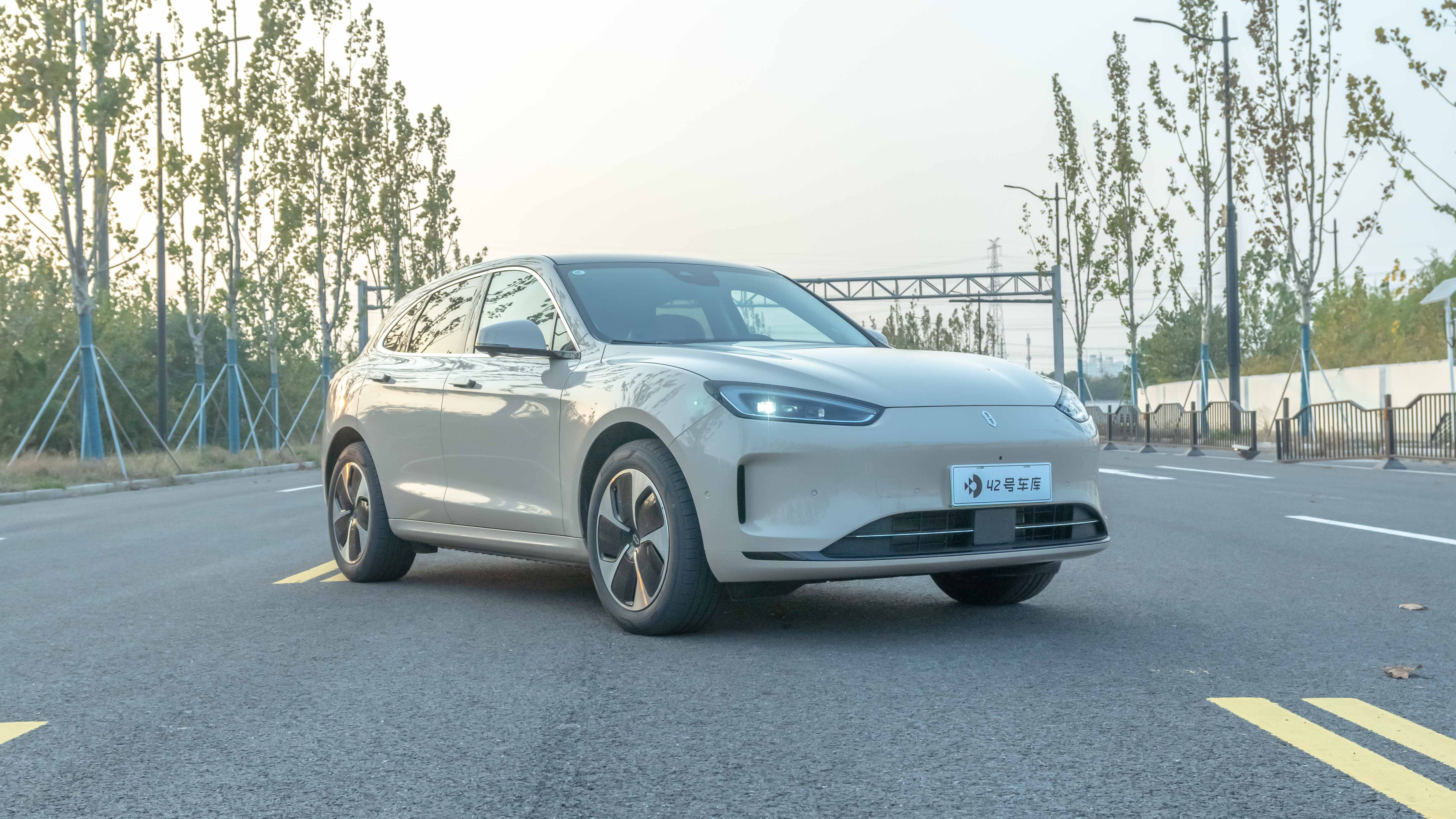
Endurance Test: More than 600 km endurance, yet still facing endurance anxiety?
The version of the WenIMe M5 EV used for this 42Test is the standard version with an 80 kWh lithium iron phosphate battery, and an official CLTC comprehensive working condition endurance of 620 km.
According to the standards of 42Test, the endurance test was divided into “high-speed working conditions” and “city working conditions.” Can Huawei’s self-developed HUAWEI DriveONE pure electric drive smart platform and HUAWEI DATS dynamic adaptive torque system make the M5 EV as “endurance anxiety-free” as it claimed at the launch event? Let’s take a look at its actual performance.
High-speed Endurance: Lower than Expected
The high-speed endurance route starts from our company garage on Beizhai Road, goes along the outer ring road to the G60 Shanghai-Kunming Expressway and goes all the way towards Jinhua, then returns to Shanghai via the Zhuji exit.
The temperature on the test day, November 9th, was 25℃. The air conditioning was set to summer standard: 22℃, 2nd gear, and AC on. The tire pressure was 2.7 bar. As the Comfort (Standard) driving mode does not support adjusting the regenerative braking strength, the personalized driving mode was used during the test with the acceleration mode set to standard and the energy recovery mode set to high.
The M5 EV supports the display of the comprehensive range, which is more in line with the actual performance of the vehicle’s range than the CLTC standard. Therefore, the entire display shows the comprehensive range.
After the vehicle is fully charged, the comprehensive range displayed is 510 km, and after driving 376.5 km on the highway, the remaining range displayed on the dashboard is 22 km. The first half of the highway on the day of the test was relatively smooth, with an average speed of over 105 km/h. The vehicle was more congested on the return journey, and some sections of the road were congested. The entire test took 3 hours and 50 minutes, with an average speed of 87 km/h.
The high-speed energy consumption of the M5 EV is 19.3 kWh, and the ratio of displayed range to actual power consumption is 1:1.29. Based on this data, the theoretical full-electric range of the standard M5 EV with an 80 kWh battery on the highway is 395 km.
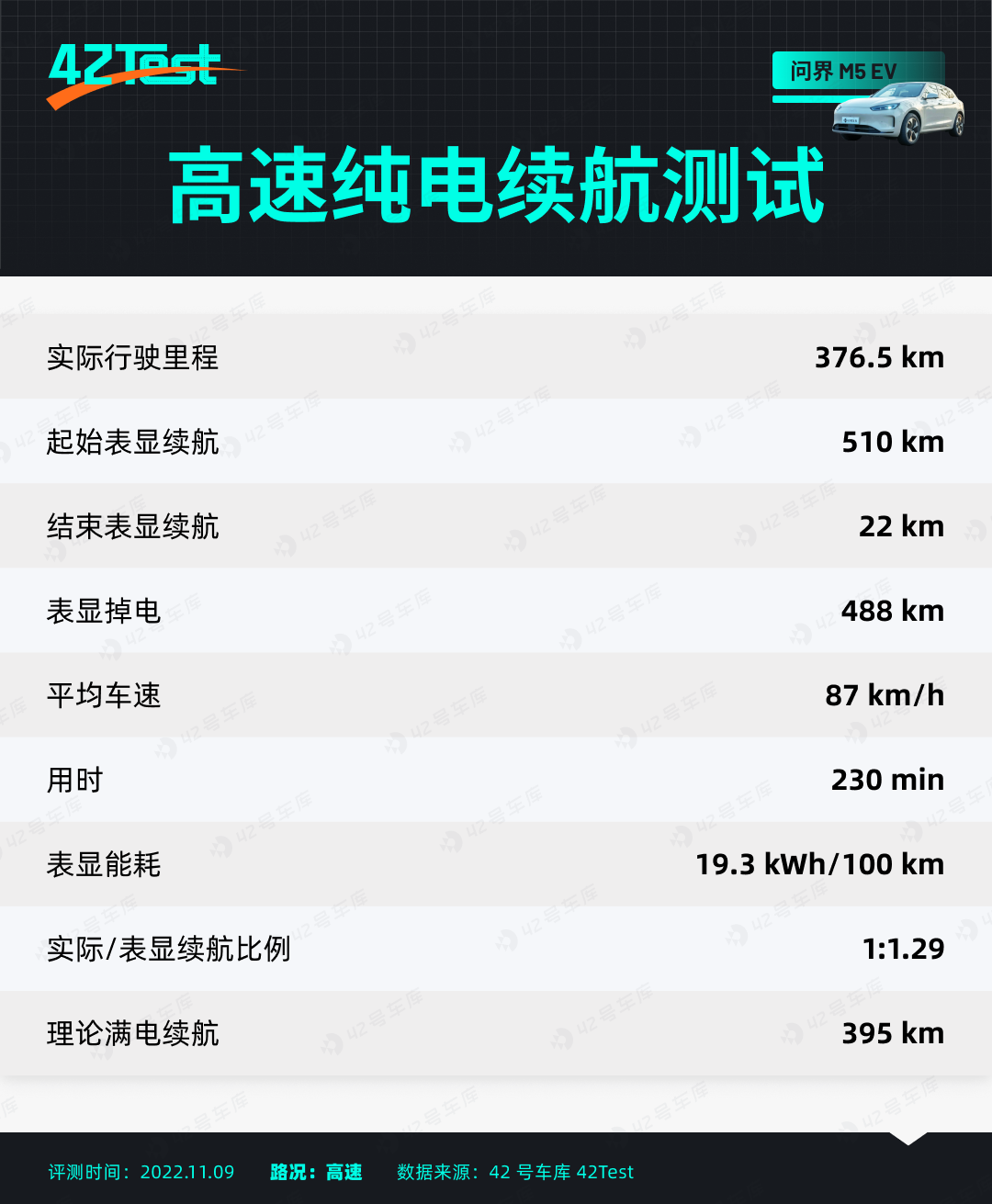
From the power consumption rate of every 10 km through the entire test, it can be seen that under relatively smooth conditions in the first half, the vehicle’s power consumption is around 14 km for every 10 km. When the speed is slower in the second half, the power consumption ratio is closer to 1:1.
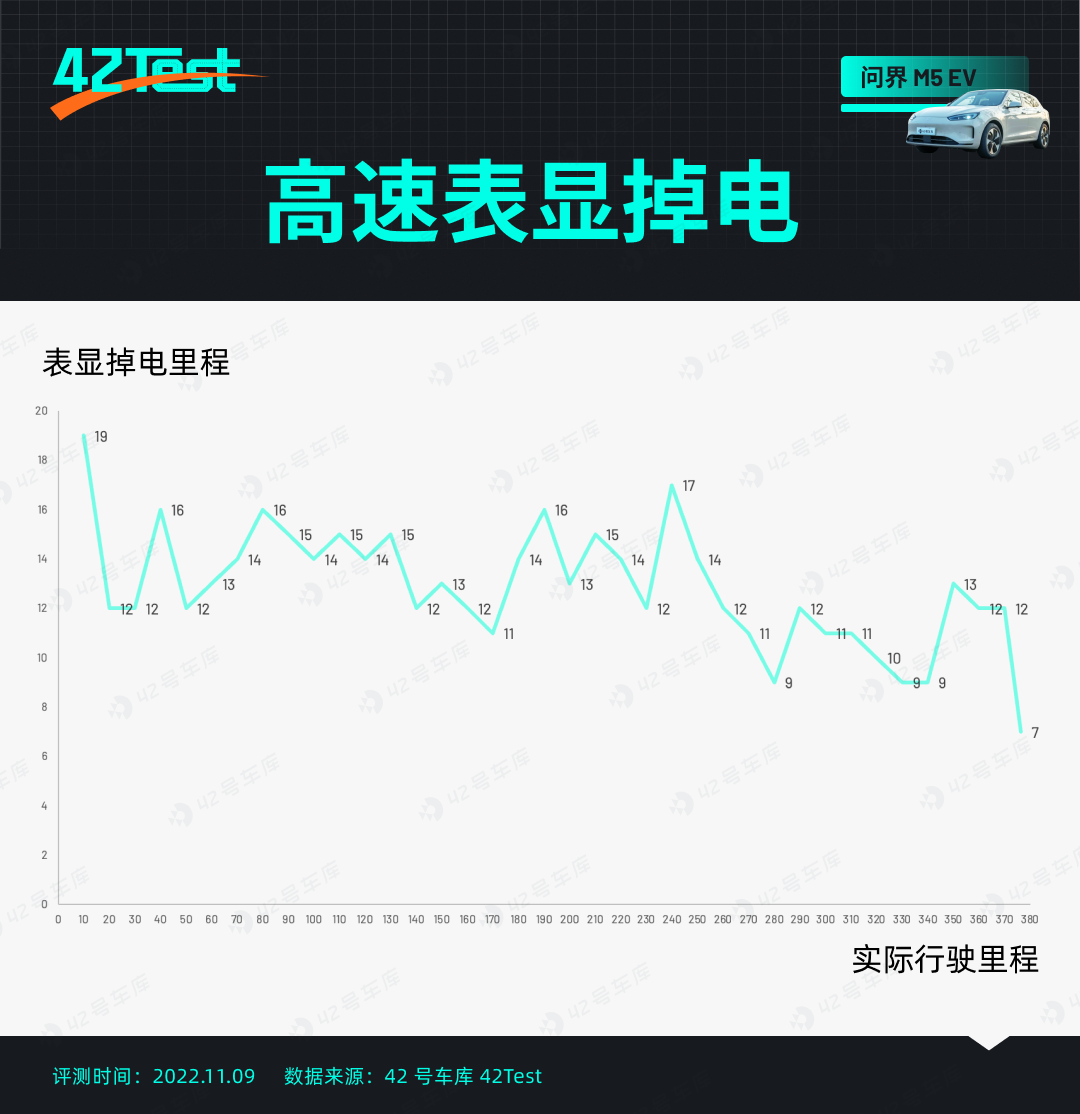
This range performance is slightly lower than our expectations. As it is a single motor version, we estimated before departure that its actual range should be around 420-430 km, but it did not even reach 400 km. We did not even make it to the G60 Maple Service Area as usual and had to stop at the Jiaxing Service Area.
City range: performance is acceptable
If the M5 EV’s high-speed range does not meet your expectations, then the actual range performance under city driving conditions may be more in line with your expectations.
According to 42Test’s testing standards, the city range test includes two parts: a 50 km ground route passing through Dingxi Road, Century Avenue, Xuhui Riverside, Wu Kang Building and other major traffic arteries; and driving around the outer ring high-speed with heavy trucks and complex road conditions for 100 km.The temperature on November 11th was 19 ℃ during the test. The car air conditioning was set to the summer standard: 22 ℃, 2nd gear, with AC on, and tire pressure was 2.7 Bar for both front and rear wheels. The personalized driving mode was selected, with acceleration mode set to standard and energy recovery set to high.
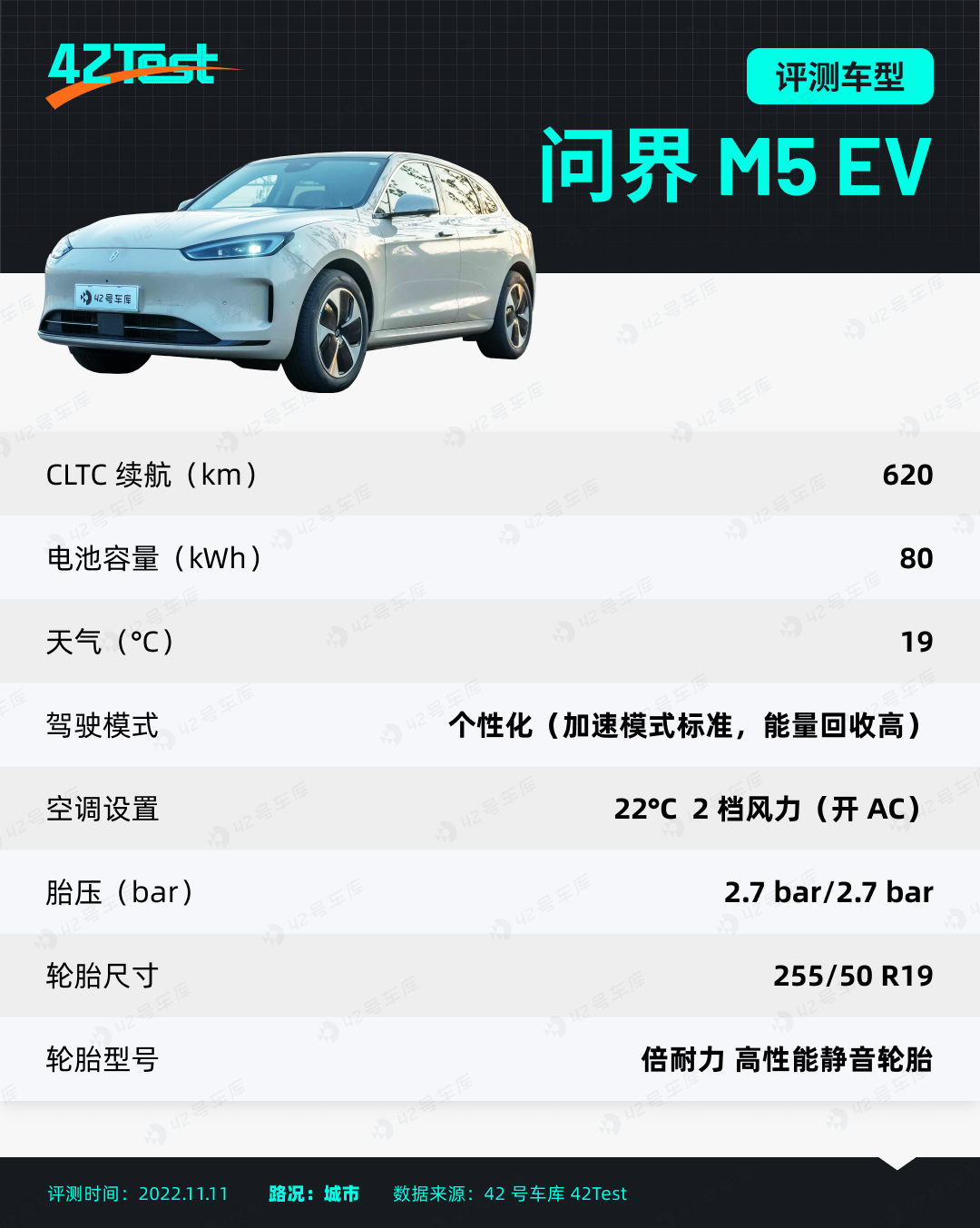
During the city driving range test, we drove a total of 150 km in 6 hours and 14 minutes. Due to heavy traffic and frequent stop and go conditions caused by traffic lights in the city, the average speed of the whole test was only 27 km/h.
The displayed range of the WENJIE M5 EV decreased by 179 km. In the outer ring road section, the average energy consumption was around 17 kWh/100 km. However, in the urban surface road, where traffic jams frequently occurred, the average energy consumption increased to 19 kWh/100 km and could exceed 20 kWh/100 km during peak traffic conditions. The ratio of displayed range to actual power reduction is 1:1.19, and the theoretical full range is 427 km.
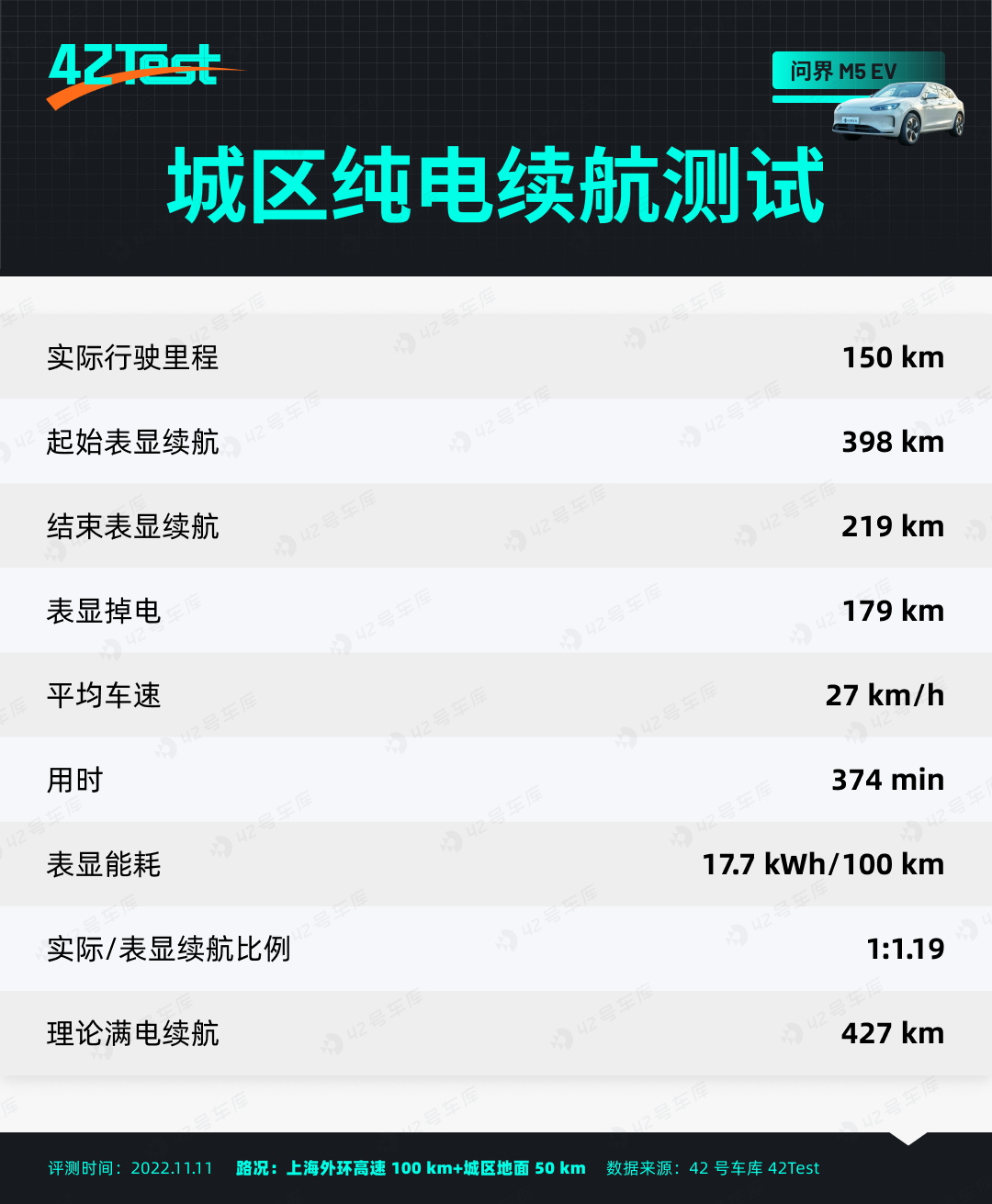
This time we placed the 100 km outer ring test at the front. From the power reduction ratio at every 10 km, it could be seen that the power reduction ratio in the first 100 km was mostly 1:1 due to smoother road conditions.
However, during the last 50 km, we encountered Friday’s heavy traffic and it took nearly 3 hours and 30 minutes to drive the last 50 km. Under such a traffic jam condition, the power reduction ratio of the vehicle was no less than that during high-speed driving.
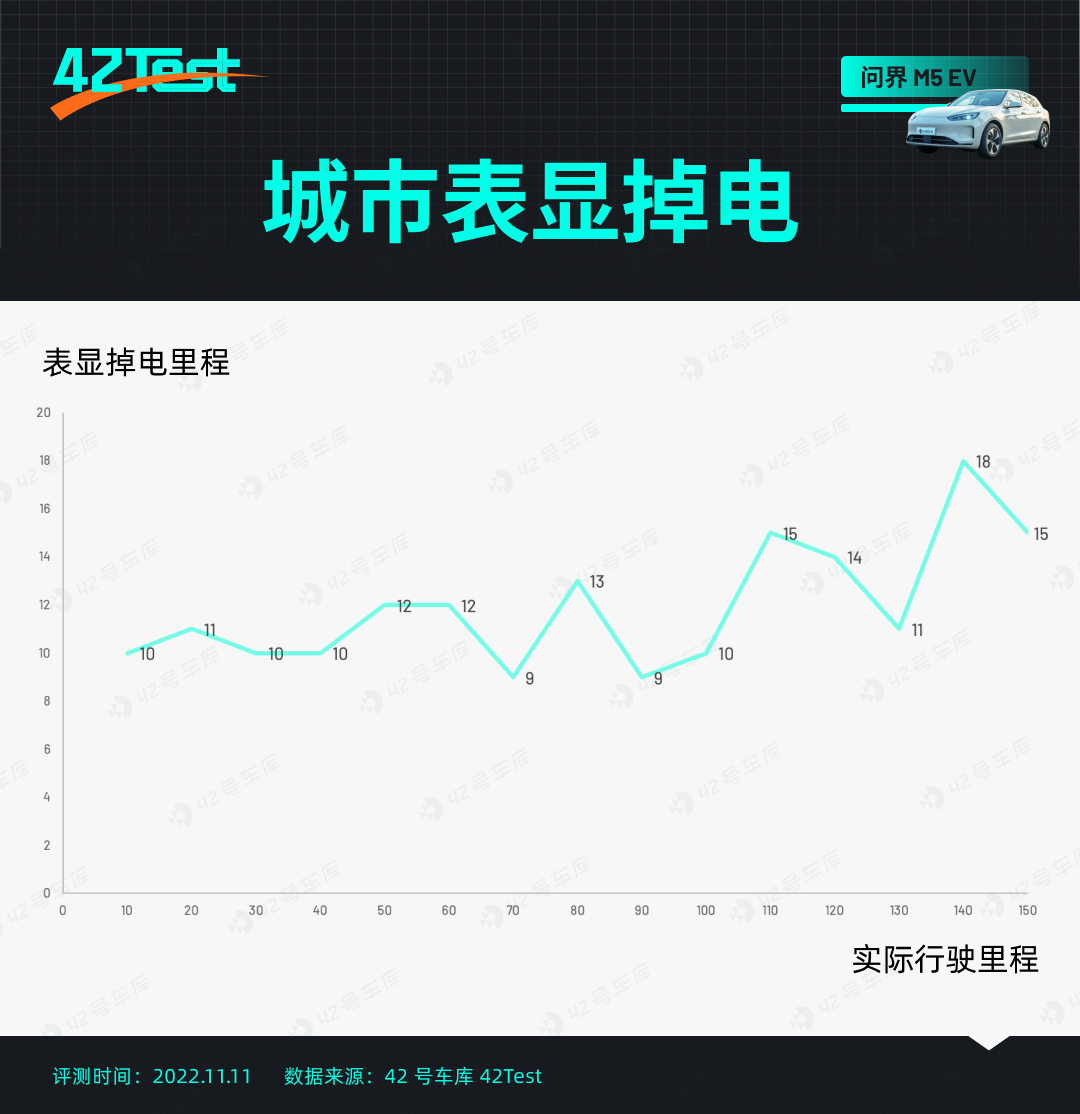
In summary, as a medium-sized SUV with a single electric motor, the range of the WENJIE M5 EV standard version in high-speed conditions is somewhat disappointing. When the speed reaches 110–120 km/h, the energy consumption can be as high as 20 kWh/100 km.But the performance of the endurance in urban conditions is good enough to meet most people’s commuting needs for five working days a week. However, energy consumption can still reach up to 20 kWh/100 km in traffic jams.
Charging Test: Don’t Overcharge
As Wanjie does not have its own charging station, we conducted the charging test for the Wanjie M5 EV at the Xiaojie charging station with a maximum charging power of 120 kW.
Although it is a dual-gun station with a power of 120 kW, the other charging gun was not in use during the test, so there was no power reduction due to distribution.

We started the charging from SOC 5%, and the initial charging power exceeded 100 kW. The power during the SOC 10-55% phase remained around 93 kW. When SOC approached 60%, the power dropped to around 87 kW, and when SOC approached 70%, the power dropped to below 80 kW. The charging power during the first 80% of fast charging was good.
However, once SOC reaches 80%, the charging power drops abruptly, directly dropping from nearly 80 kW to 34-35 kW. This increases the charging time in the later stage greatly. It takes 23 minutes to charge from 80% to 95%, and another 19 minutes to get from 95% to 100%. In other words, it takes as long as 42 minutes to charge from 80% to full.
Overall, the charging performance of the Wanjie M5 EV is within the normal level of the 400 V platform. Fast energy replenishment can be achieved before the 80% mark. However, charging speed is not satisfying after 80%, especially after 95%.
If there is no need to drive long distances, it is recommended to charge the battery to only 80-90% during routine charging, otherwise the time spent on trickle charging will be too long.
Performance and Driving: The Sportiest Wanjie
Driving Experience
This Wanjie M5 EV is a standard version with a single motor. Let’s briefly go over the mechanical parameters:
- Rear 200 kW permanent magnet synchronous motor, maximum power of 200 kW, maximum torque of 360 N·m, and 0 to 100 km/h acceleration in 7.1 seconds.- Front double wishbone rear multi-link suspension;
- HUAWEI DATS dynamic adaptive torque system.
Compared to the Wanjie M7, the M5 not only has a smaller body size but also has a front suspension changed from MacPherson strut to double wishbone, making M5 more fun to drive than M7.
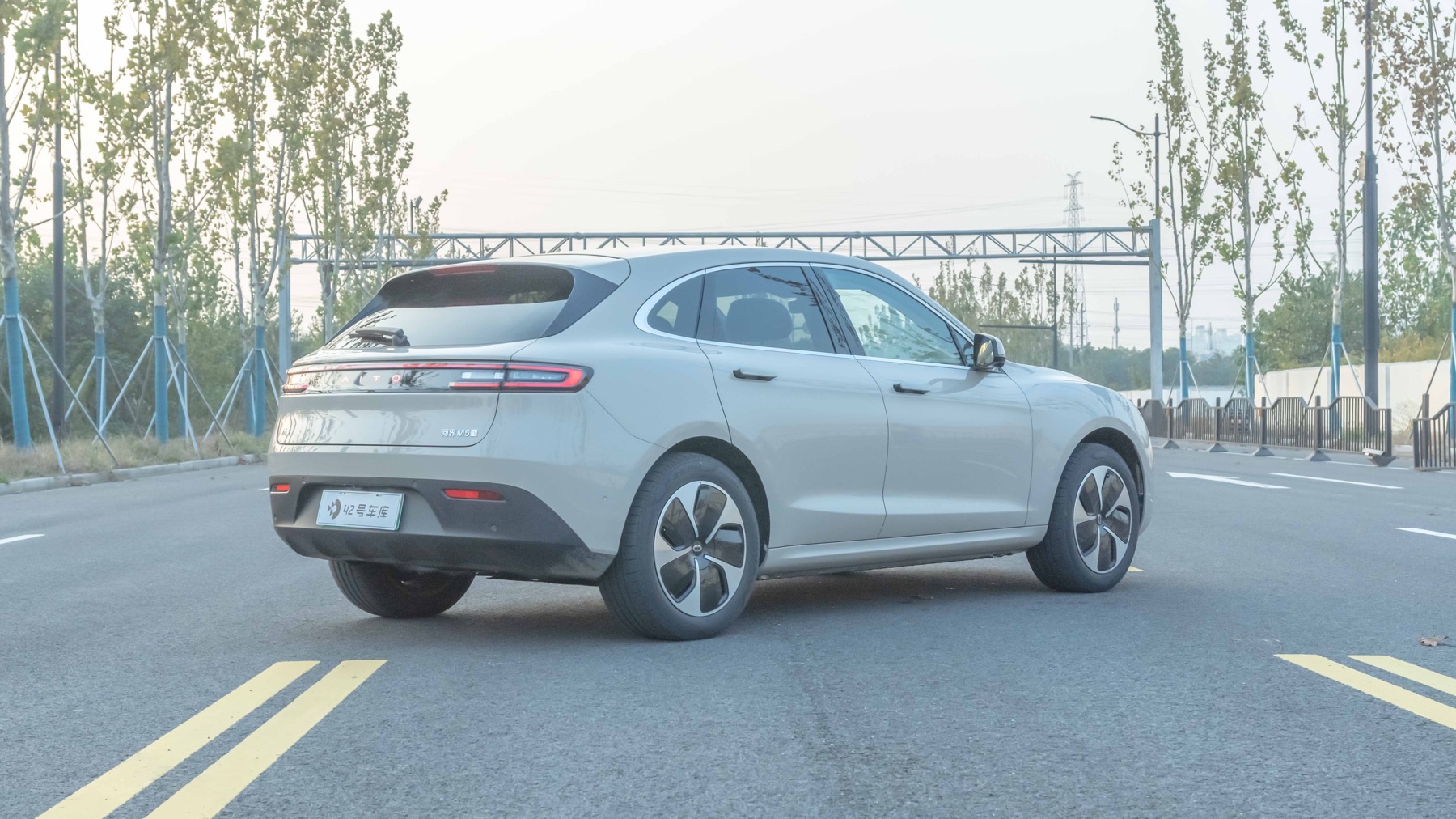
The tuning style of the M5 EV is more biased towards a sporty SUV, and the uniformity of the chassis and suspension is significantly better than that of the M7. Whether passing through speed bumps at low speeds or passing through potholes on the road at high speeds, the suspension does not produce any unnecessary shaking.
However, the steering feel of the M5 EV is noticeably light in the standard mode. It will be heavier in the sport mode, but compared to other sporty SUVs, it is still somewhat lighter, and it may make the driver feel less confident when making abrupt turns. And the steering feel can only be adjusted in the individualized mode, and is bound to the driving mode in other modes.
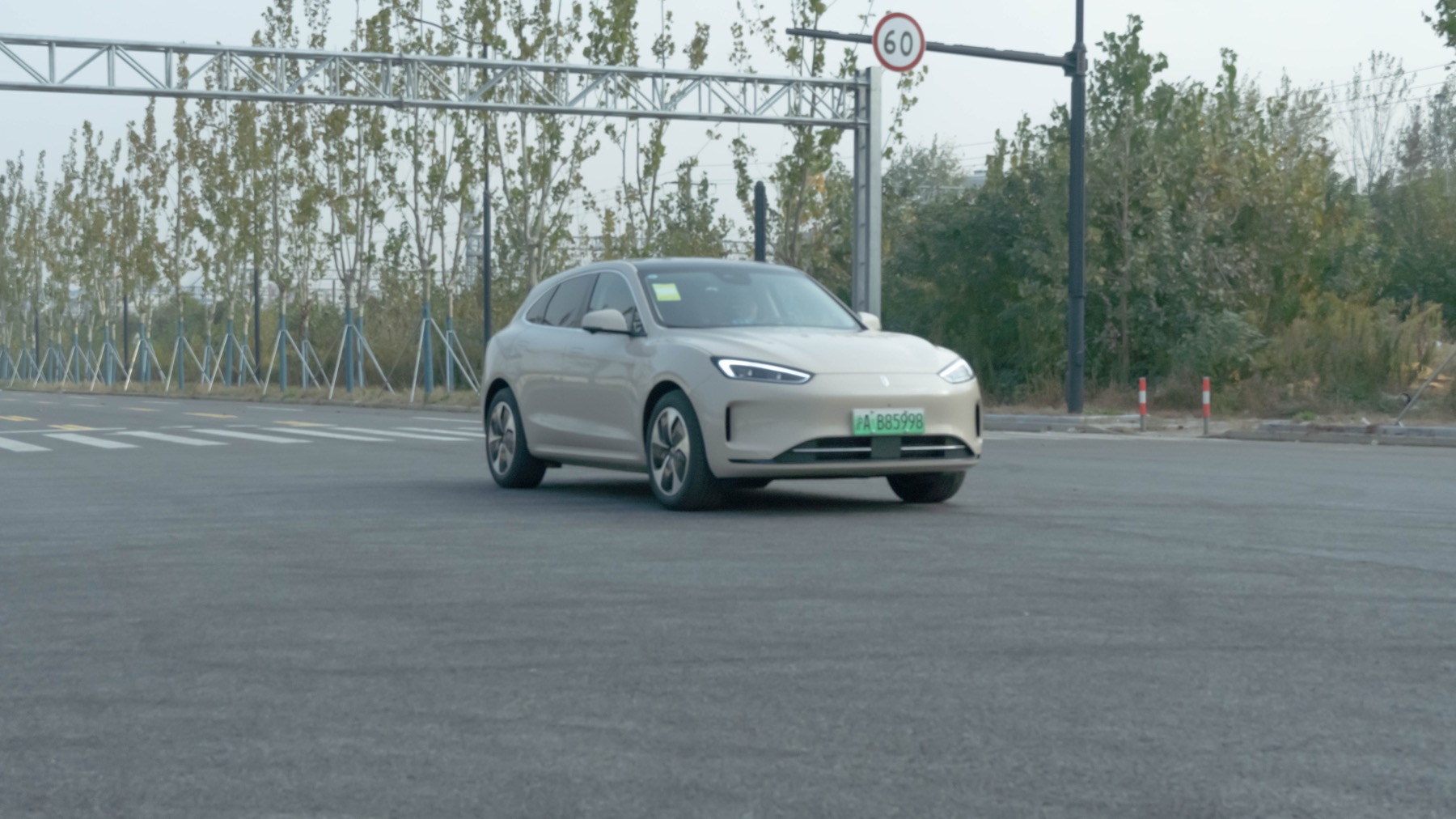
Also worth mentioning is the regenerative braking of the M5 EV. In the standard mode, it is almost imperceptible when releasing the accelerator pedal, which is basically the same as coasting in a fuel-powered car.
However, when adjusted to the strongest mode, the regenerative braking intensity in medium and low-speed states is greatly enhanced, which is very close to Tesla. Even drivers who usually drive electric cars may not be able to adapt quickly. Although the regenerative braking force is very strong, the vehicle will not come to a complete stop even if the pedal is completely released, but instead will slowly move forward at a deceleration of 3 km/h, and the driver needs to step on the brake to stop it.
In addition, the regenerative braking of the Wanjie M5 EV only has two adjustable levels, and it is recommended to add a middle level so that the regenerative braking force is neither too strong nor too weak.
Acceleration and Braking
As usual, our 42Test performance tests still use the “single occupant” condition. During the test, the remaining power of the Wanjie M5 EV standard version was 95%, the test temperature was 27 degrees Celsius, and the power mode was set to “Sport”. In a closed environment, we conducted 10 consecutive tests of hundred-kilometer acceleration and 10 consecutive tests of hundred-kilometer braking. The specific results are as follows.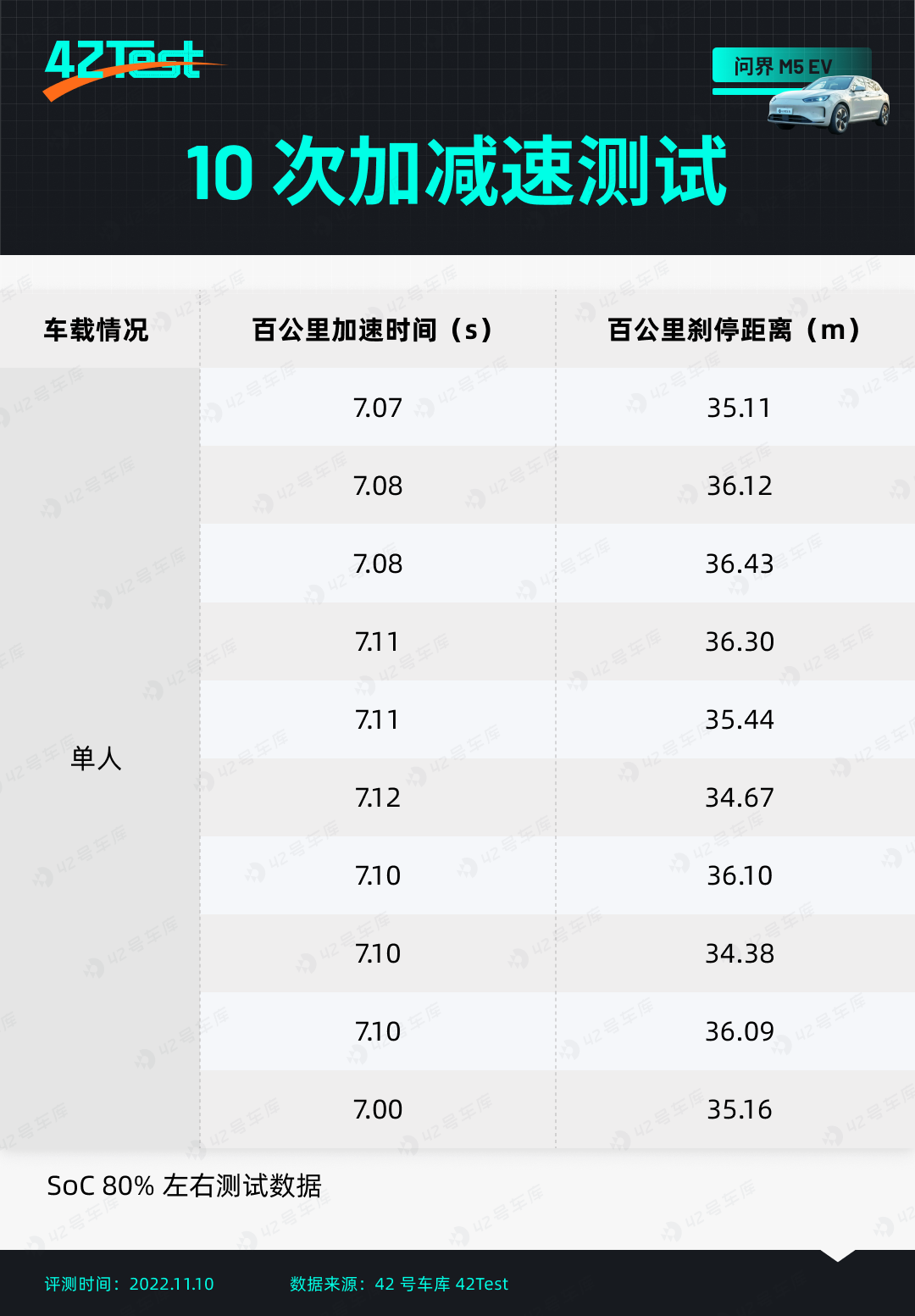
Stable test results were achieved in the M5 EV’s one hundred kilometer test, with the test data mostly around 7.1 seconds, consistent with official data, and the fastest result being 7.0 seconds.
During full acceleration of the M5 EV, the initial power output is not particularly strong, so the vehicle does not have an obvious lift. The power output from the middle and back sections is significantly stronger, which may be the control logic of HUAWEI DATS’s dynamic adaptive torque system.
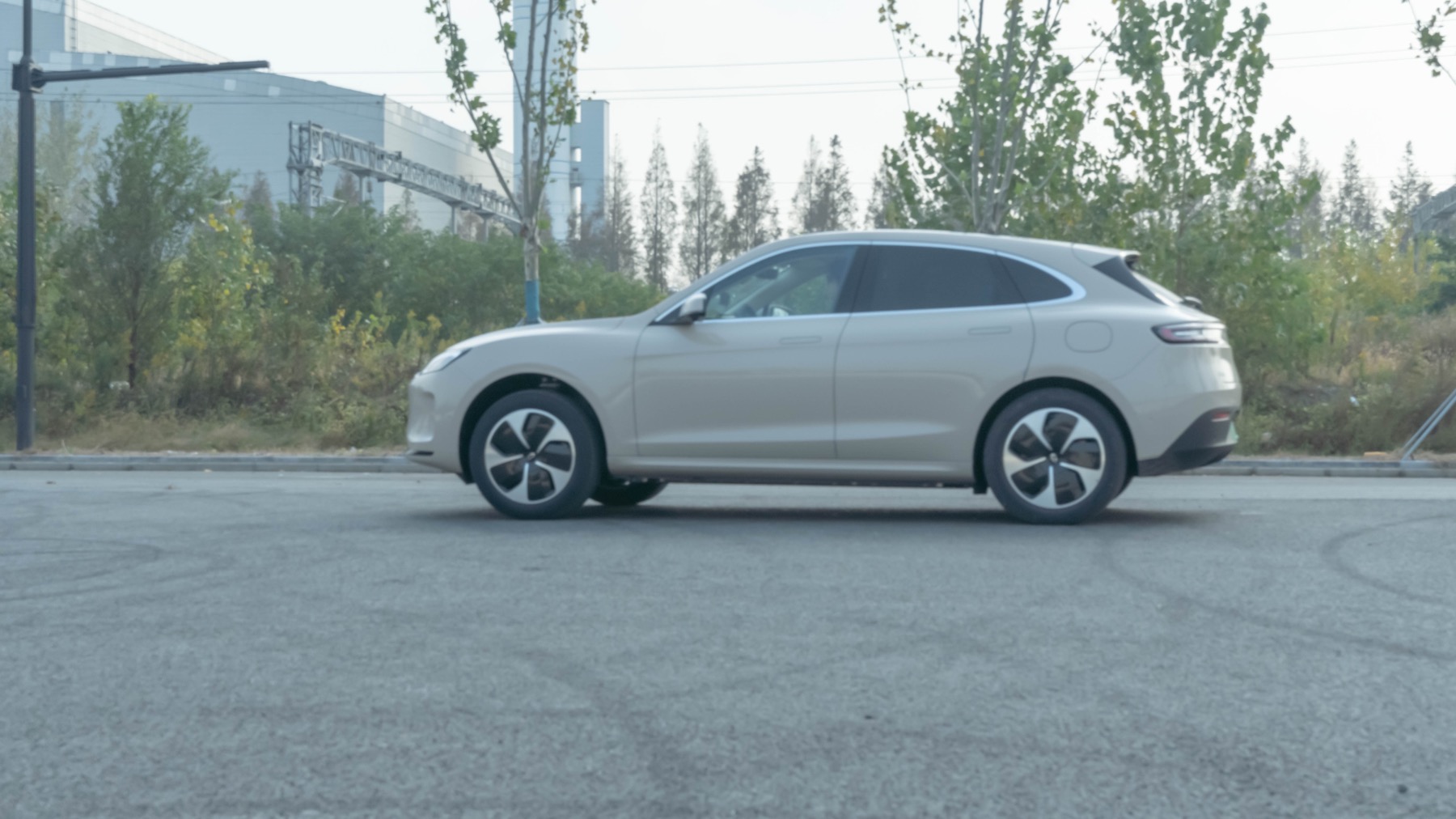
The one hundred kilometer stopping distance is somewhat unstable, with the shortest being only 34.38 meters and the longest being 36.43 meters, a difference of over 2 meters between two results. Furthermore, the time when the shortest result was achieved was later than the time when the longest result was achieved, and our tests were conducted on the same road section continuously, so we can eliminate the possibility of brake attenuation as the cause.
Our car is equipped with 255/50 R19 Pirelli P ZERO tires both front and back, which have excellent dry grip performance. However, since low-profile closed wheel hubs are used, we cannot confirm the brake caliper configuration with our own eyes.
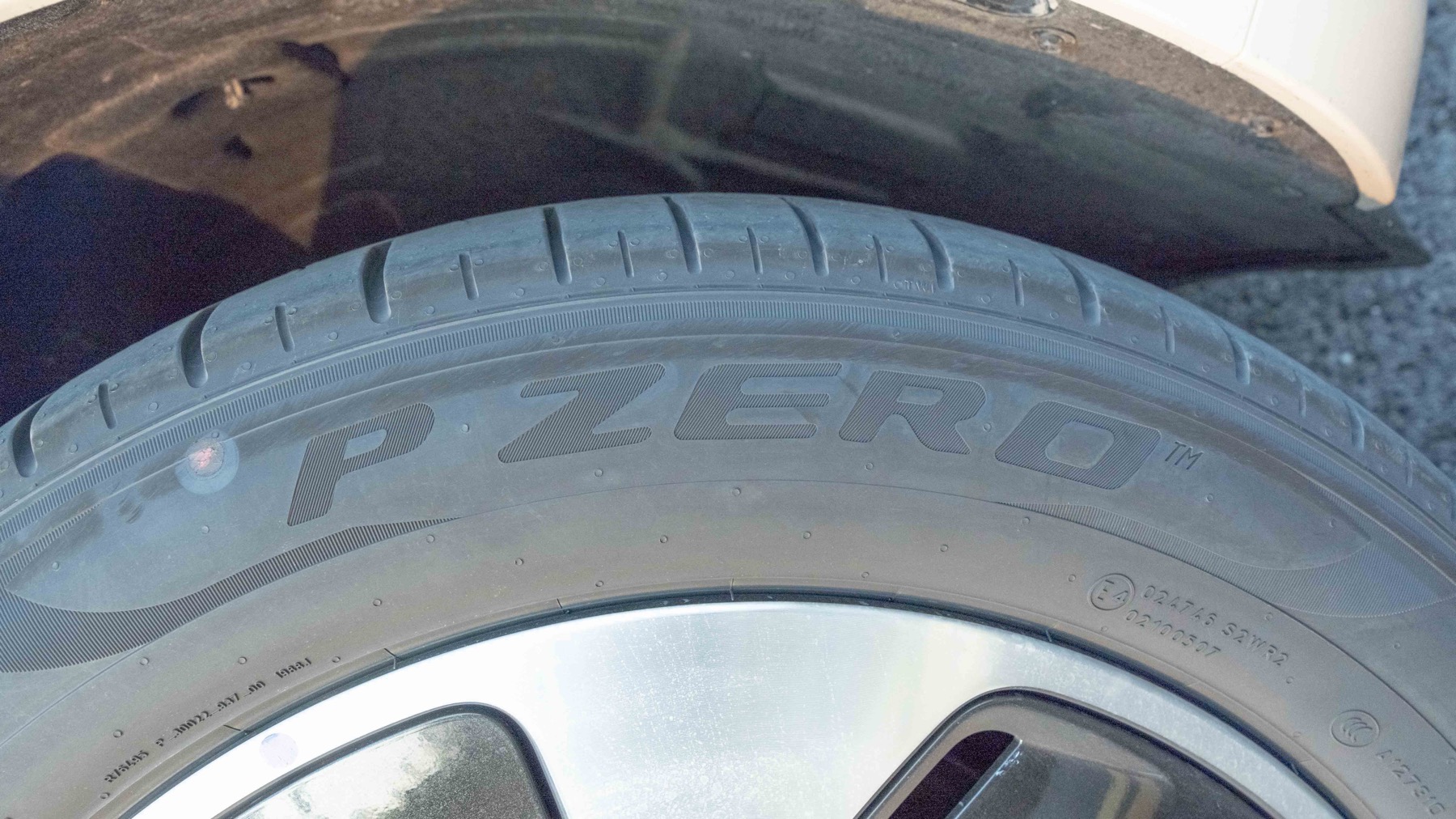
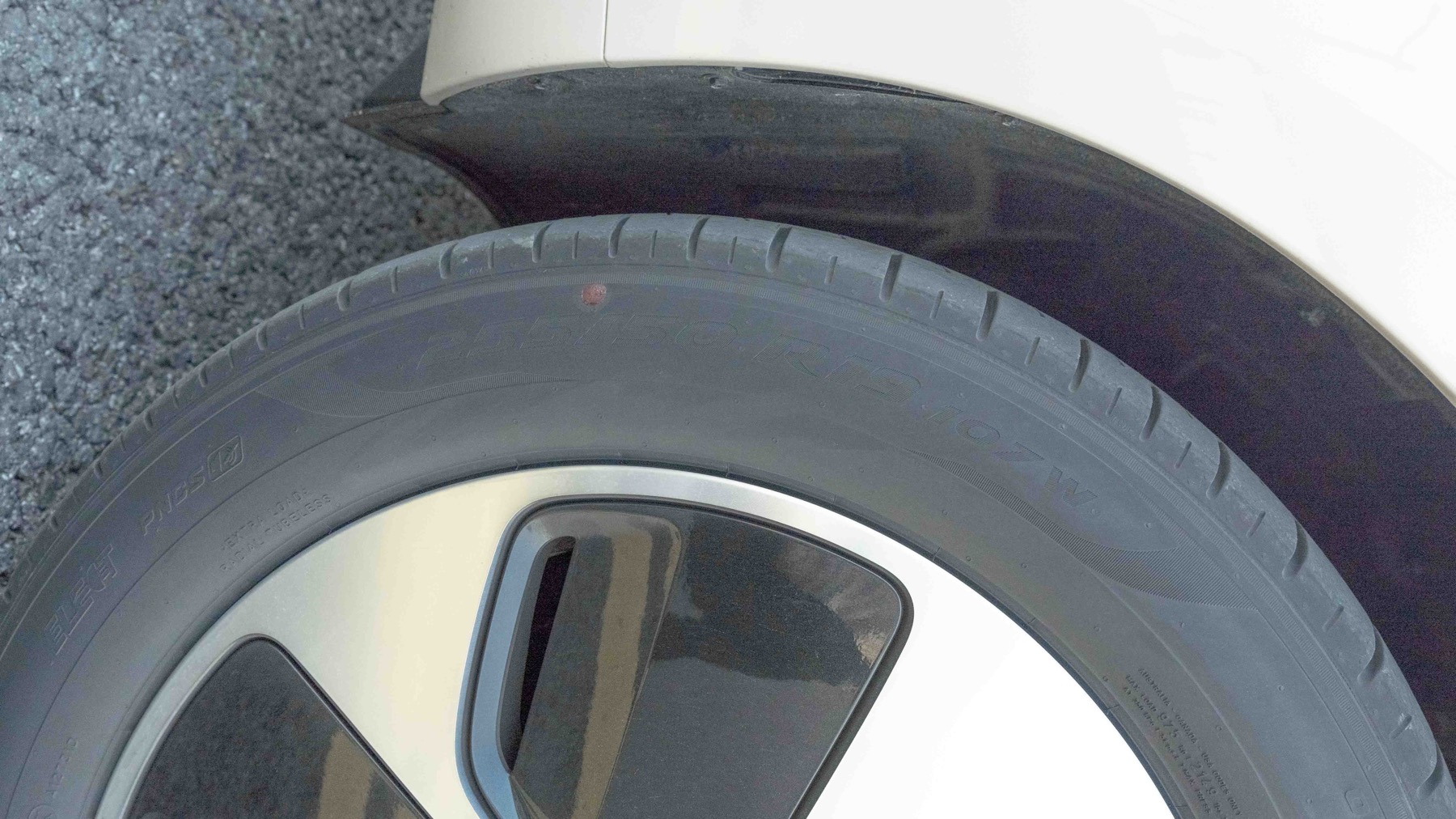
Double-layer laminated glass = Good NVH?
In the noise testing section, we close all windows, air conditioning, audio, and seat massage functions, as well as emptying the car to ensure that testing results are not impacted. We then drove at speeds of 60, 80, 100, and 120 km/h on a closed road and collected three samples of noise data for the driver’s ears at each speed, taking the average value. The specific results are as follows.
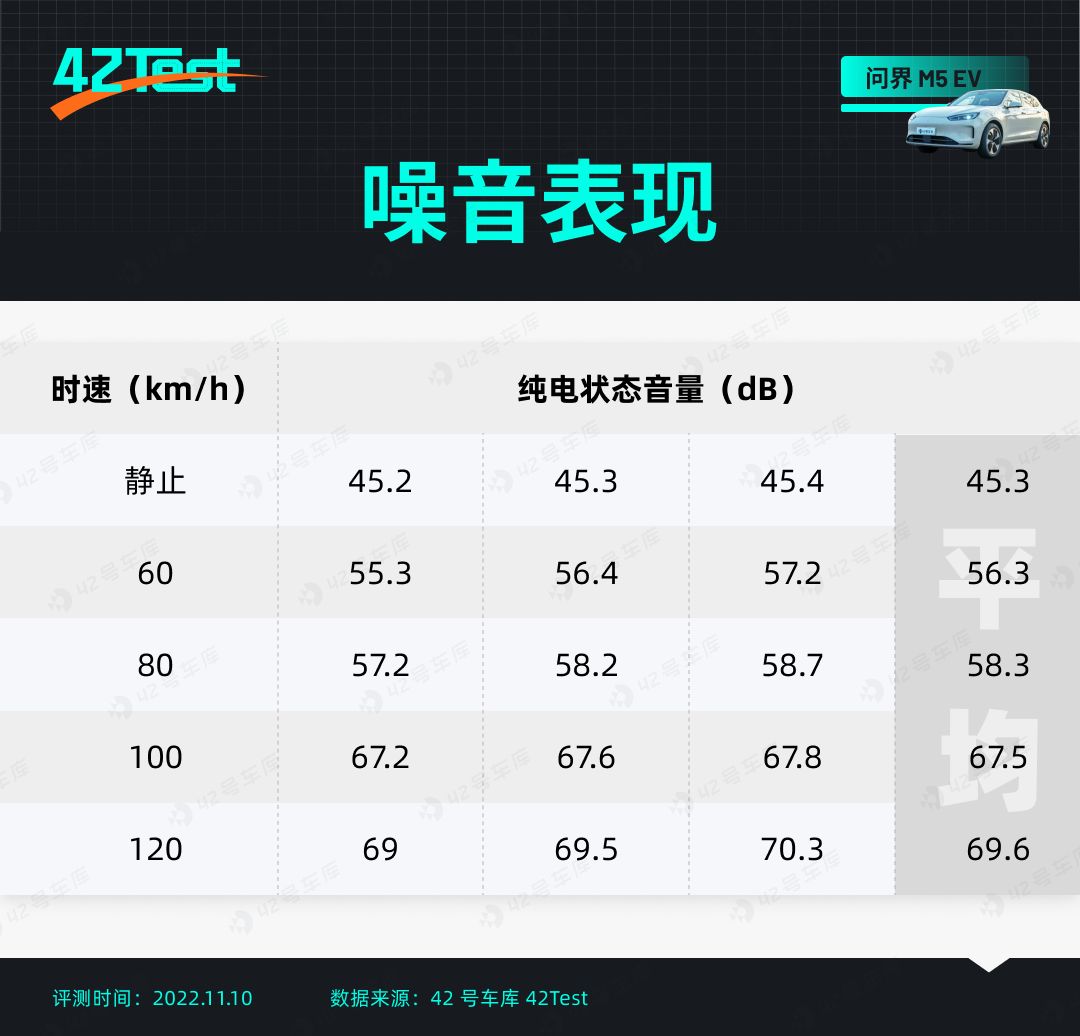 You can see that, with the use of double-layer laminated glass, the noise performance of M5 EV is still good at speeds below 100 km/h.
You can see that, with the use of double-layer laminated glass, the noise performance of M5 EV is still good at speeds below 100 km/h.
However, when the speed exceeds 100 km/h, the noise significantly increases, and it gets quite noisy at 70 dB at 120 km/h.
For those who have no concept of this data, I would like to share with you the noise data of ES7, which also uses double-layer laminated glass and framed doors for comparison. You can see that the ES7 is quieter at different speeds, especially at 100 km/h.
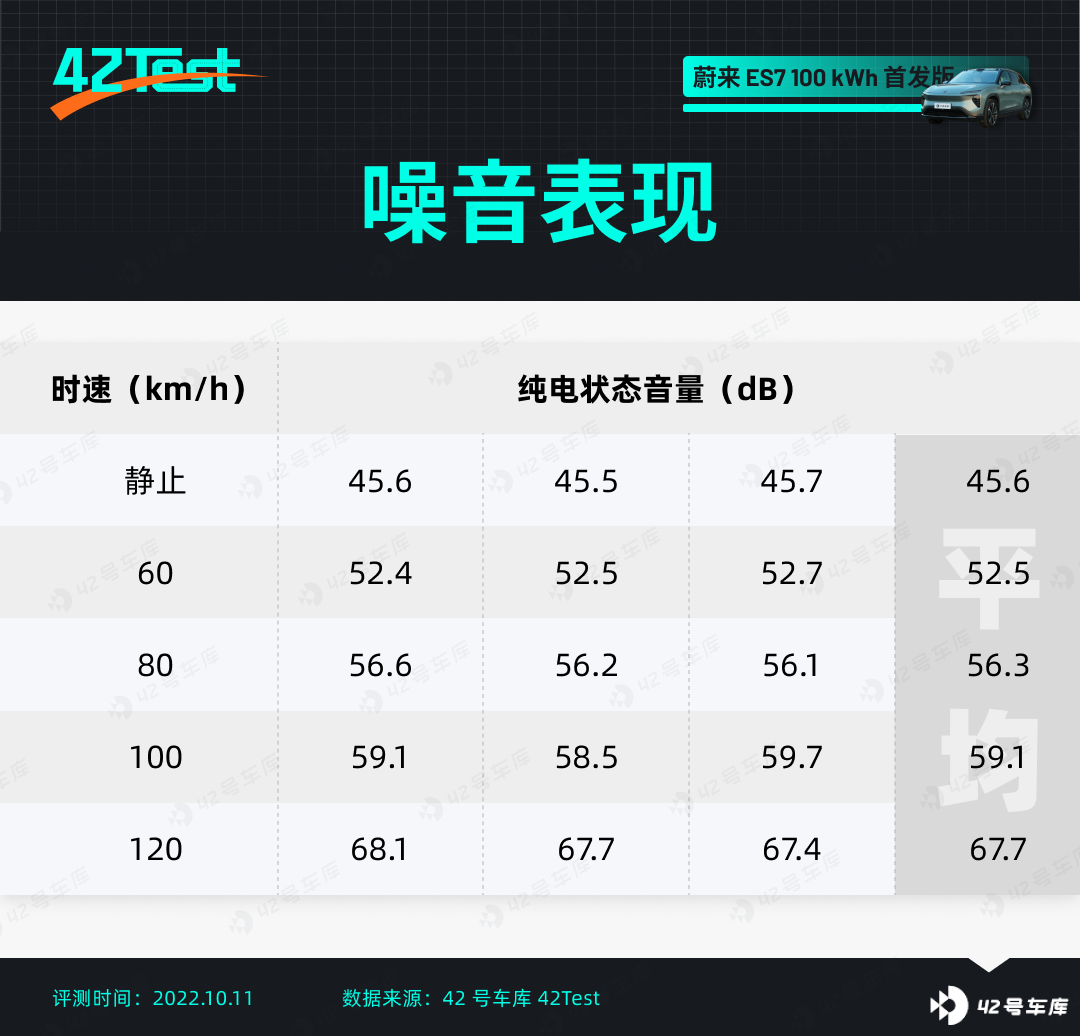
Appearance and Interior: Getting Younger
It has been more than two months since the official launch of WENJIE M5 EV, and there have been display cars in the stores for a long time. I believe that those who are interested in this car have already seen it in person.
Now, let me talk about the interesting parts of the appearance and interior of this car, as well as some details that you might have missed.
Appearance: More popular among women
The dimensions and wheelbase of WENJIE M5 EV are similar to those of Model Y, which is also a mid-sized SUV, as shown in the following figure.
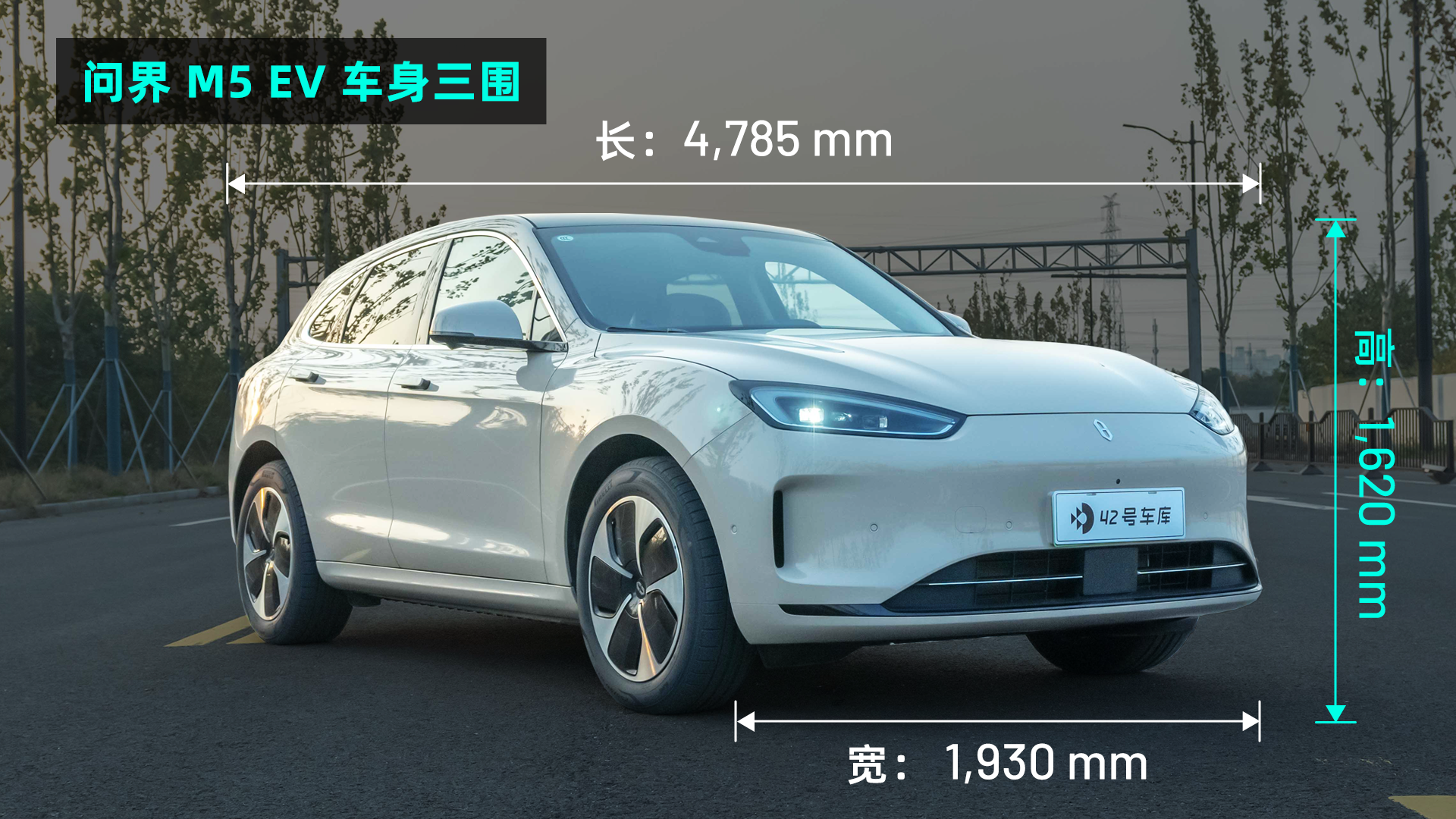

Looking at it from the front, the only difference between the M5 EV and the extended-range version of the M5 is the removal of the large middle grille and the replacement of it with an integral enclosed front face.
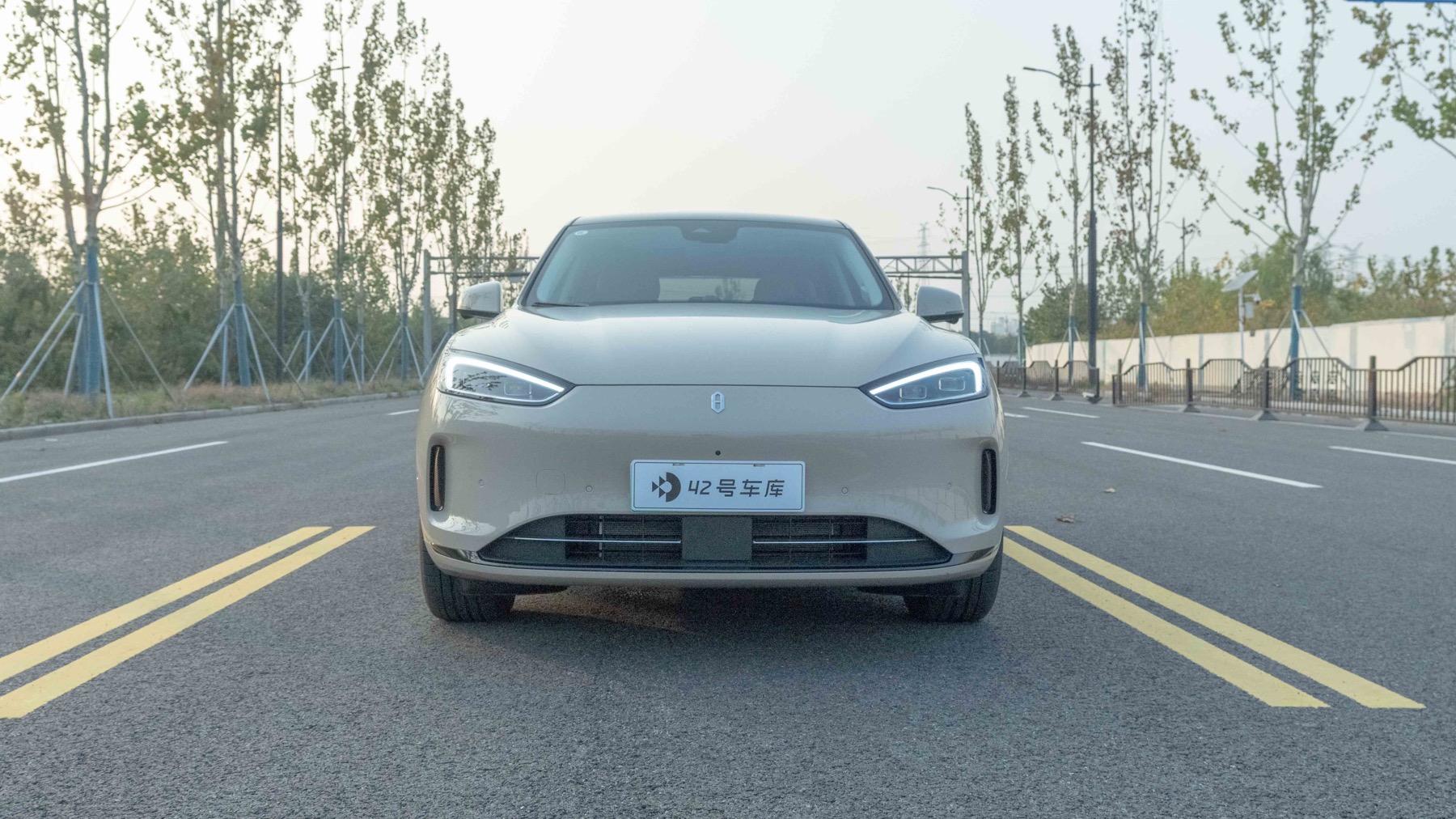
The headlight part looks no different from the extended-range version from a distance, but on a closer look, you can see that the EV version of the headlights uses a two-bulb design, and the side is also printed with the letters “AITO”.
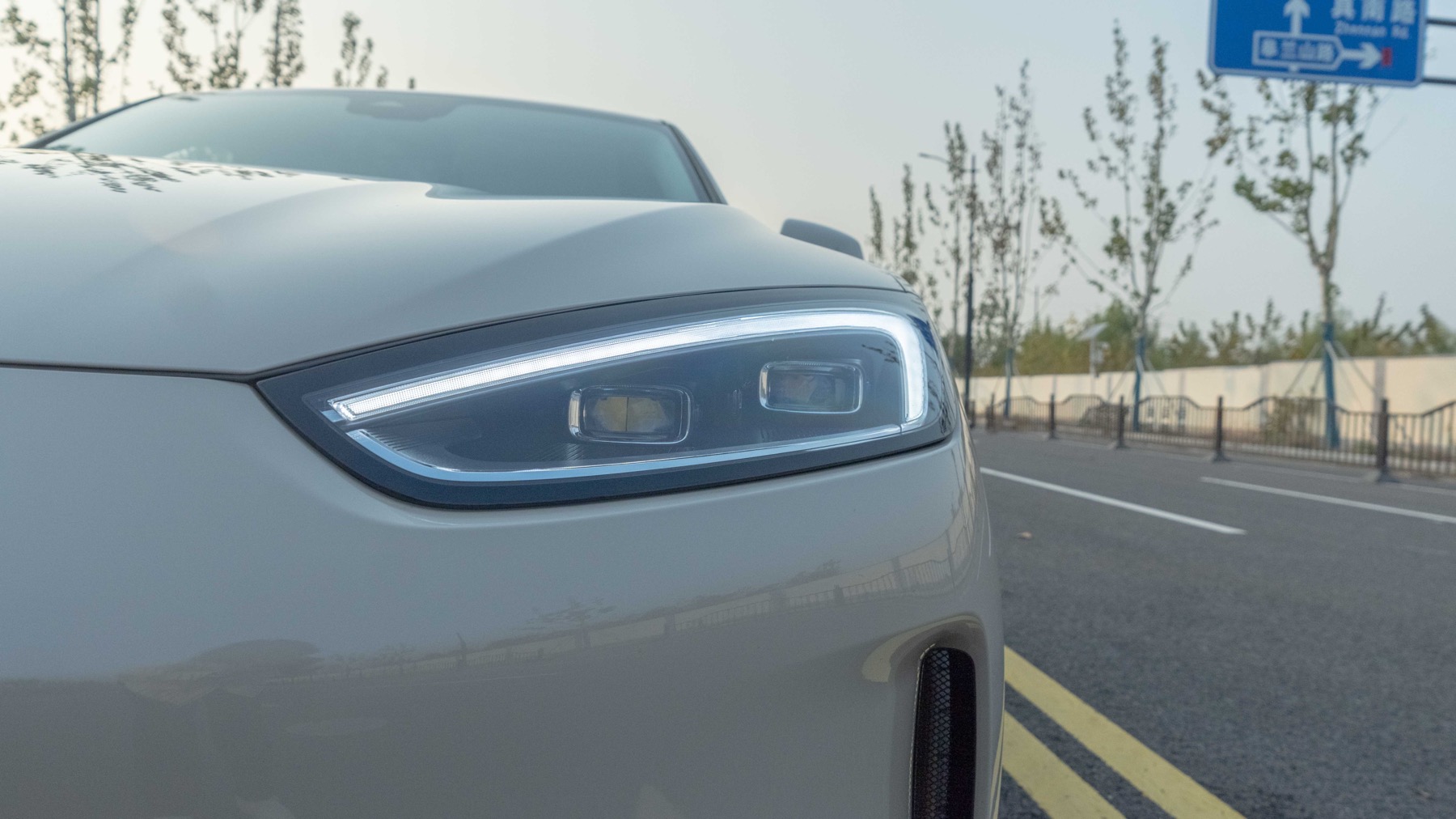
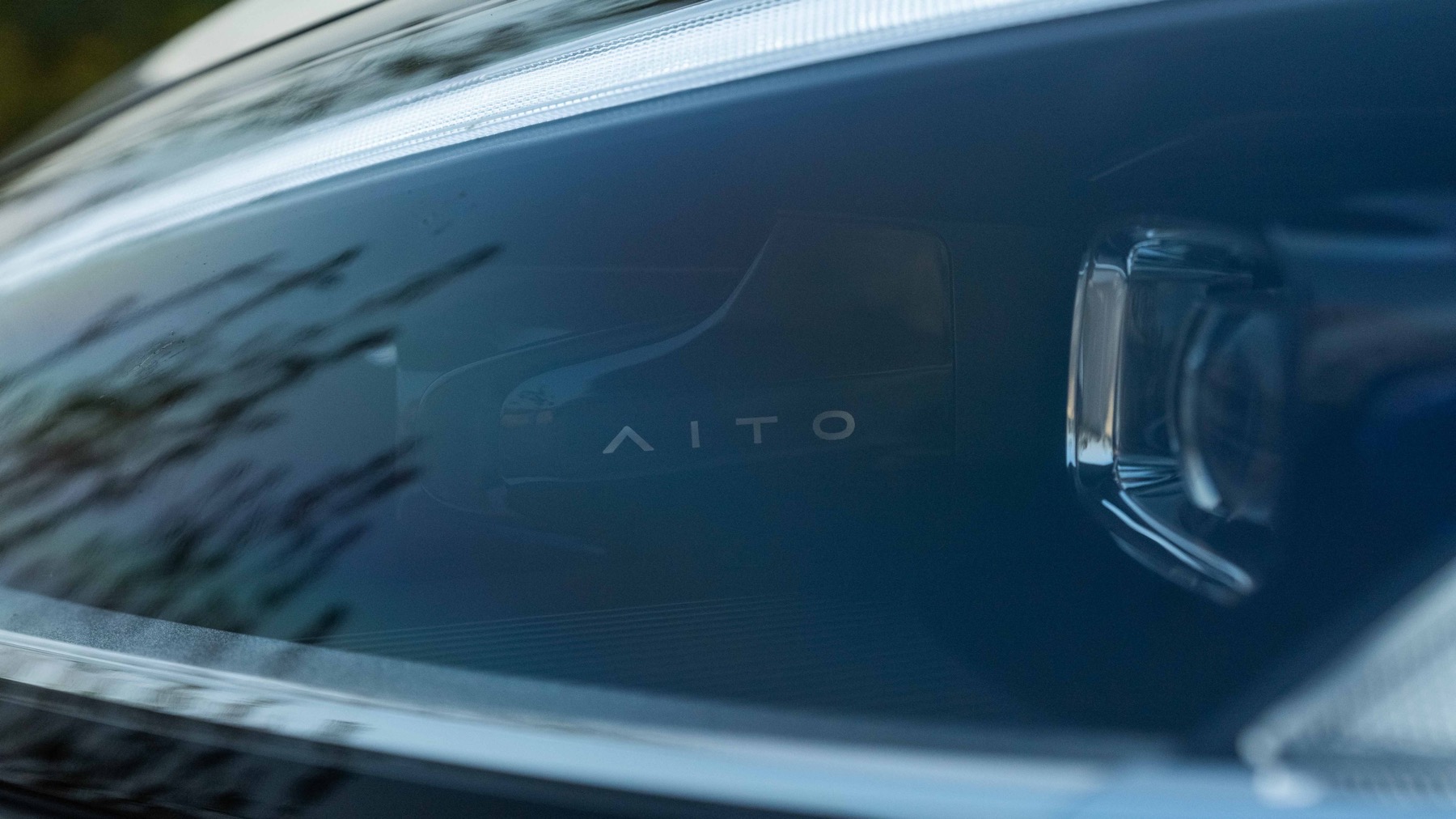
The air inlet is located below the license plate and has been reduced to the size of a normal pure electric vehicle. The forward-looking panoramic camera is placed above the license plate.
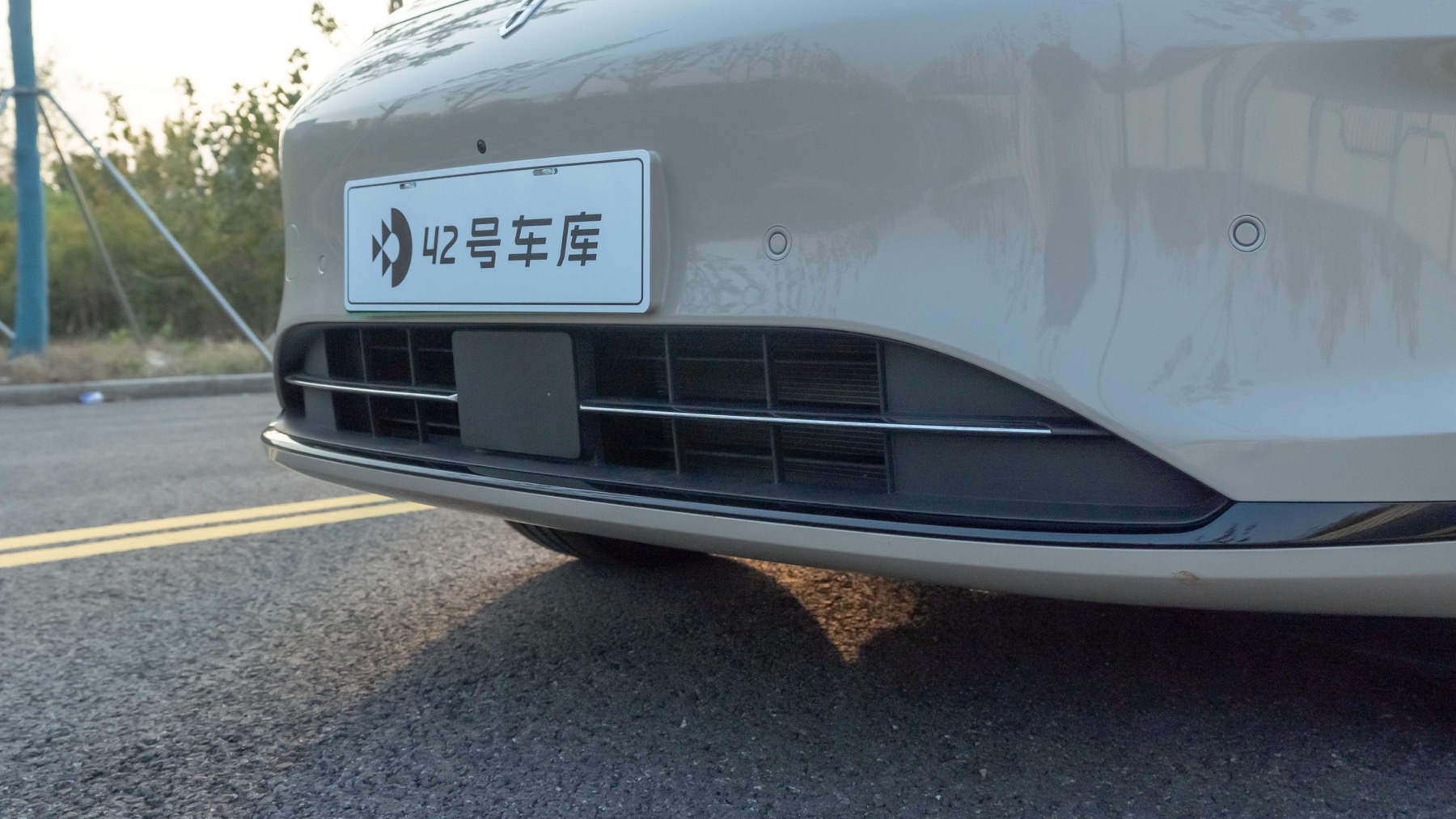
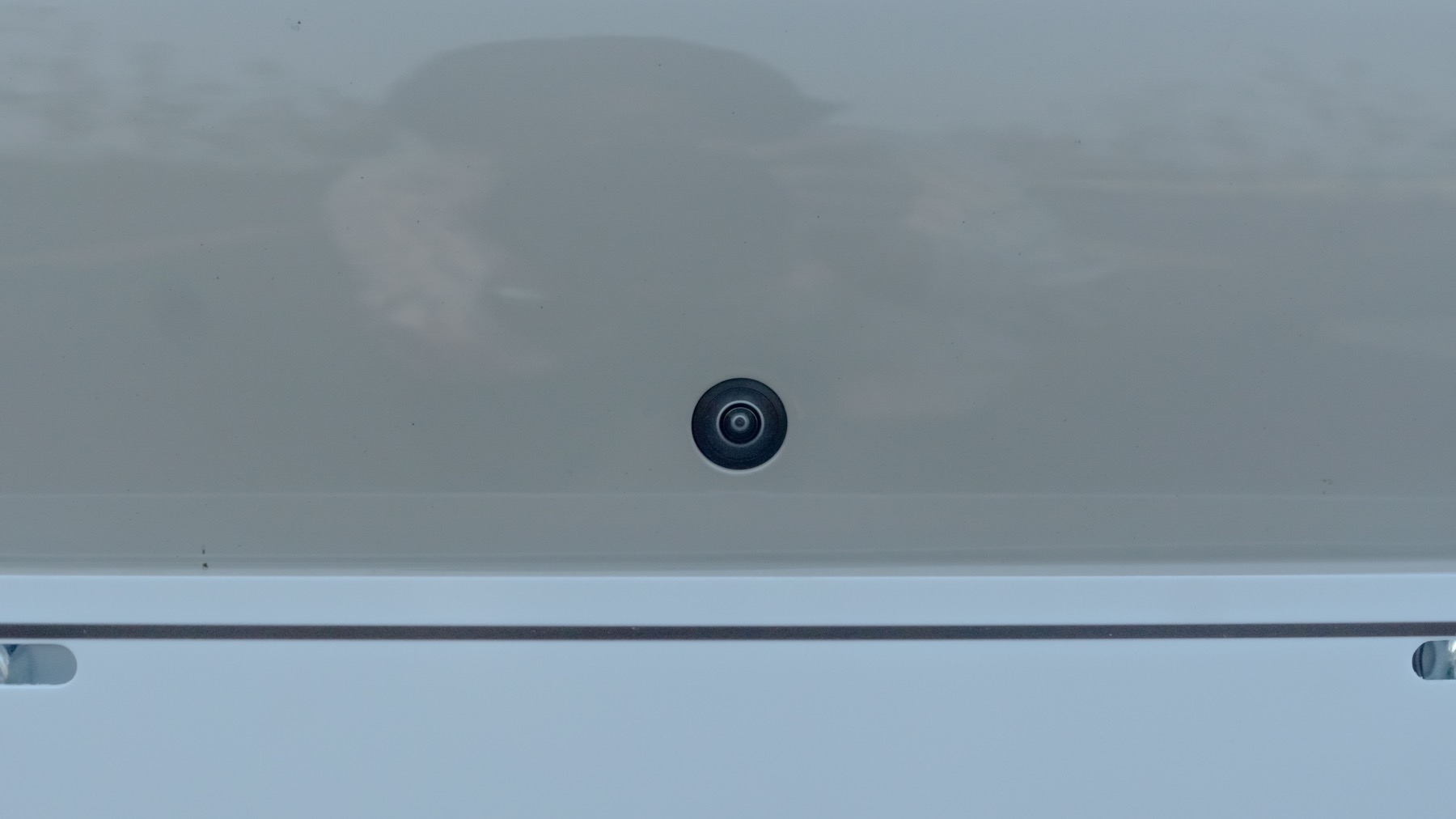
The flow-guiding openings on both sides are not for decoration, but are through-guiding openings that can really reduce wind resistance.
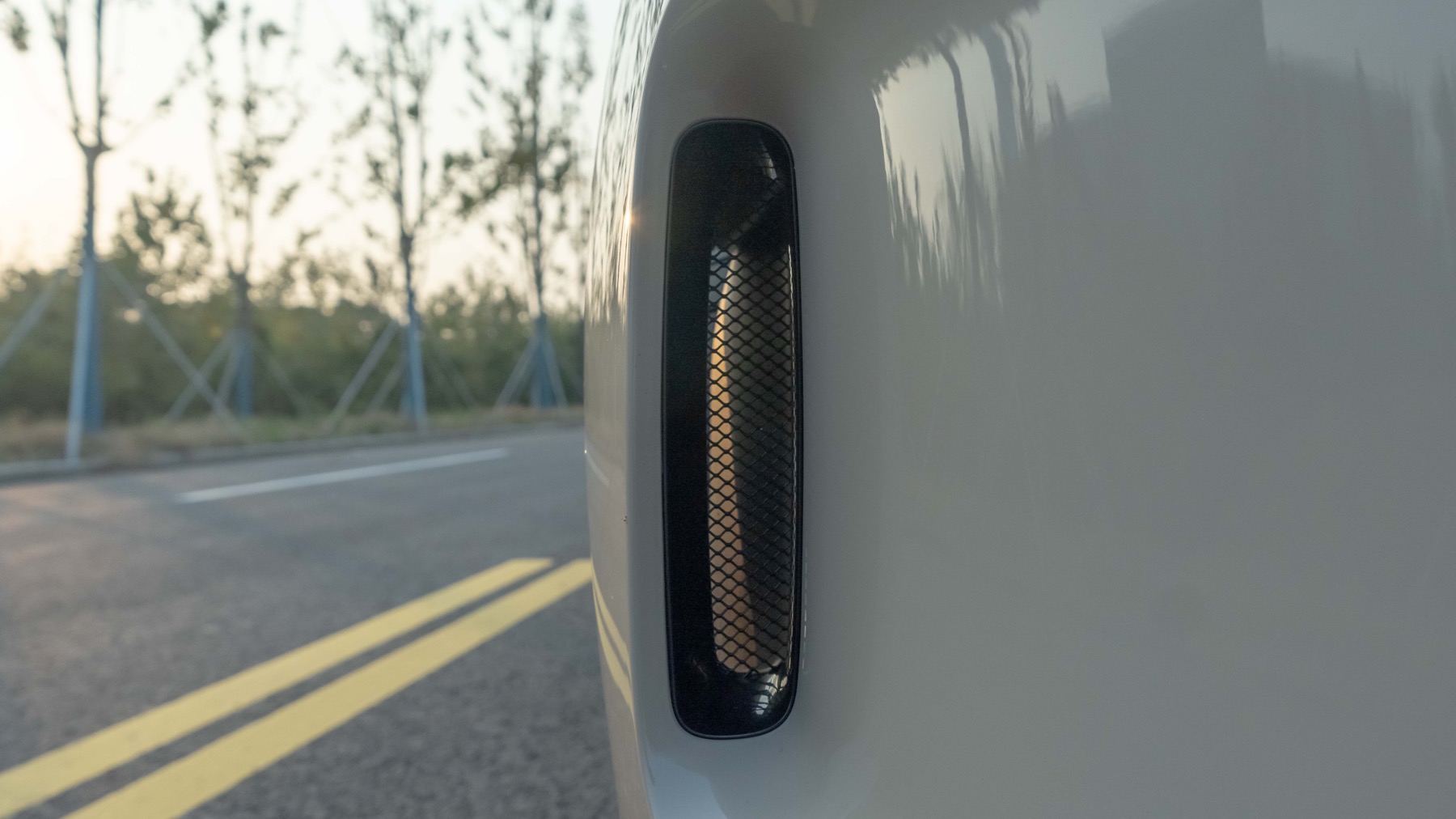
The ADAS system is still the same as other models in the industry, adopting a single camera + front millimeter-wave radar solution from Bosch.
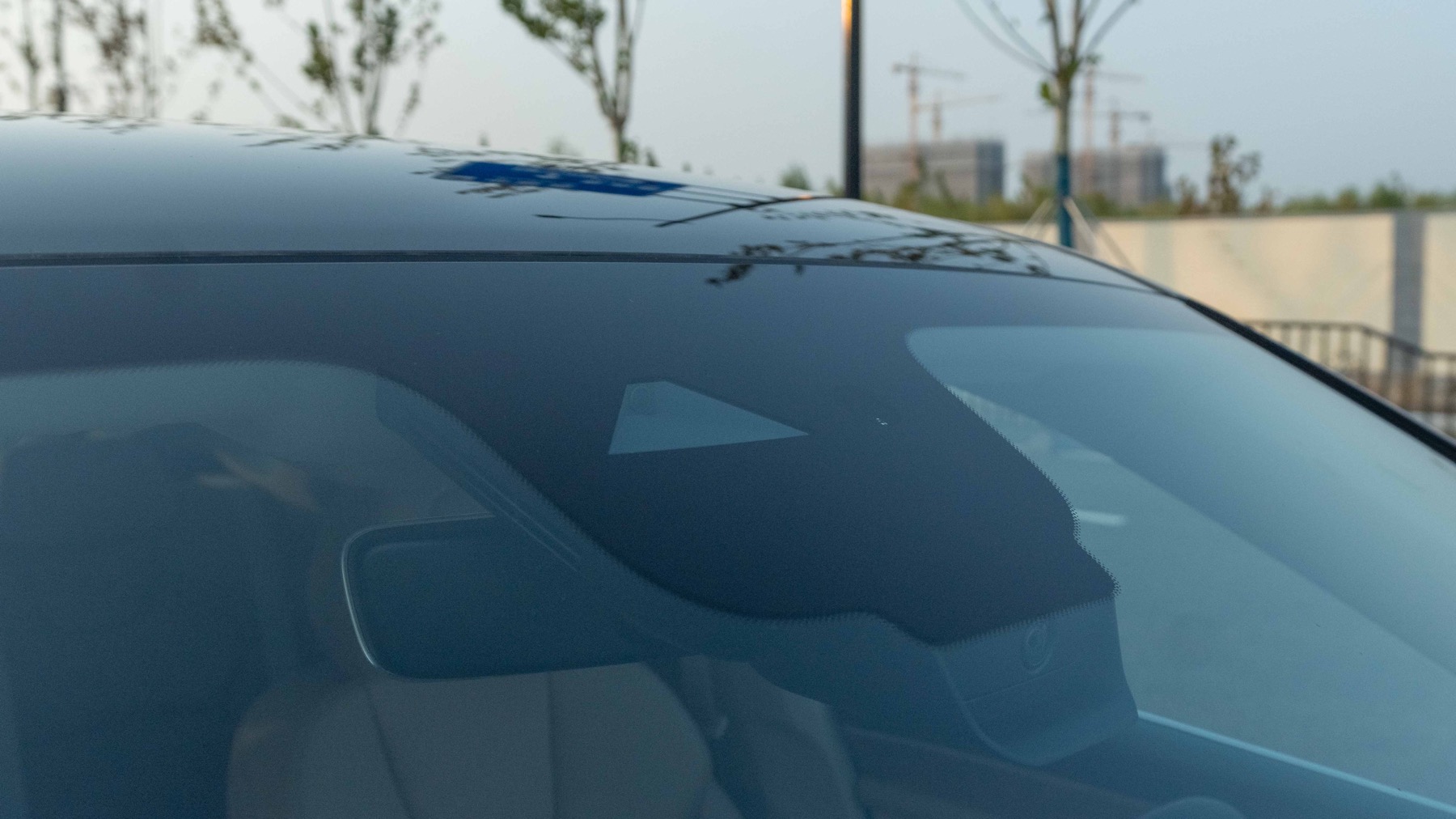

The M5 EV has a front trunk, and the size is not small. Most of the things you buy from a supermarket can be put into it. However, because it is oblong, a 20-inch suitcase cannot be put in it. In addition, the front trunk has no physical switch and can only be opened on the central console.
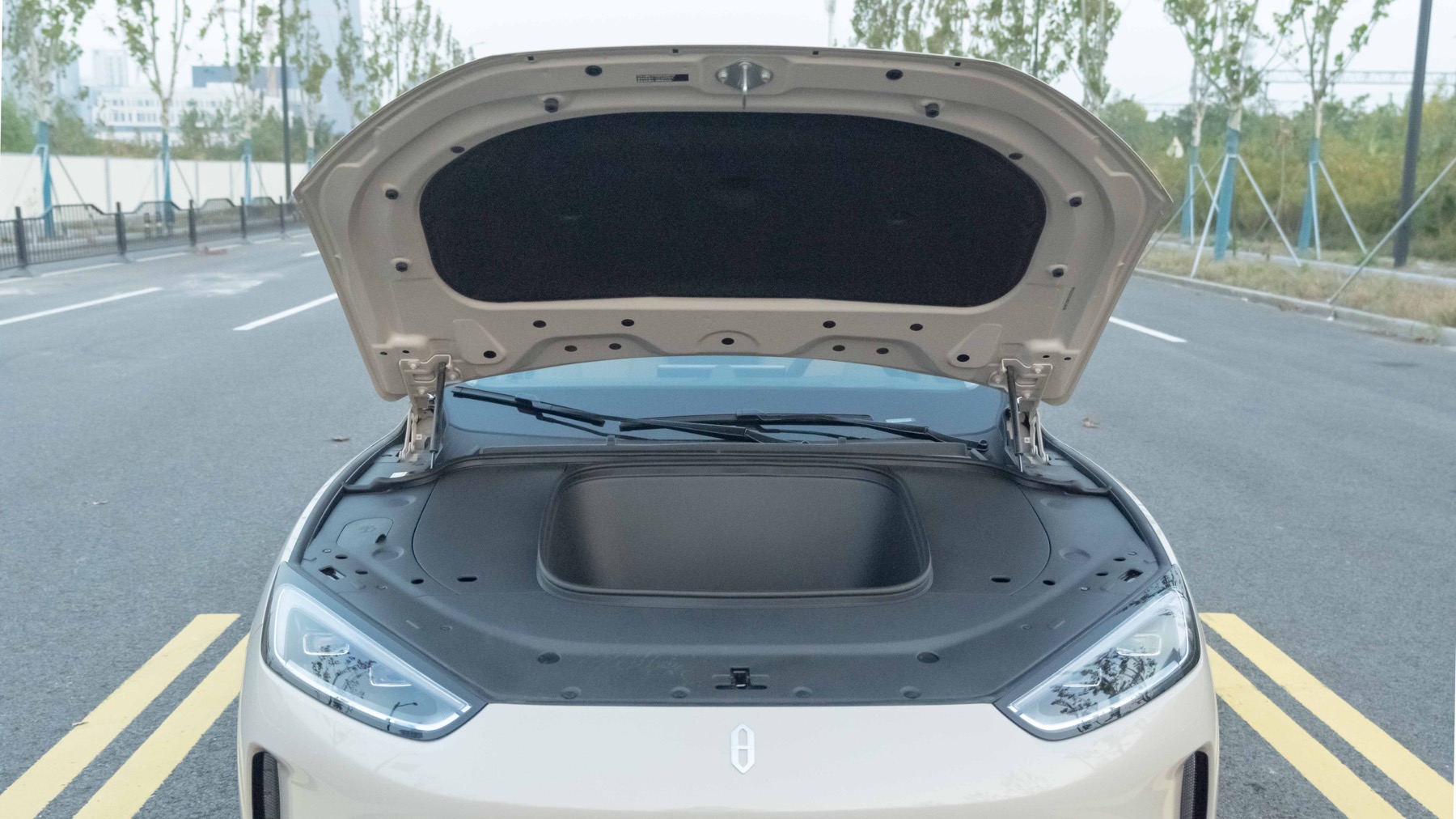

The windshield washer fluid filling port is on the left side of the front compartment, and the cover needs to be removed to fill it.
 From the side, M5 EV’s front end is quite long, occupying almost one third of the car’s length. The top starts to slope down before reaching the B-pillar, but the angle is not very steep, ensuring sufficient headroom for rear passengers.
From the side, M5 EV’s front end is quite long, occupying almost one third of the car’s length. The top starts to slope down before reaching the B-pillar, but the angle is not very steep, ensuring sufficient headroom for rear passengers.
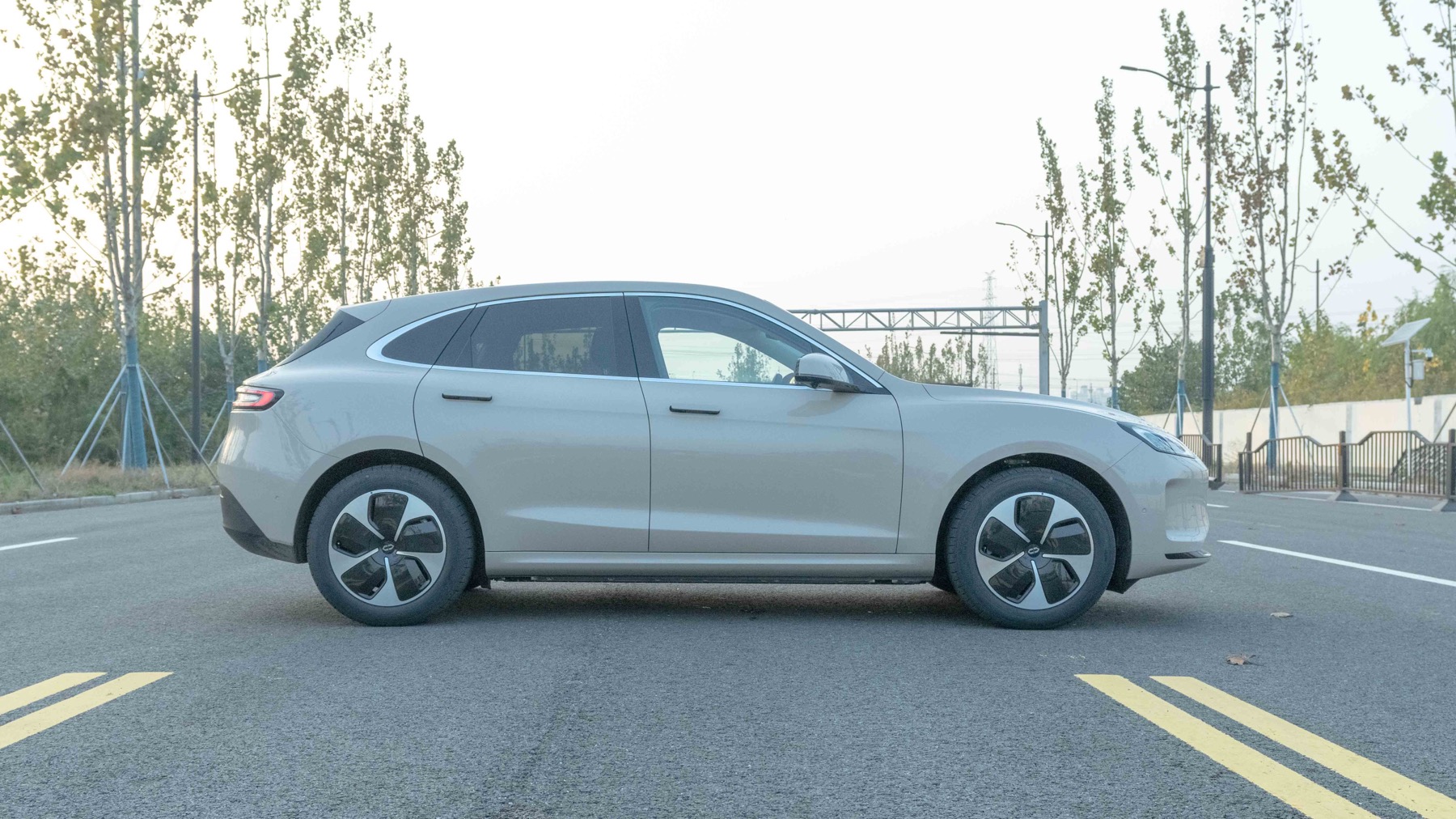
The NFC sensor module is placed on the left side of the driver’s side mirror, while the side-view cameras are located below the mirrors.
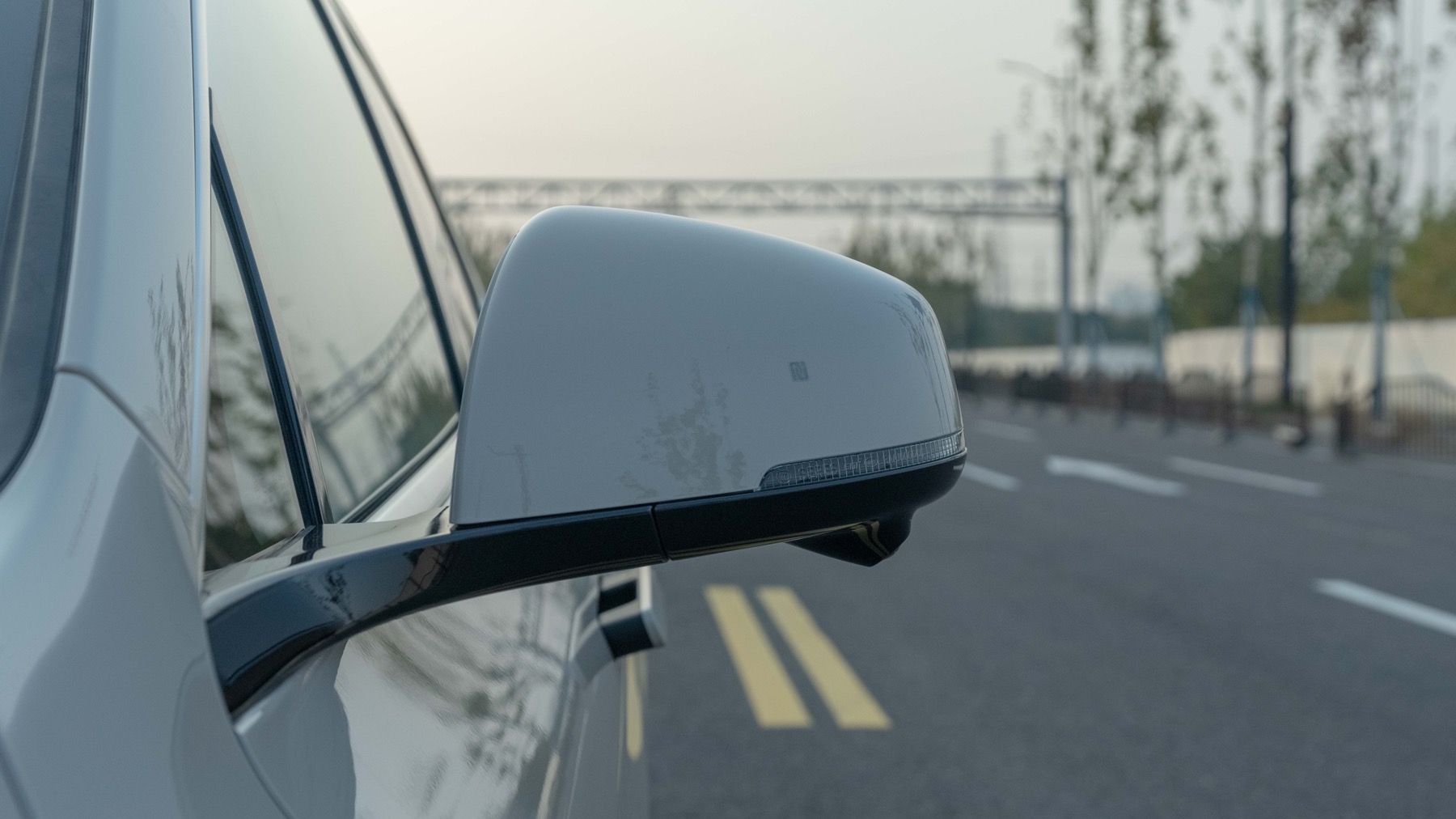
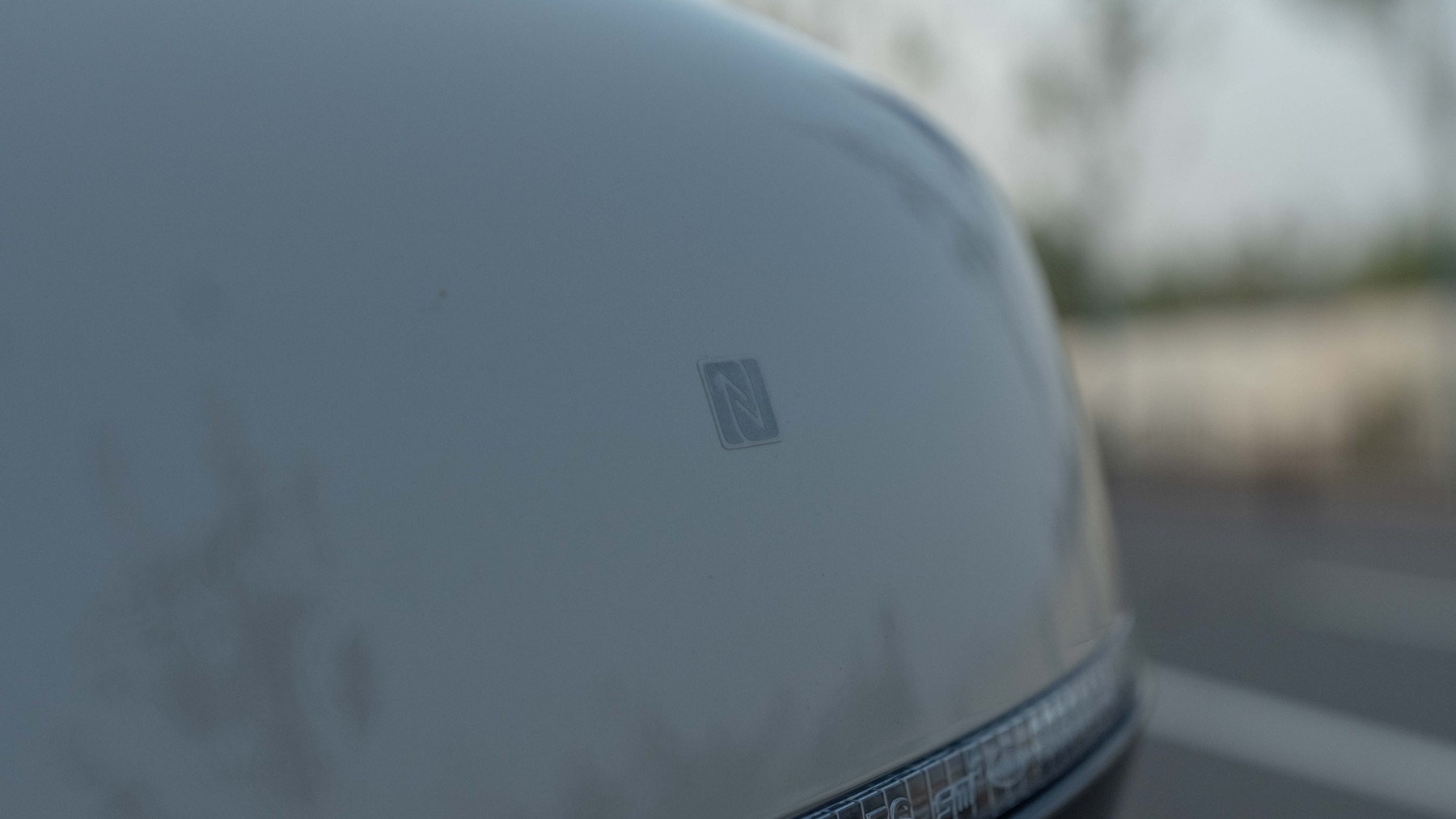
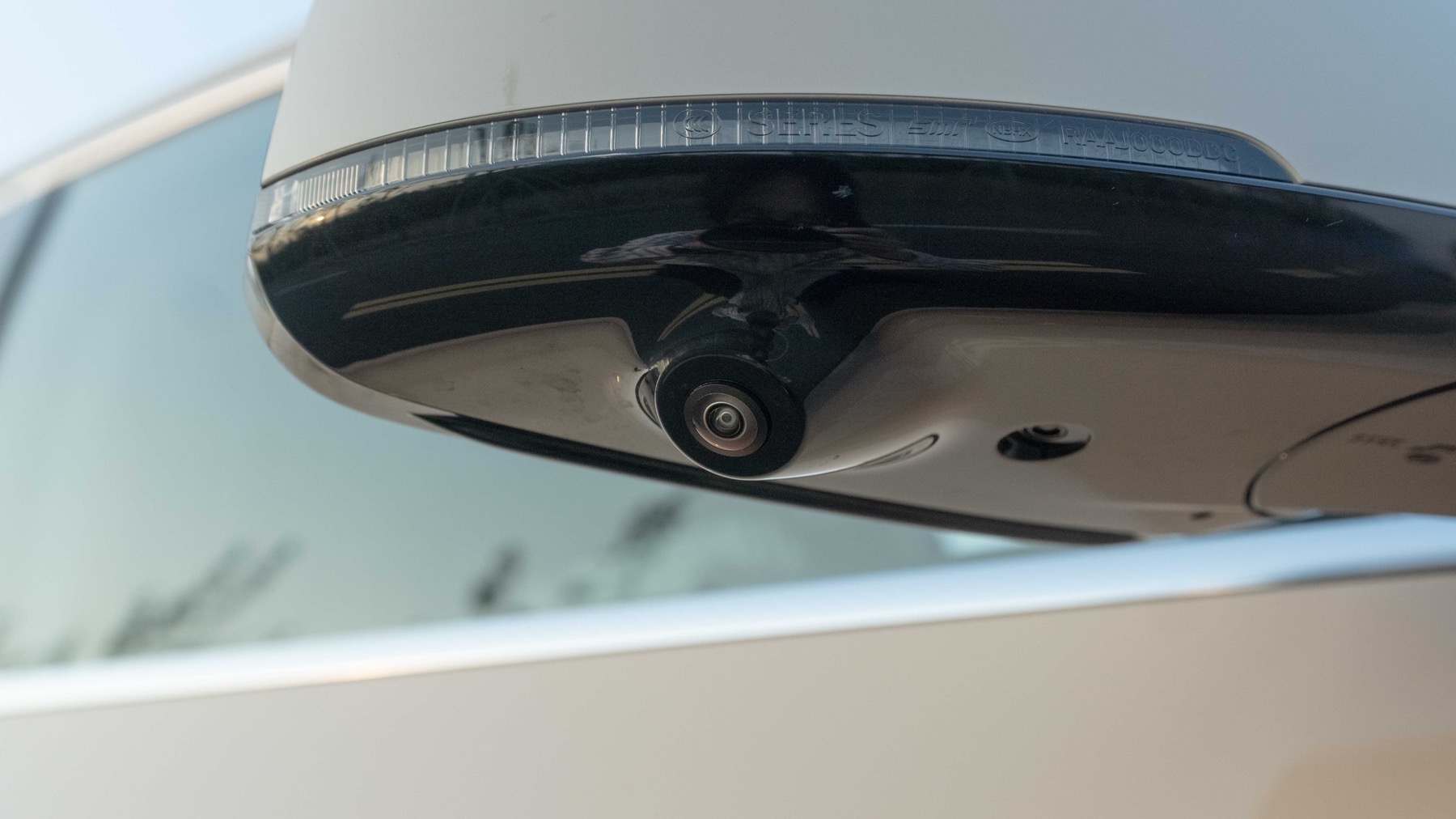
Although the wheels are also low-drag wheels, their shape is different from that of the extended range version, with a pentagram shape. The recommended tire pressure is 2.8 bar.
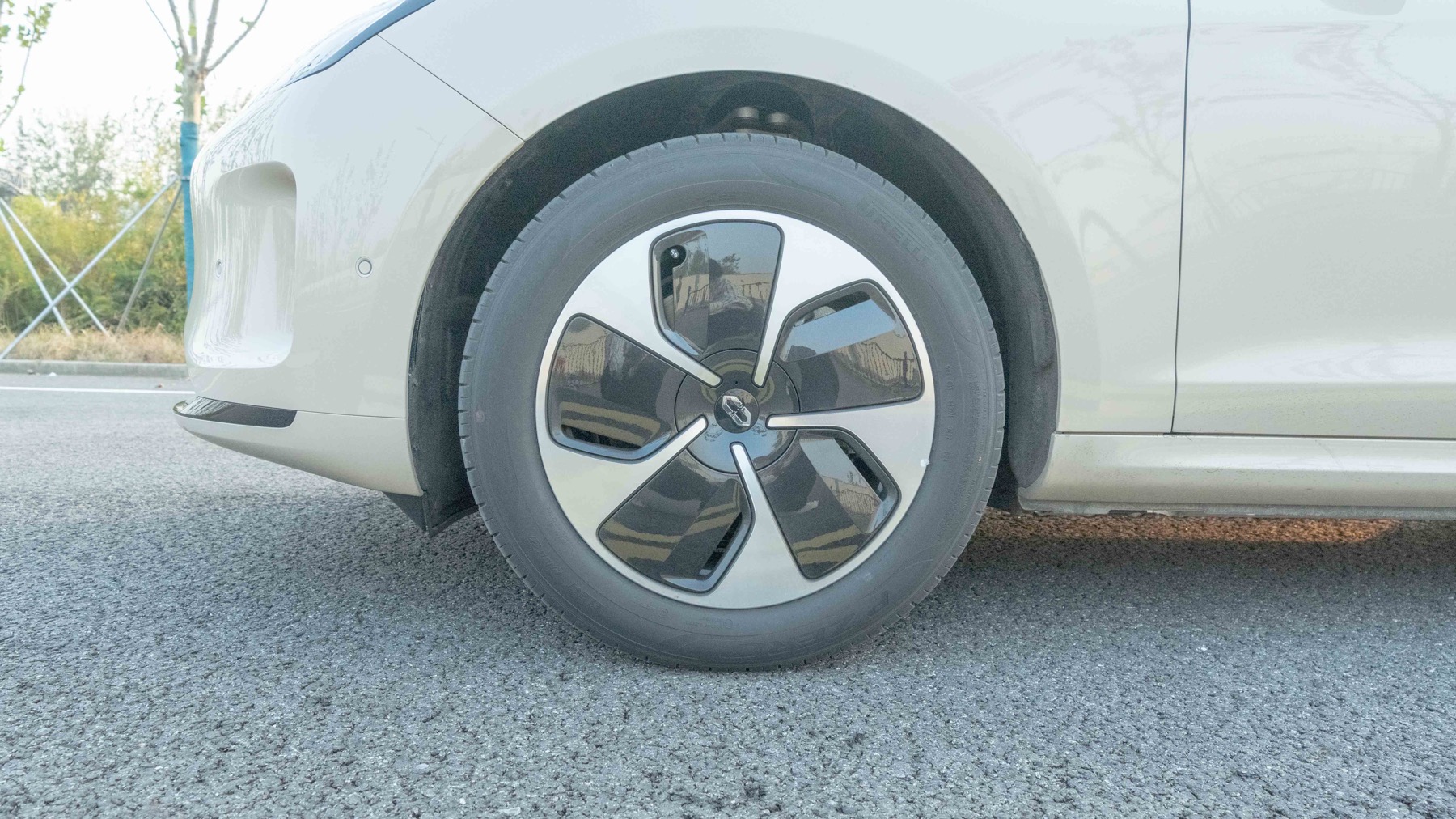
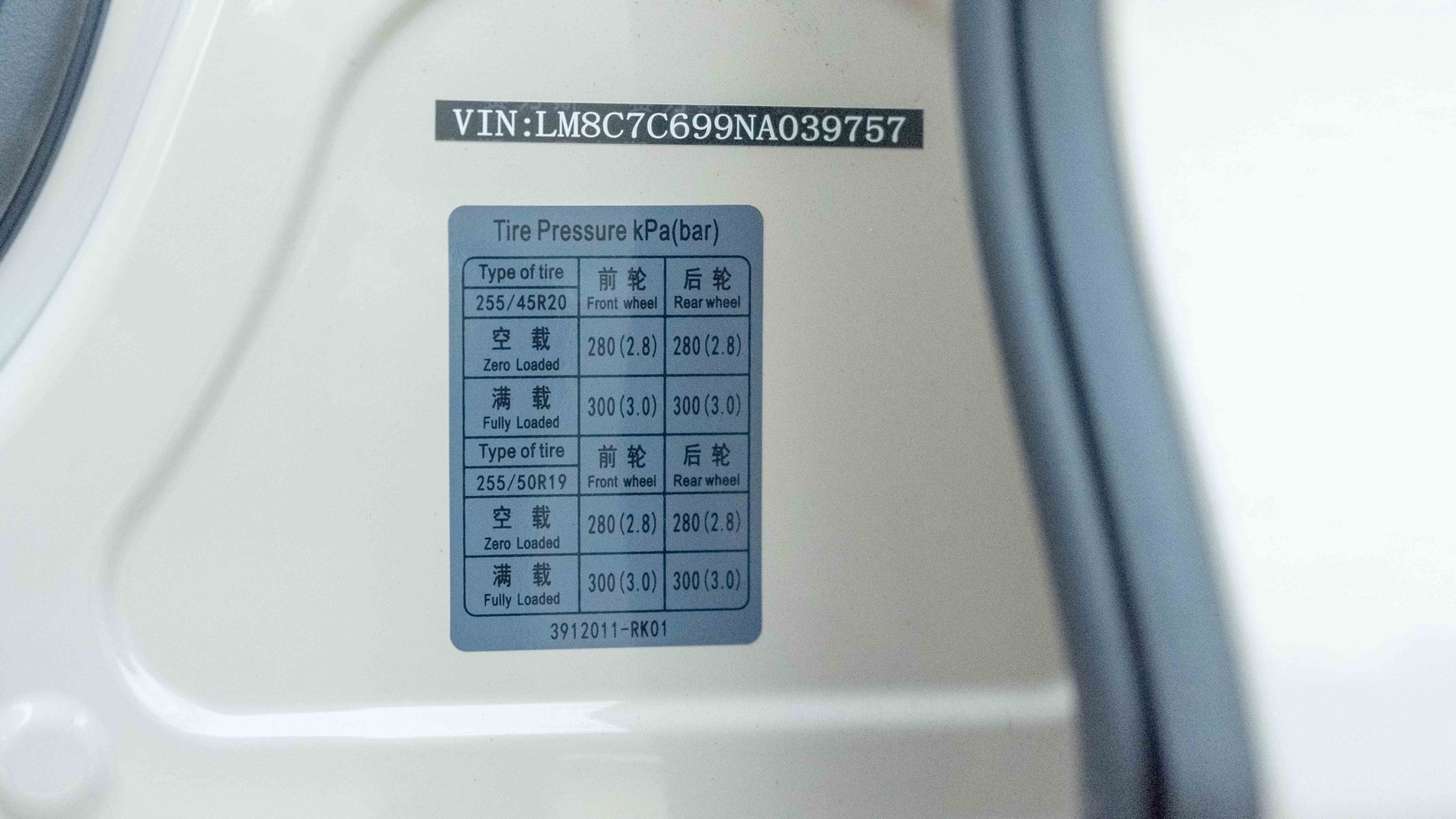
The door handles adopt a design of hidden pop-up handles, with the letters “AITO” printed on the inside.
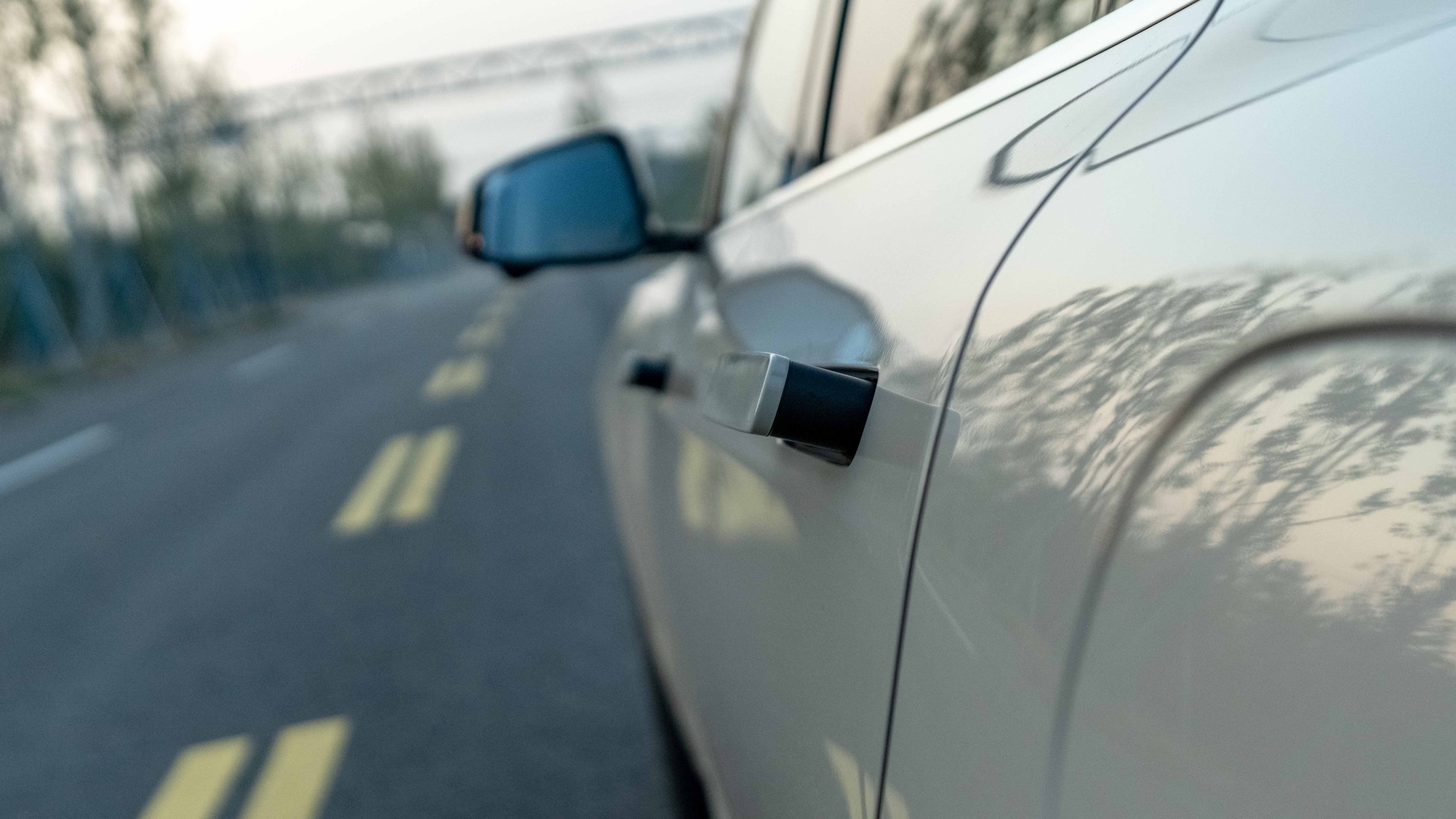
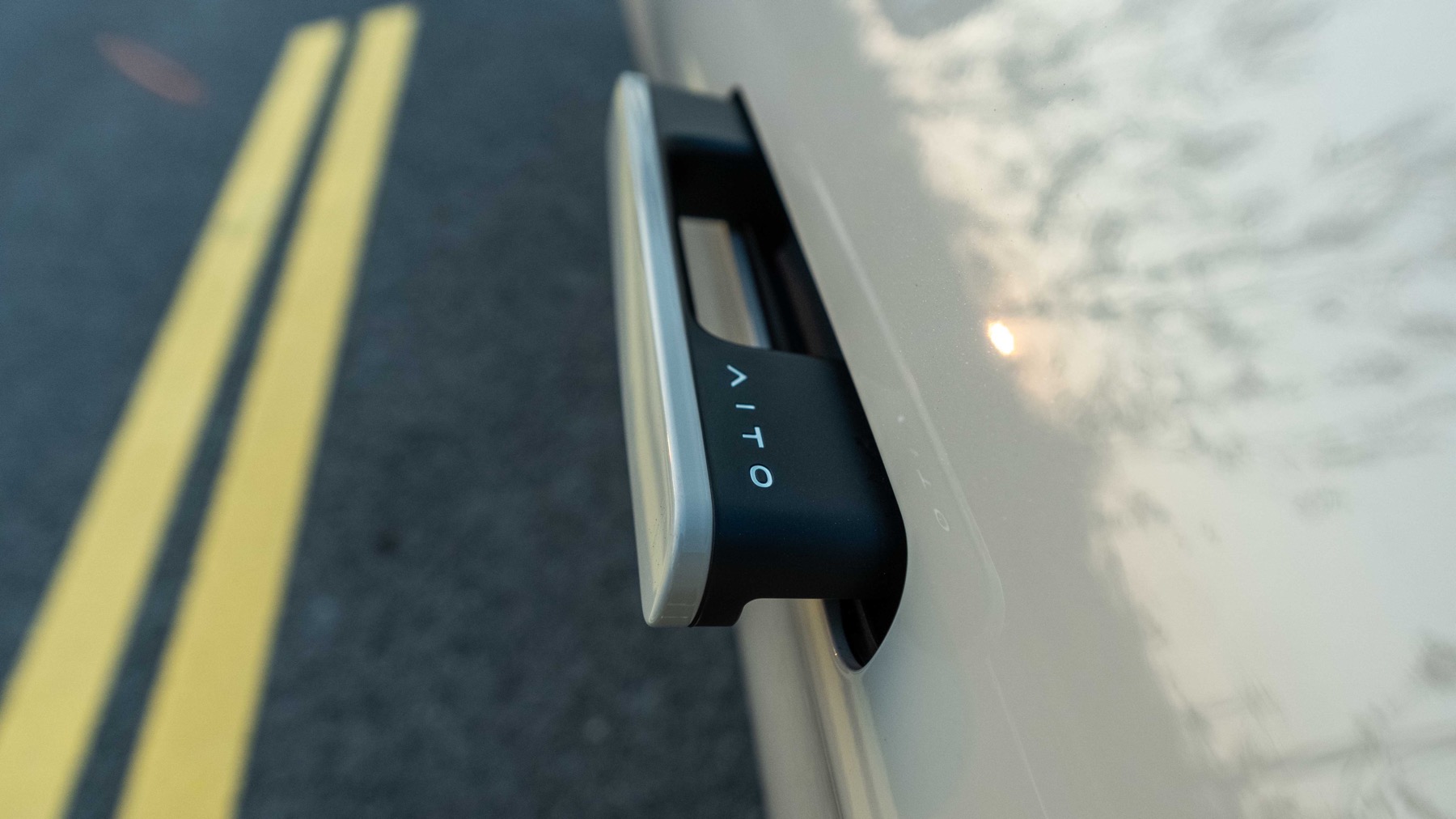
The two charging ports are located on the left rear side of the vehicle, both with protective covers. There is an energy indicator light above the charging ports, showing the approximate power level of the vehicle. In addition, the charging ports do not support manual opening from the outside and can only be opened on the central control touch screen.Translate the Markdown Chinese text below into Markdown English text, retaining the HTML tags inside the Markdown in a professional manner, and only outputting the result:
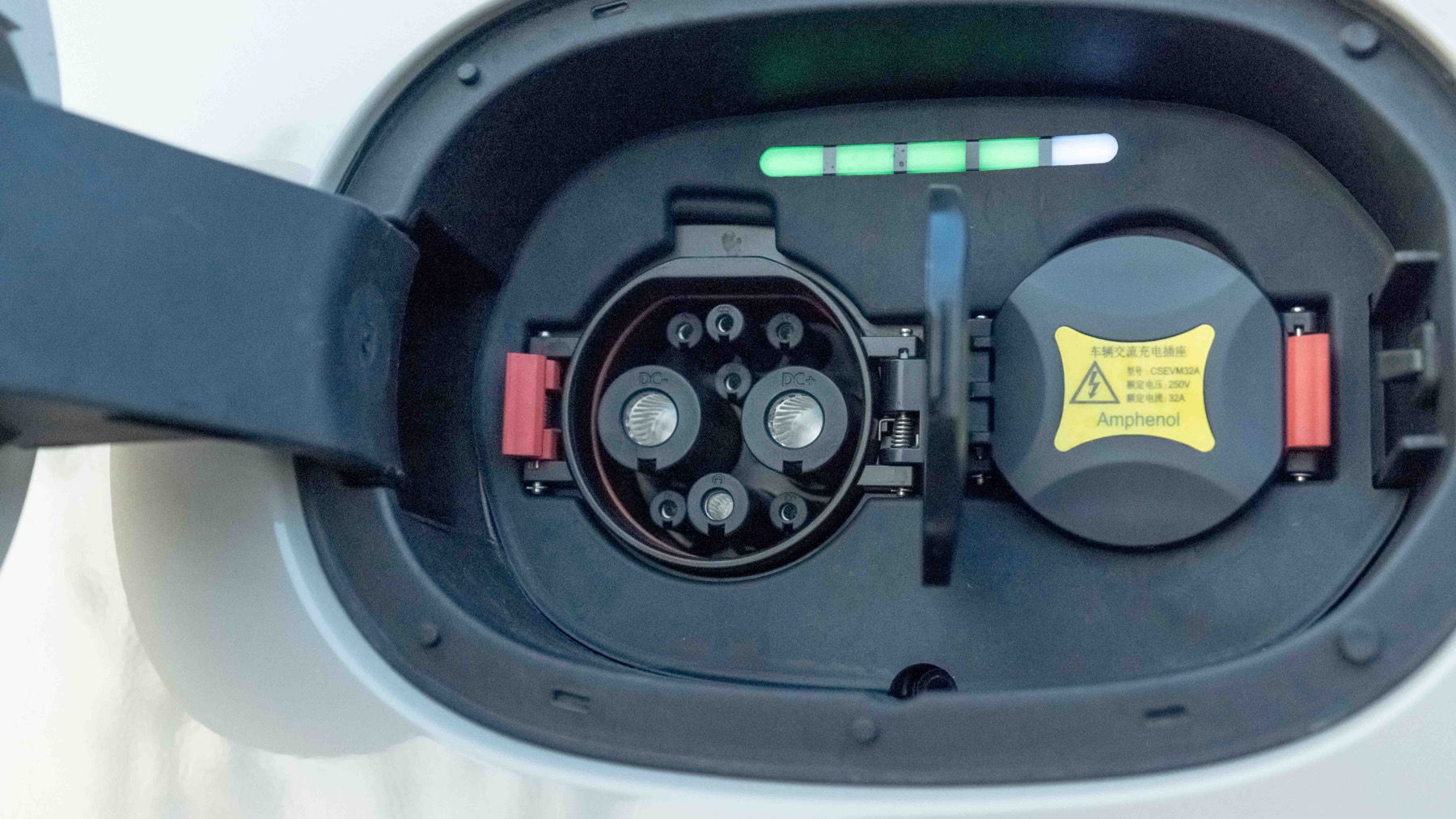

Let me show you the waistline of the C-pillar.
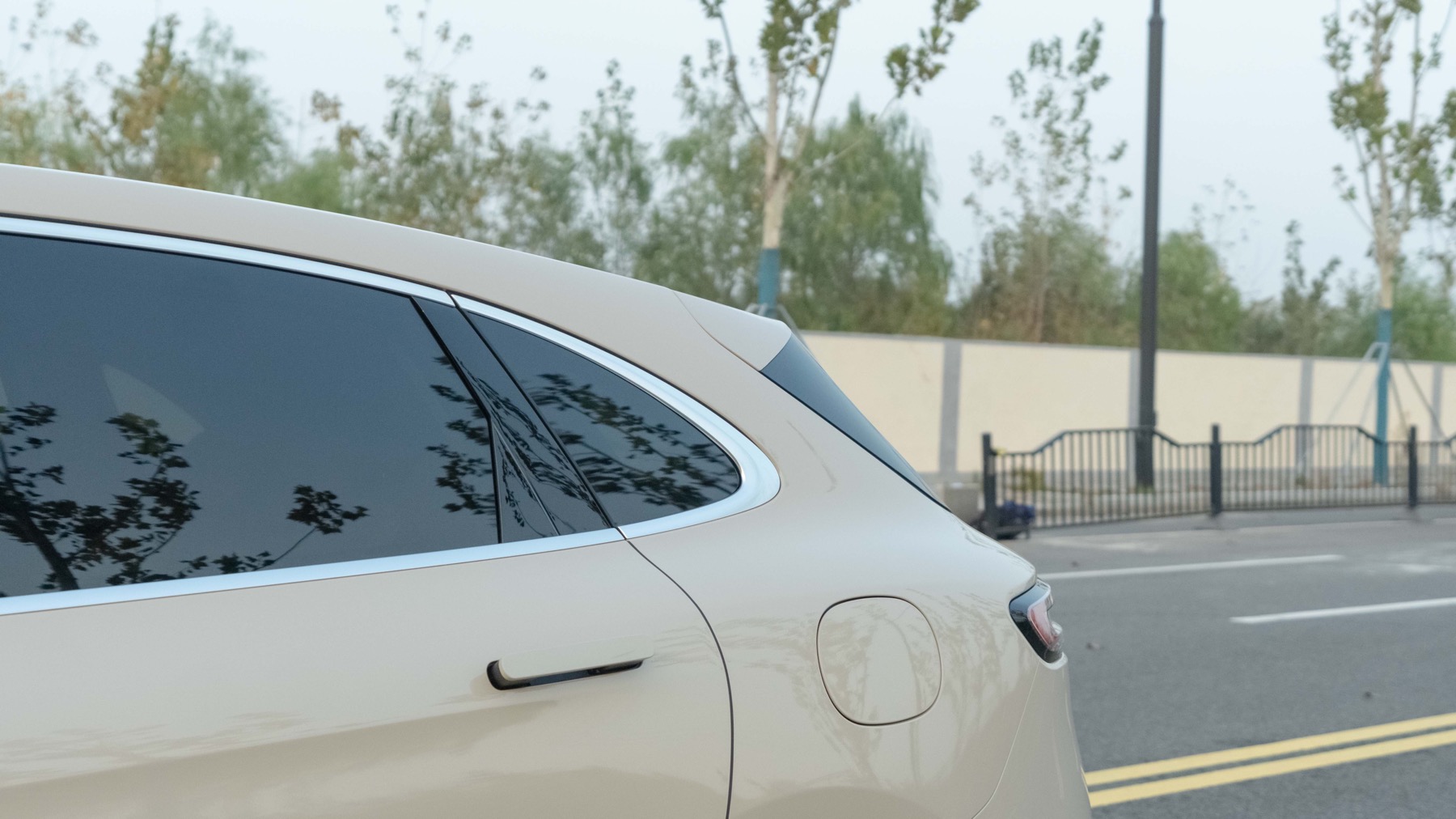
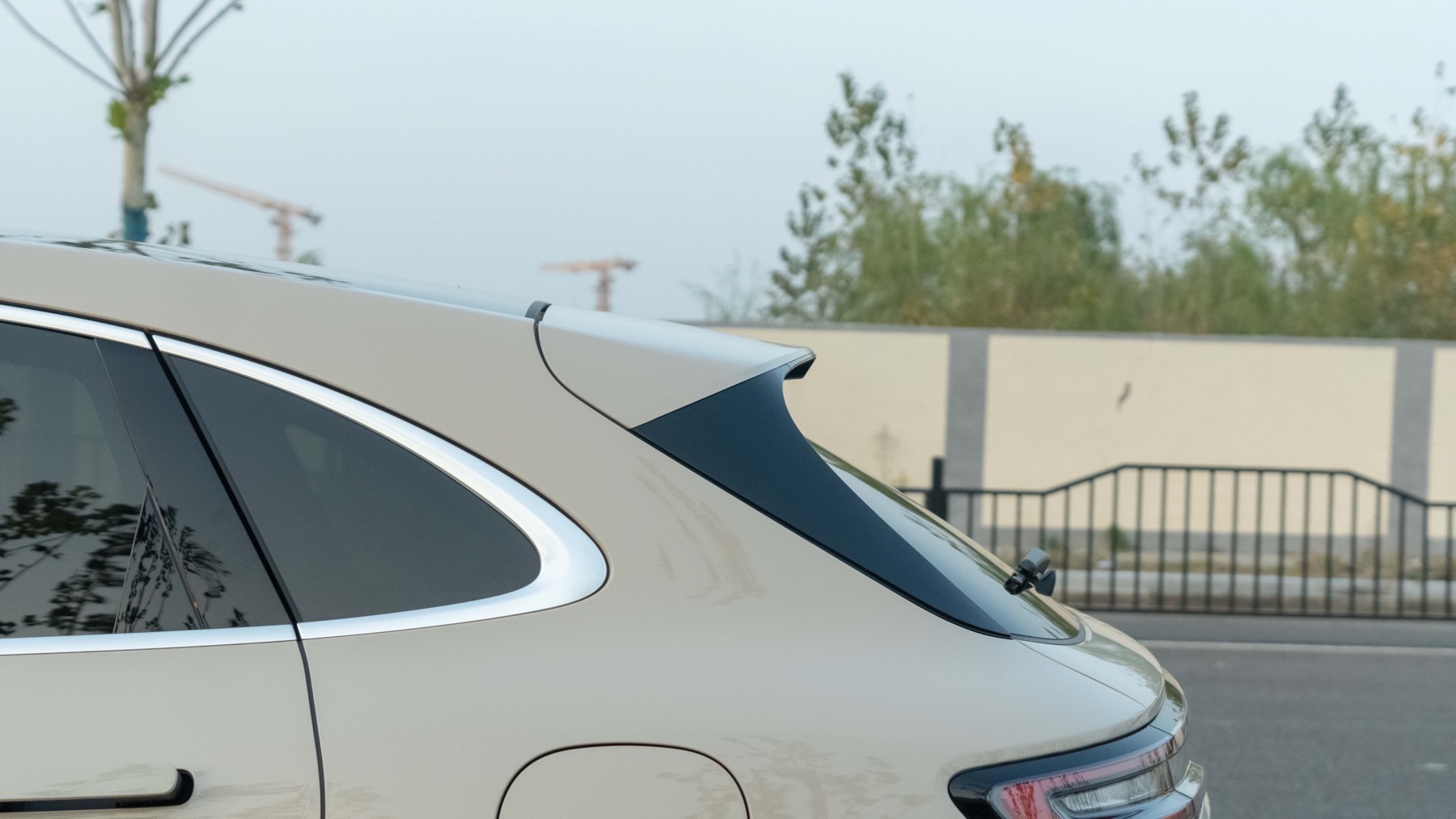
When unlocking the vehicle and getting on board, the welcome light will project the logo on both sides of the vehicle, which is very ceremonial.
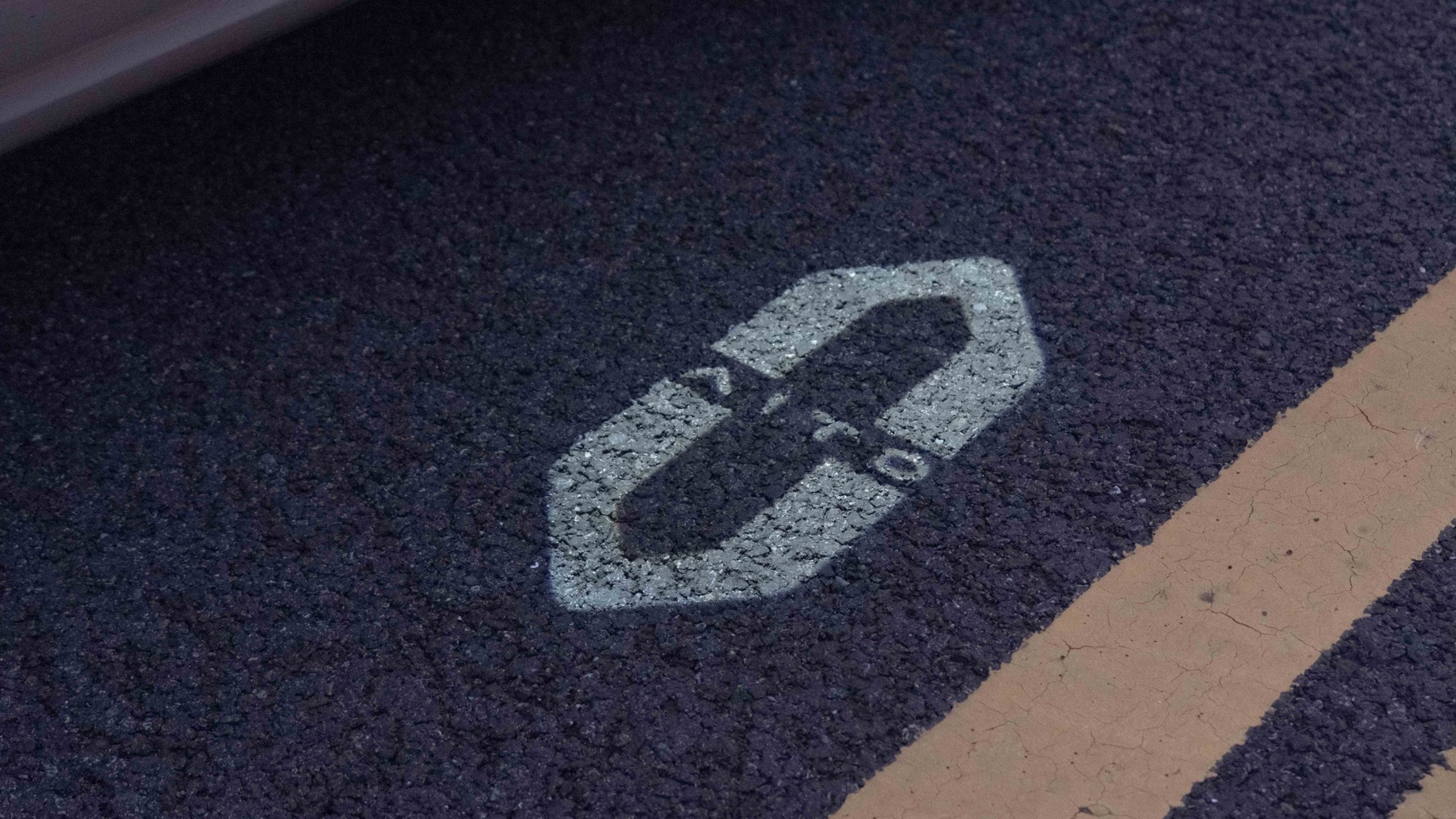
As we come to the tail of the car, the most conspicuous thing is the through-type taillights, and the letters “AITO” in the middle are also embedded in the entire taillight.
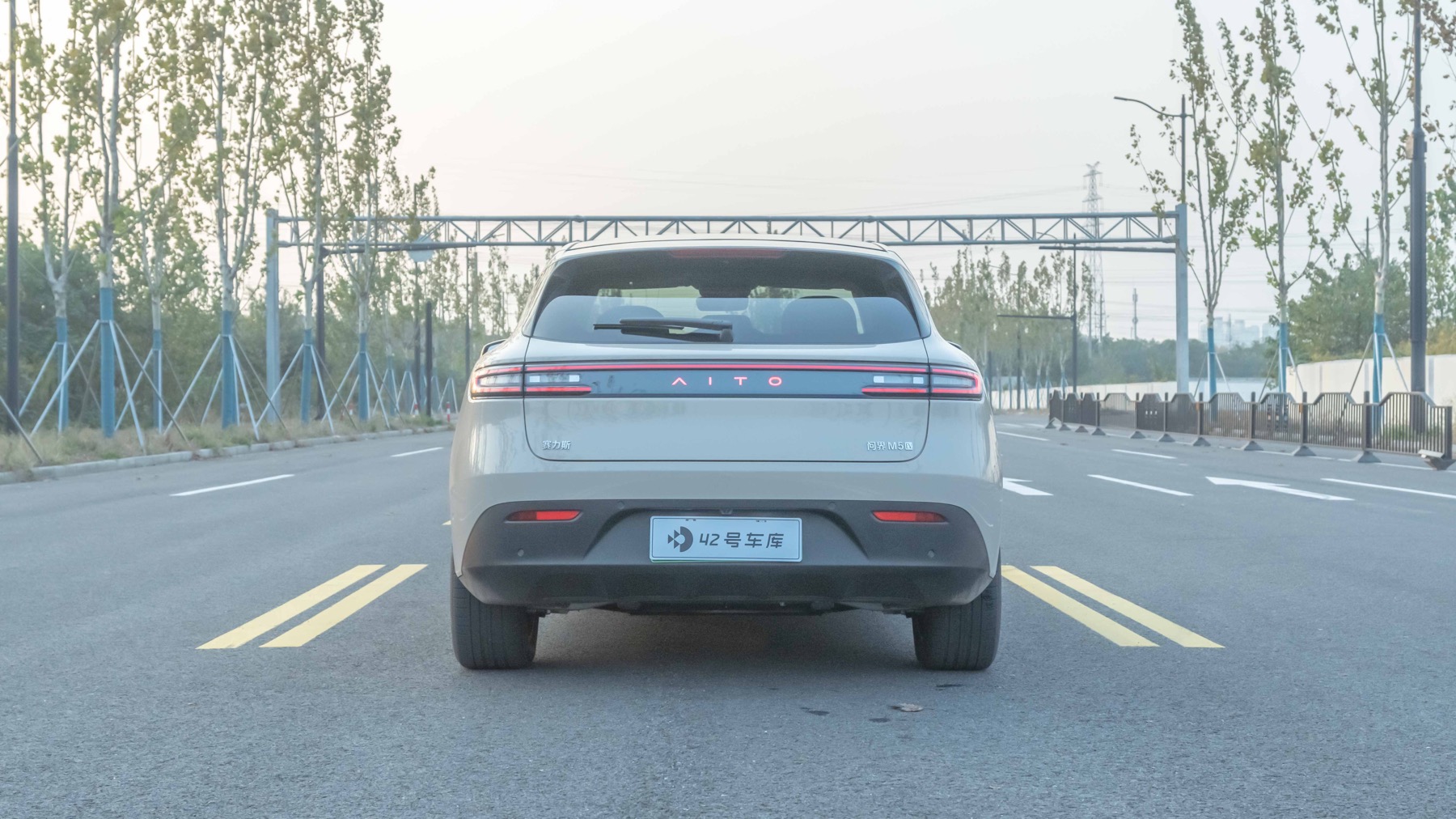
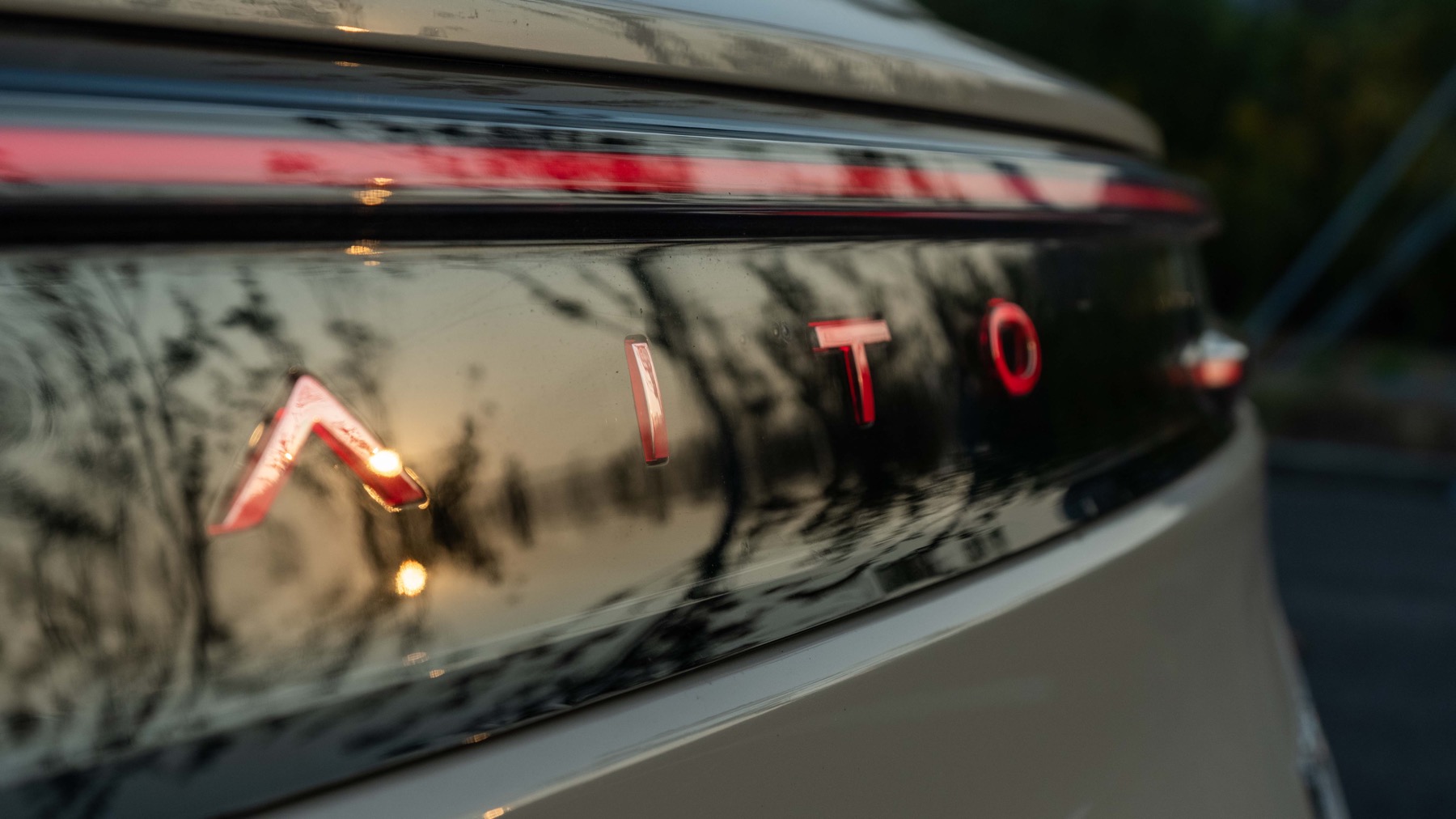
After dark, we took some pictures of the taillights lit up for everyone to enjoy.
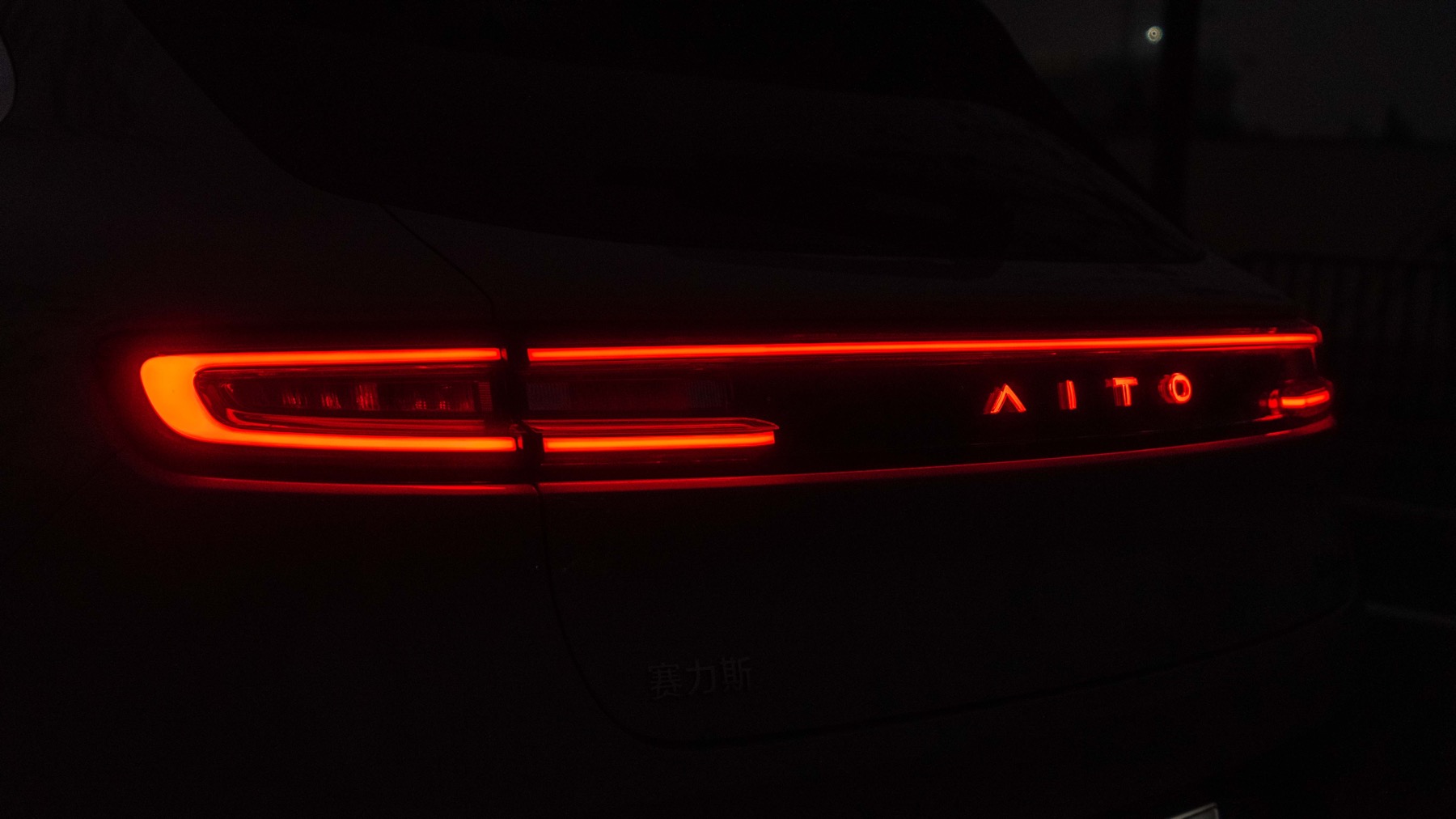
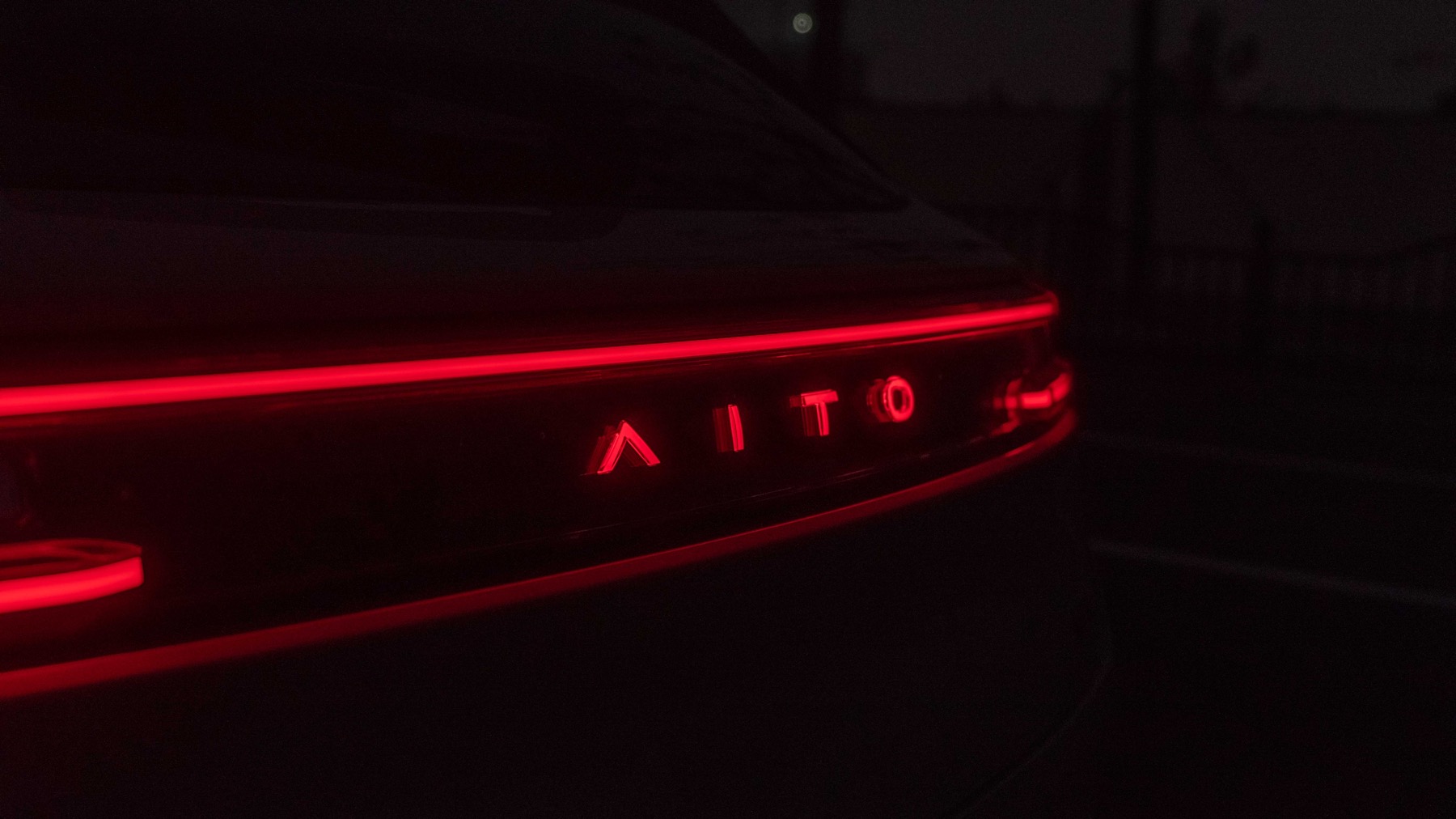
The rear wiper is not hidden in the tail wing, but is still placed in the conventional position. The switch for the trunk is not in the conventional position, but at the end of the rear wiper.
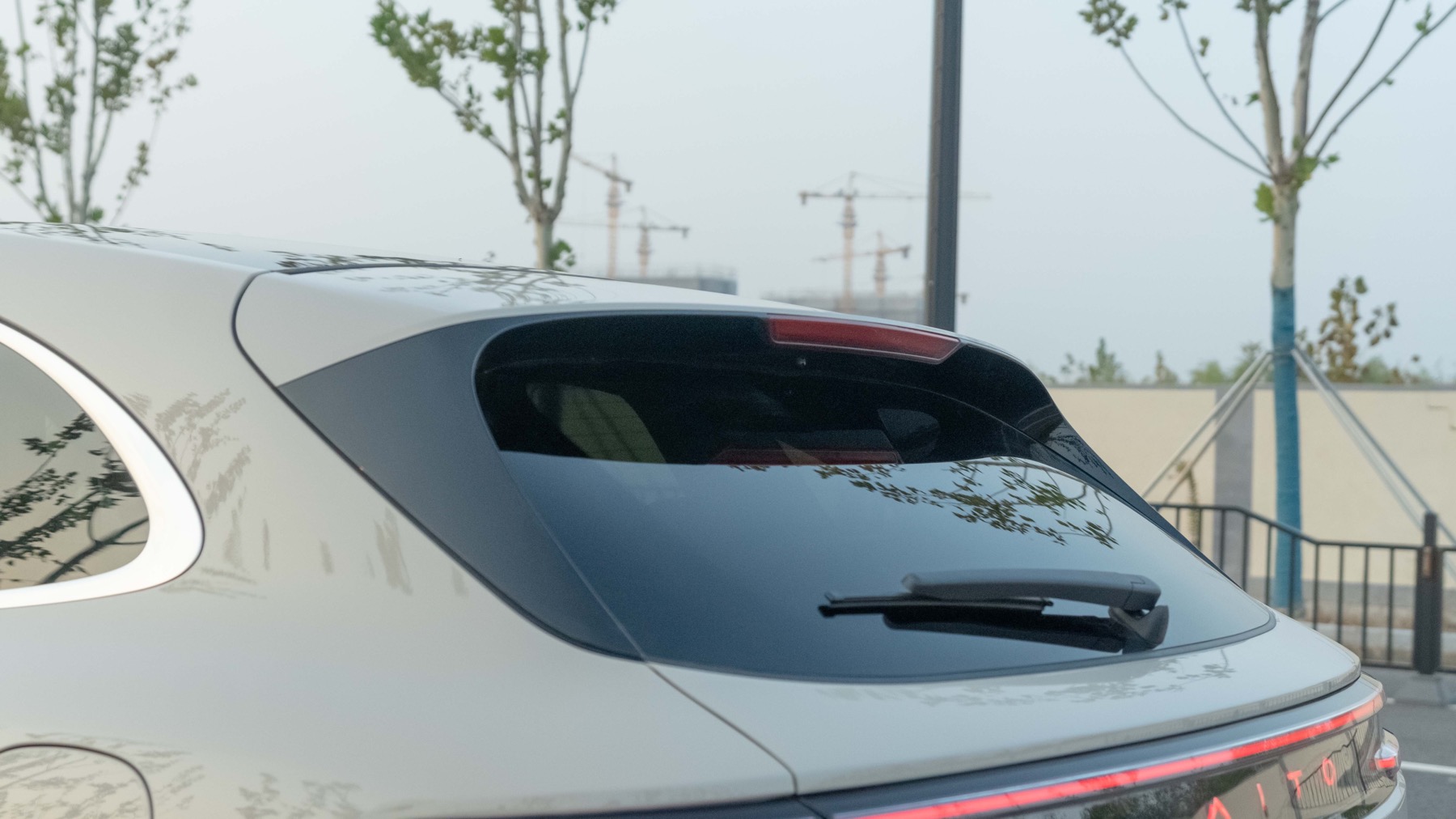
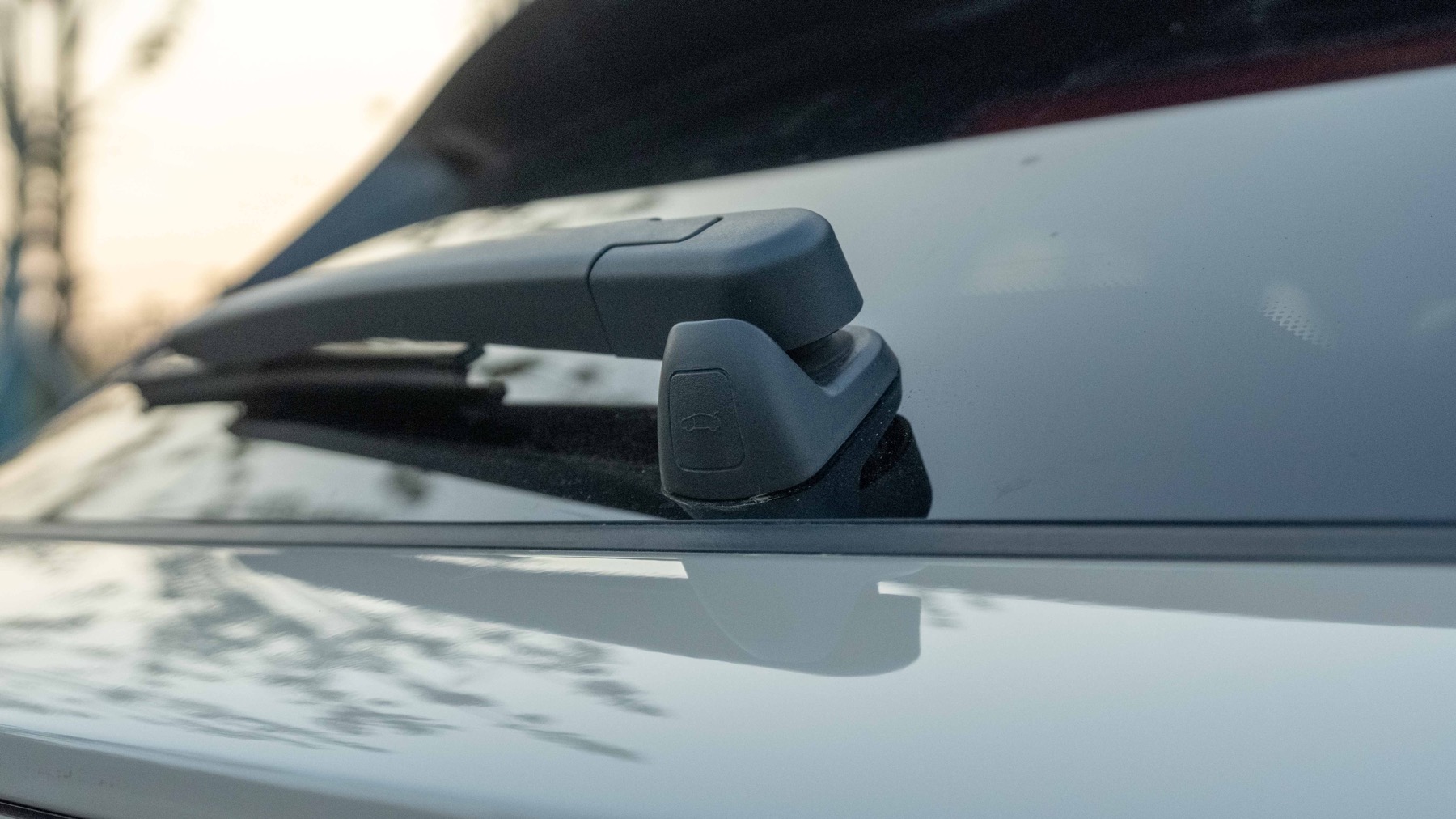
Open the trunk, which still uses a hatchback design and comes with a removable cargo cover.
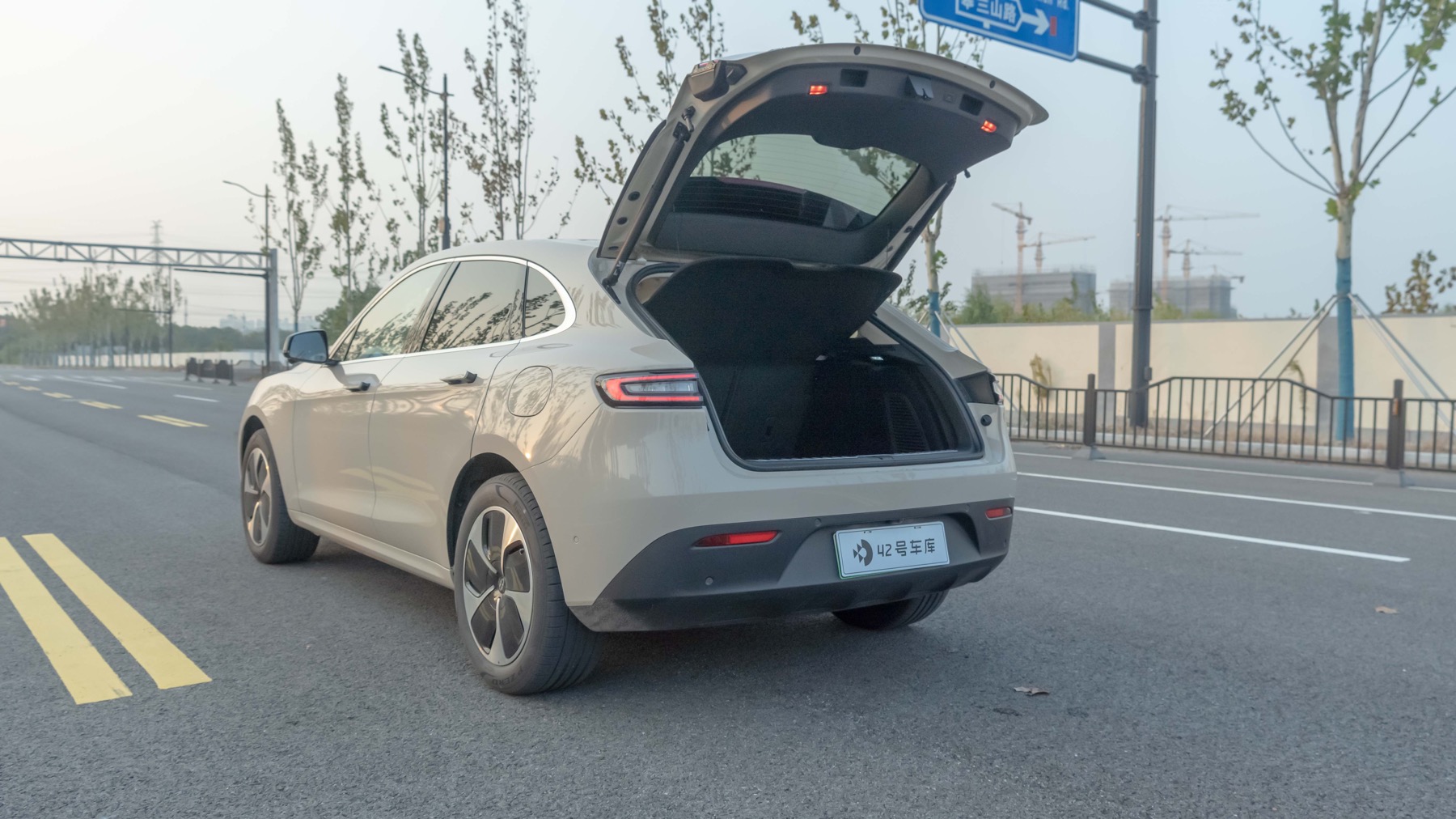
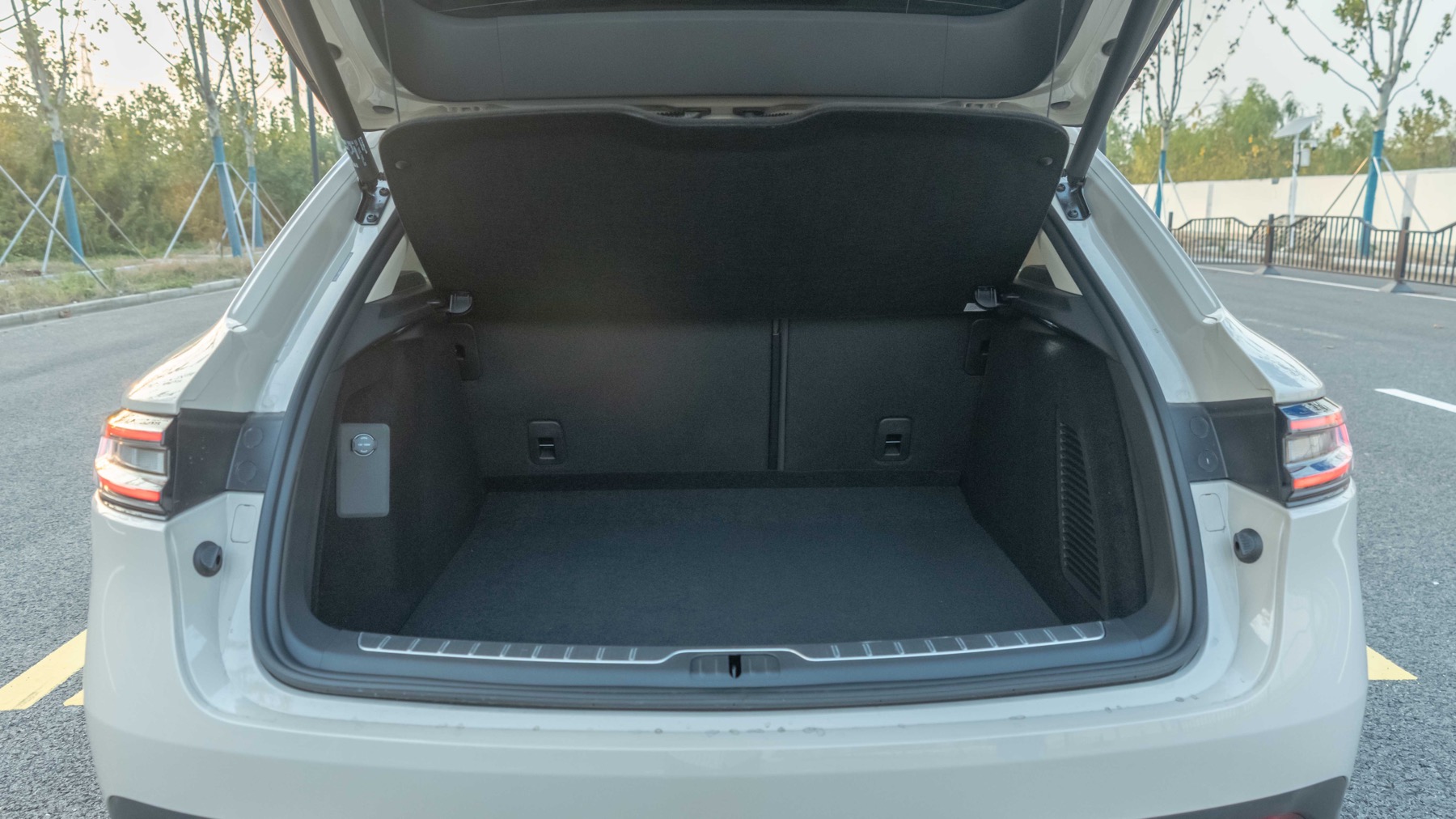
The measurements we took for the trunk are as follows.
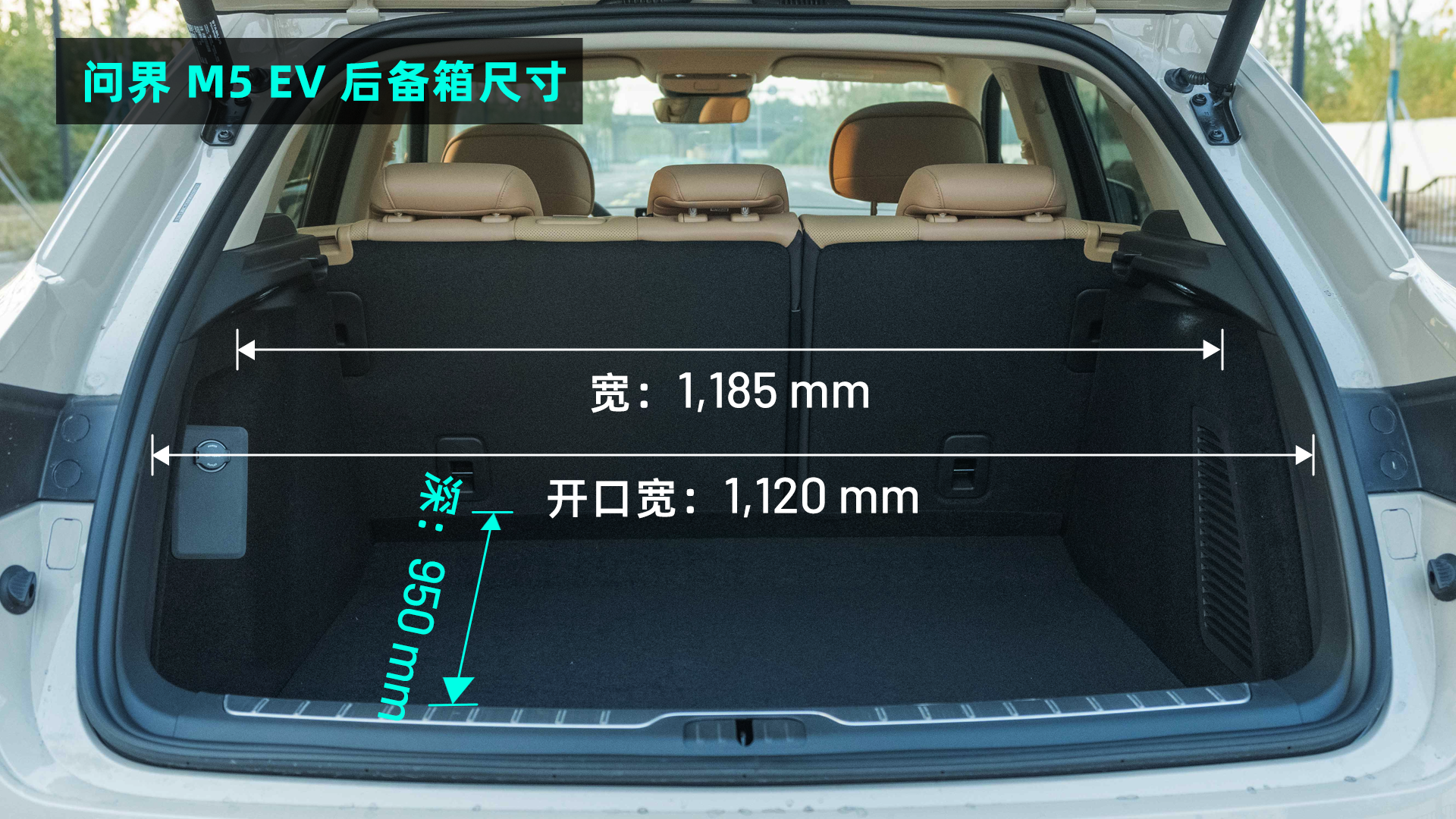
On the left side of the trunk, there is a car charging port with a maximum power of 120W and an AC air vent, while there is only an AC air vent on the right side.
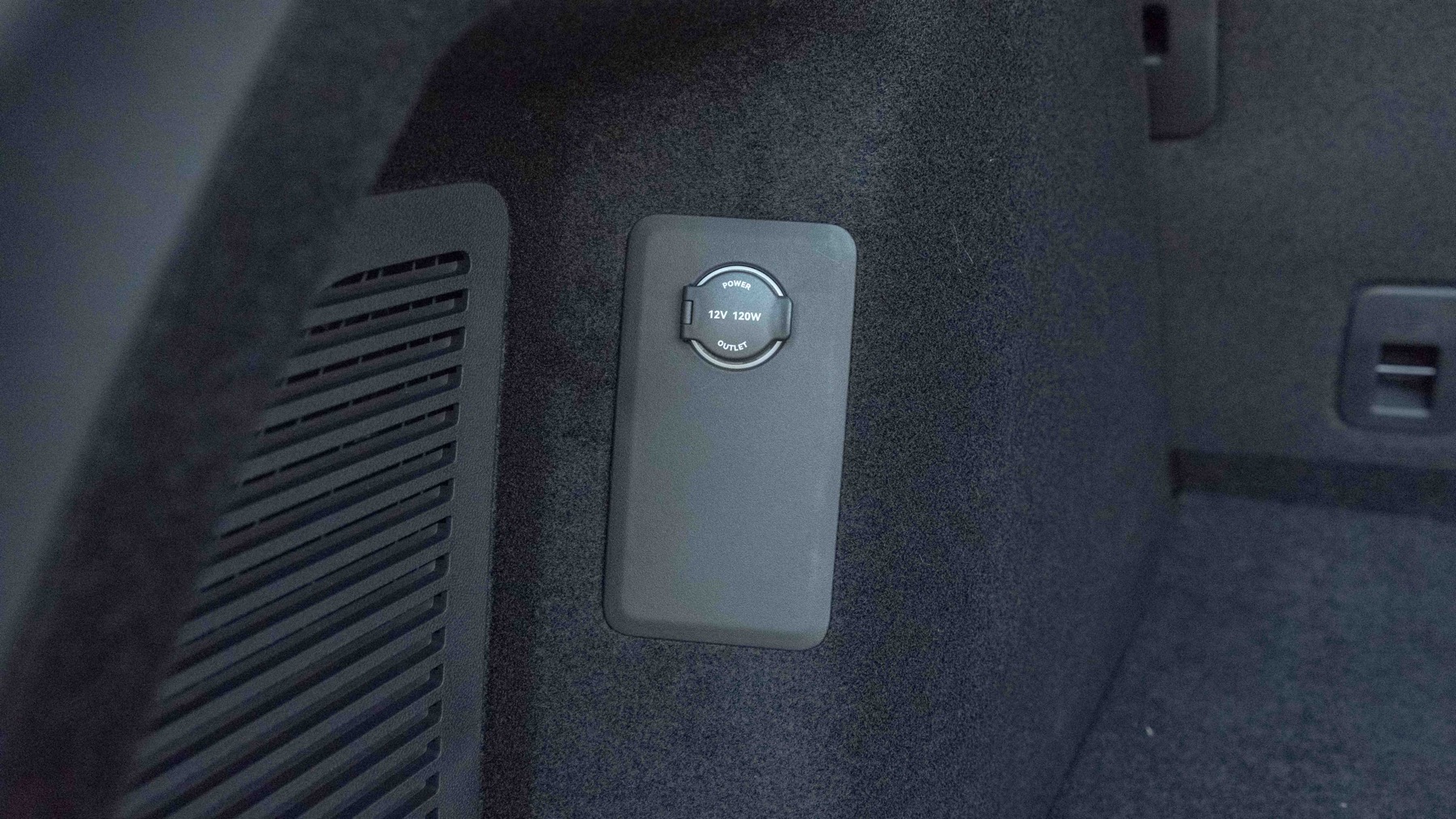

Lifting the bottom cover of the trunk reveals various tools, but there is no extra space left to store additional items.

After removing the cargo cover, the trunk space will be further expanded, and the rear seats can also be folded down in a 4/6 split.
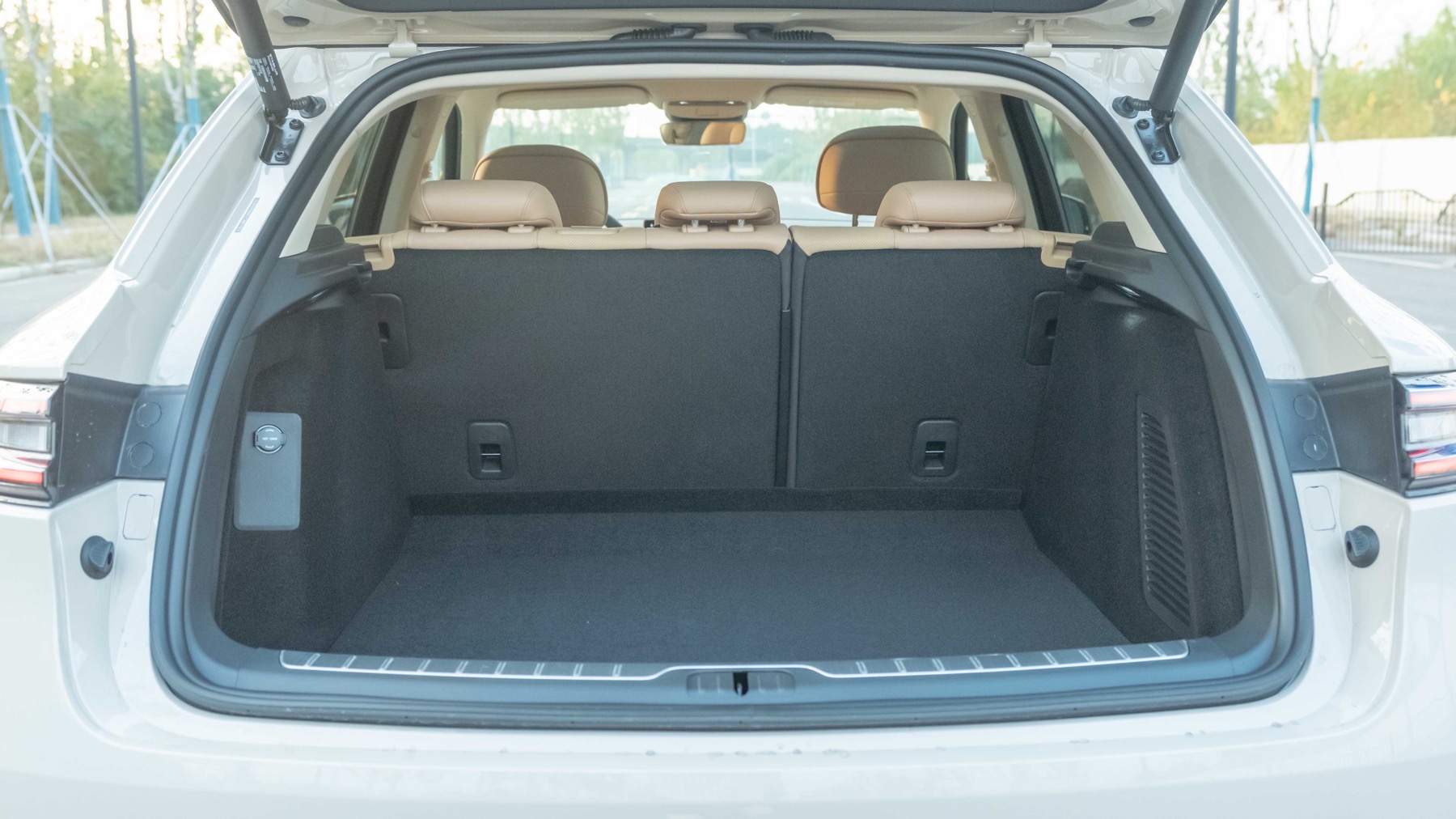

The rearview camera is located above the rear license plate and may need to be wiped frequently to ensure a clear view when backing up because it is relatively close to the ground.
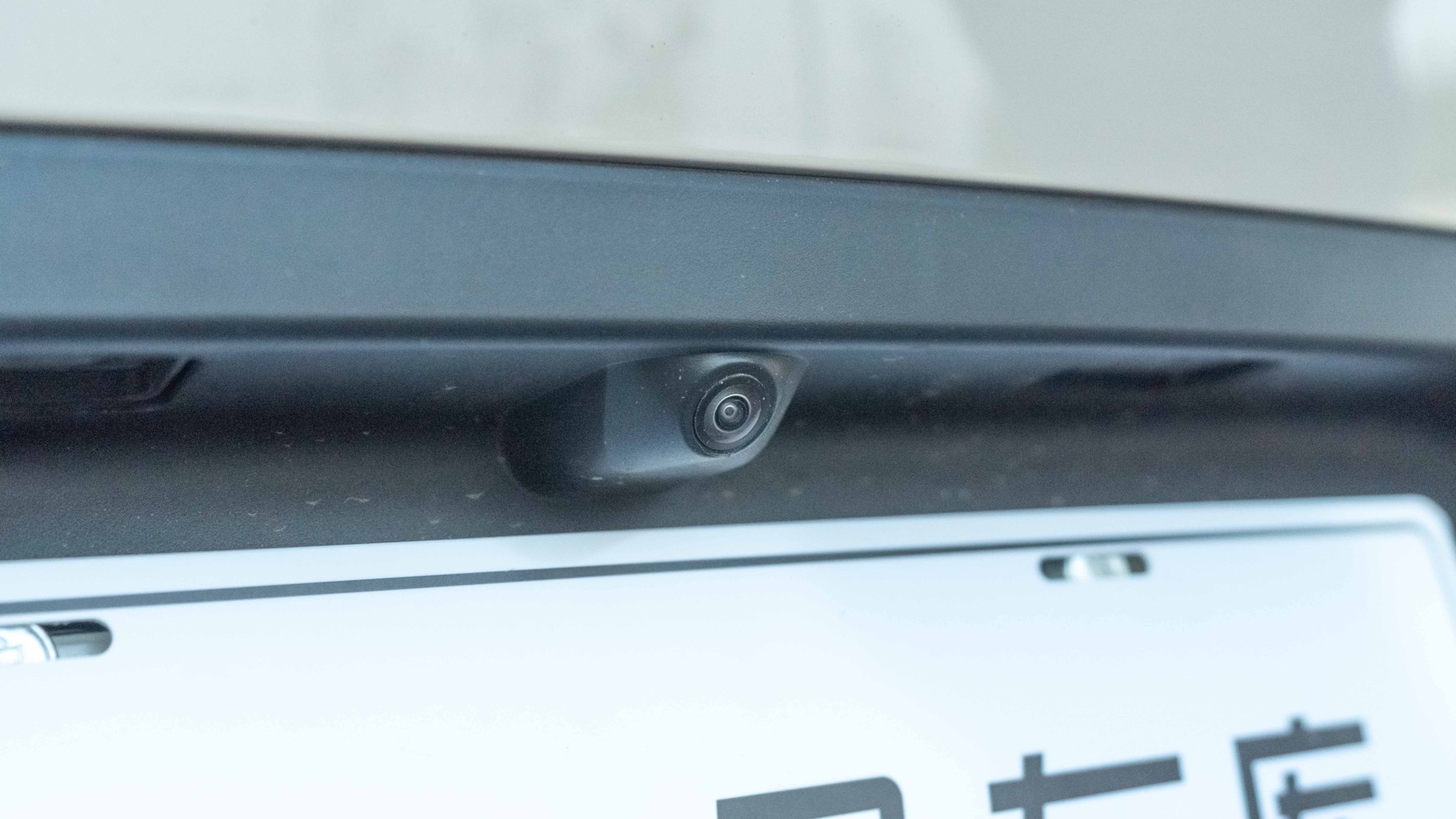
Let’s talk about the appearance first, and then let’s get in the car and see what changes have been made to the interior.
Interior: Still Smart, but Brown is not my Cup of Tea
Let’s start with the front row when discussing the interior. The interior of our car is brown, which personally, I wouldn’t choose. Apricot should be more popular with everyone.

The steering wheel features the two-spoke design popular in electric cars. On the left side of the steering wheel are voice buttons, custom buttons, instrument display adjustment levers, automatic parking buttons, and advanced driving assistance buttons.
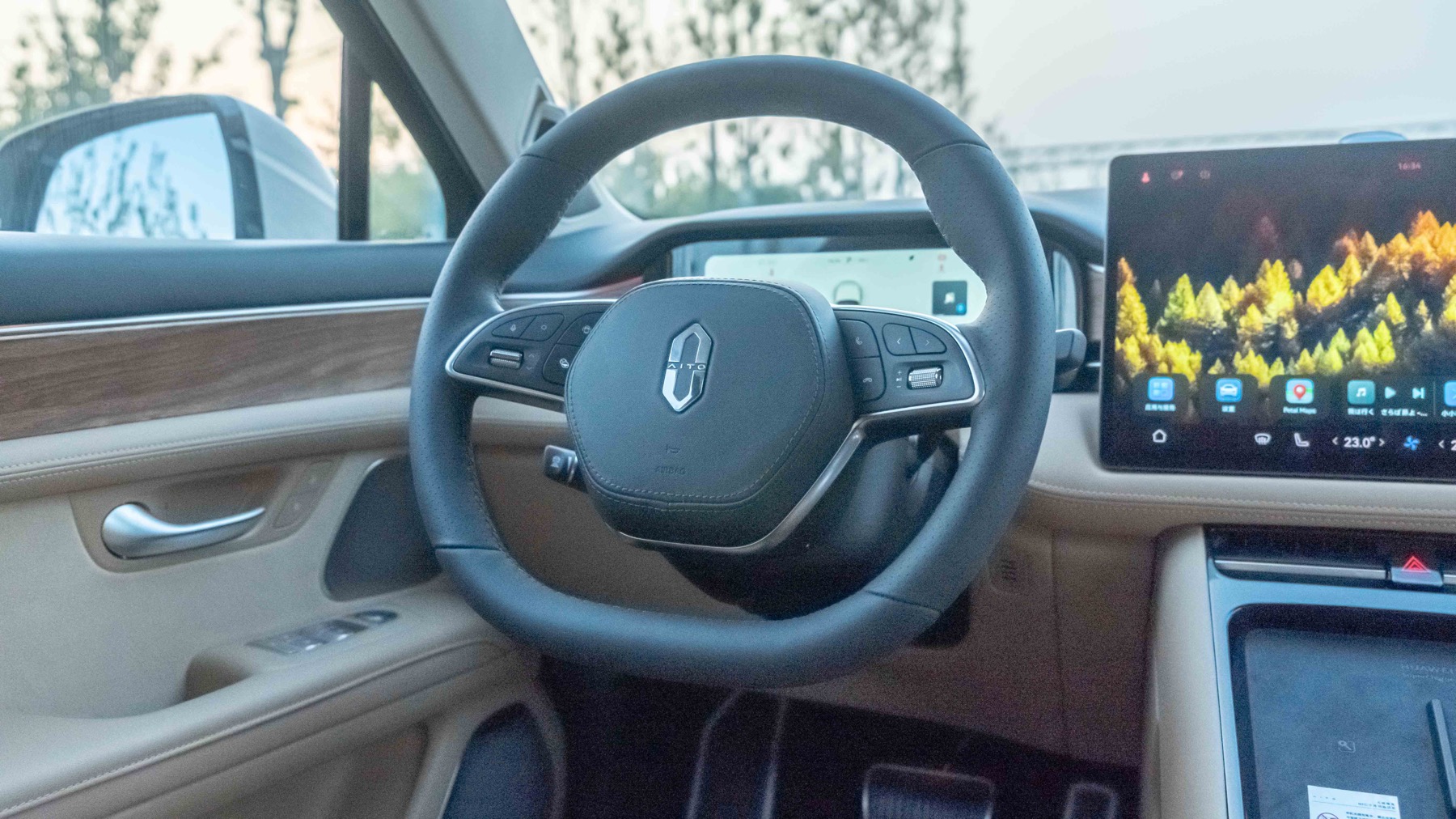
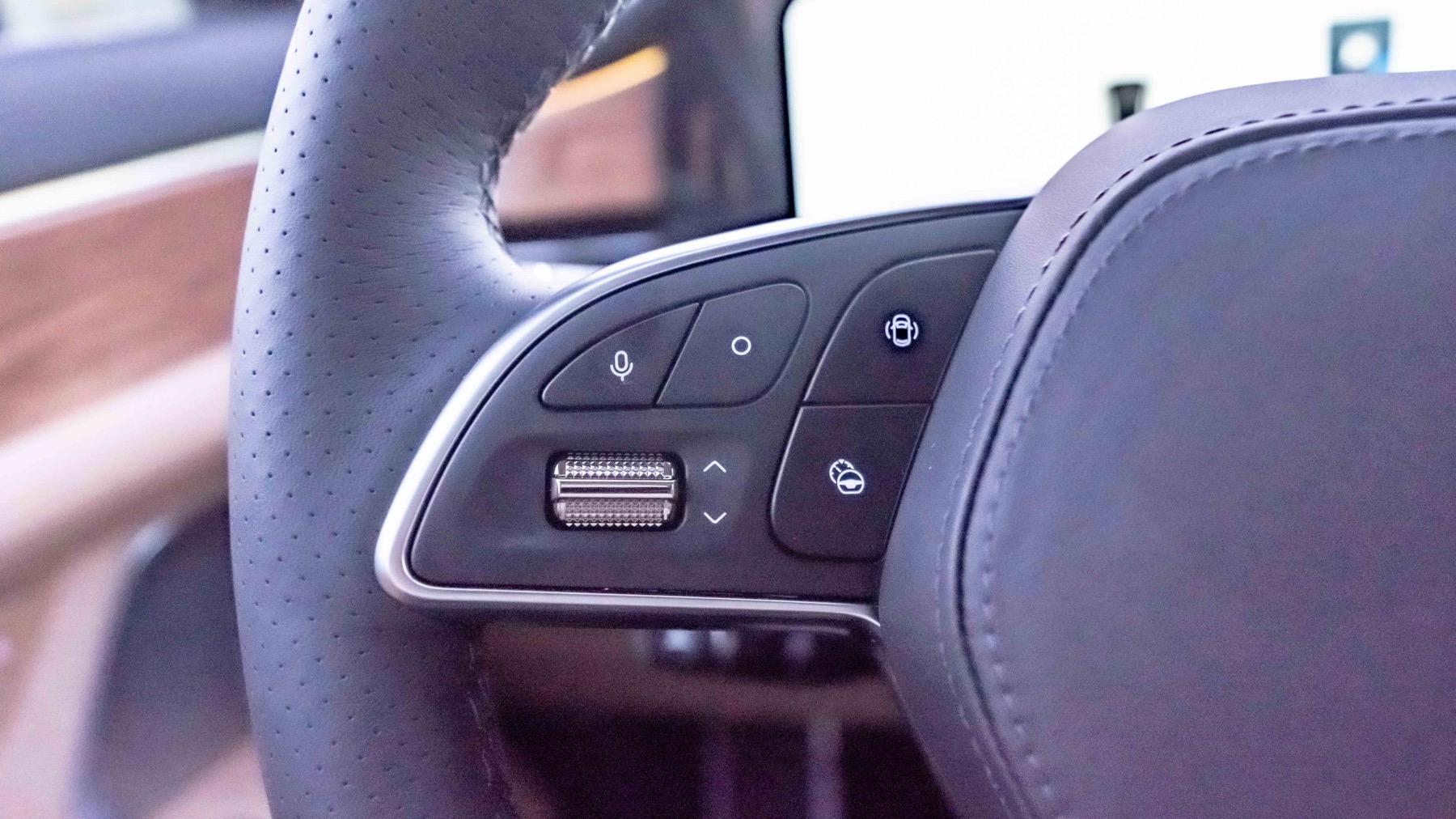
On the right side of the steering wheel are phone answer and hang-up buttons, left and right direction keys, multimedia pause play and volume control rollers.
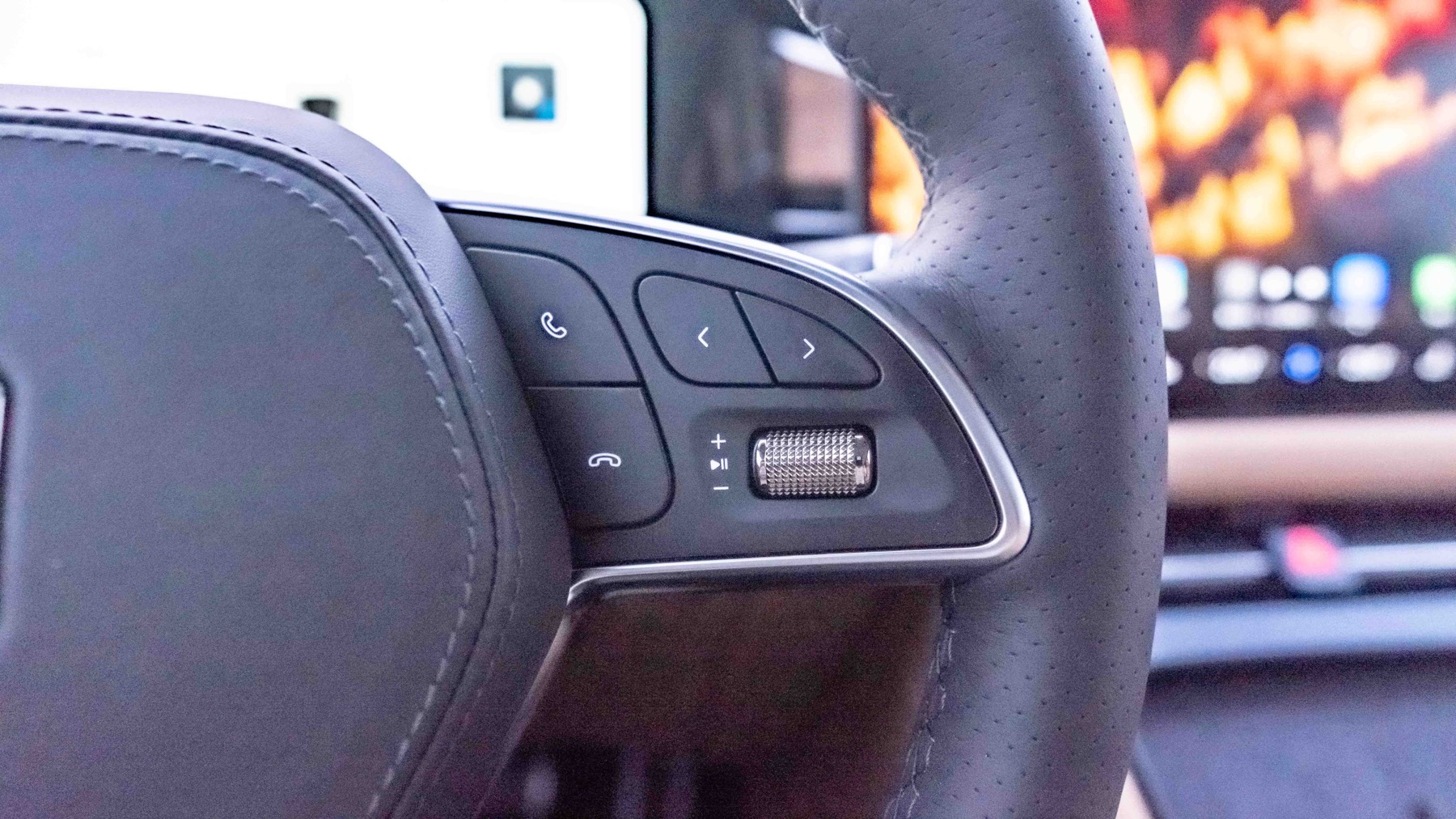
To the left, above is the light control lever, below is the advanced driving assistance control lever, and to the right is the wiper control lever.
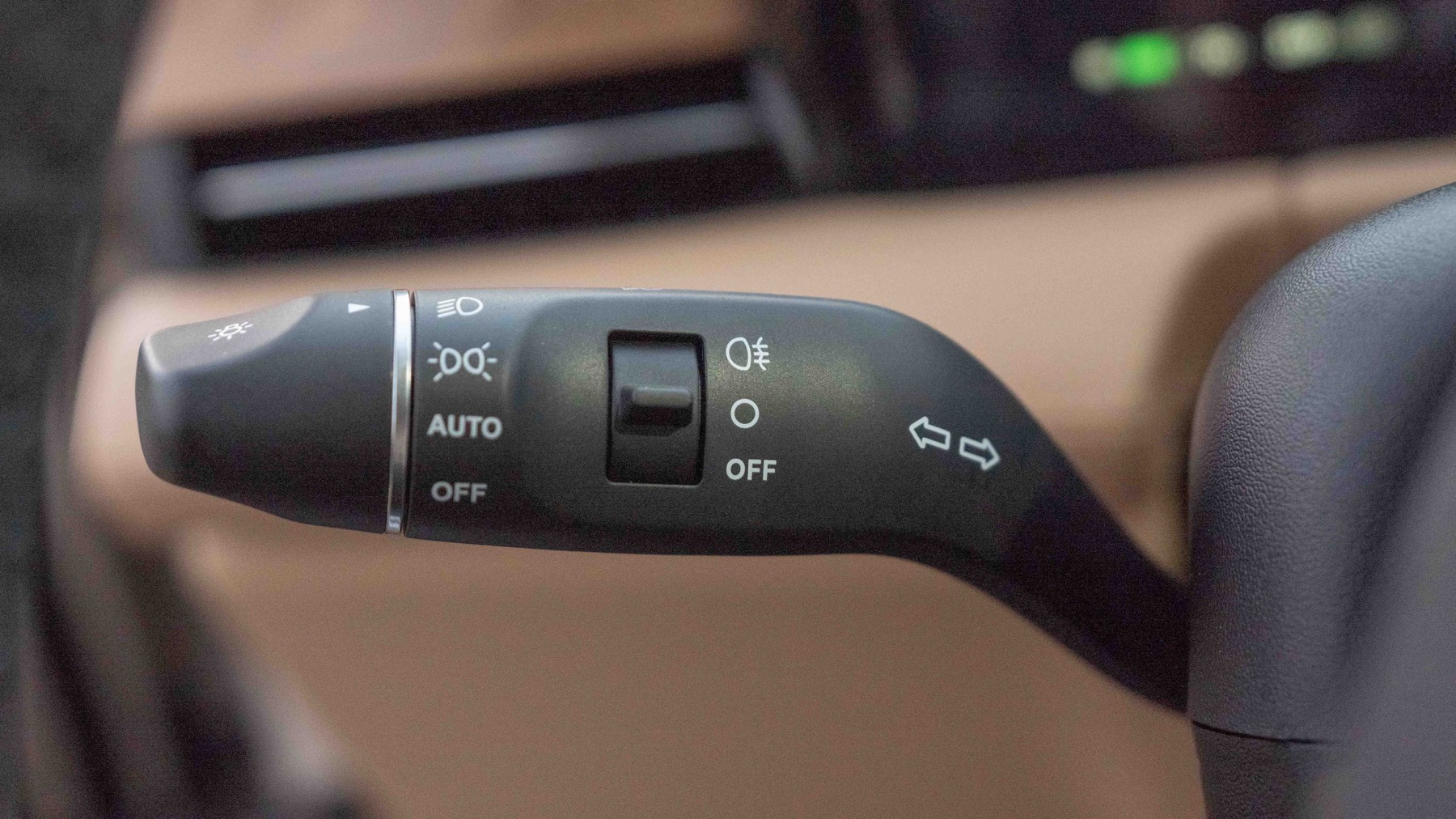
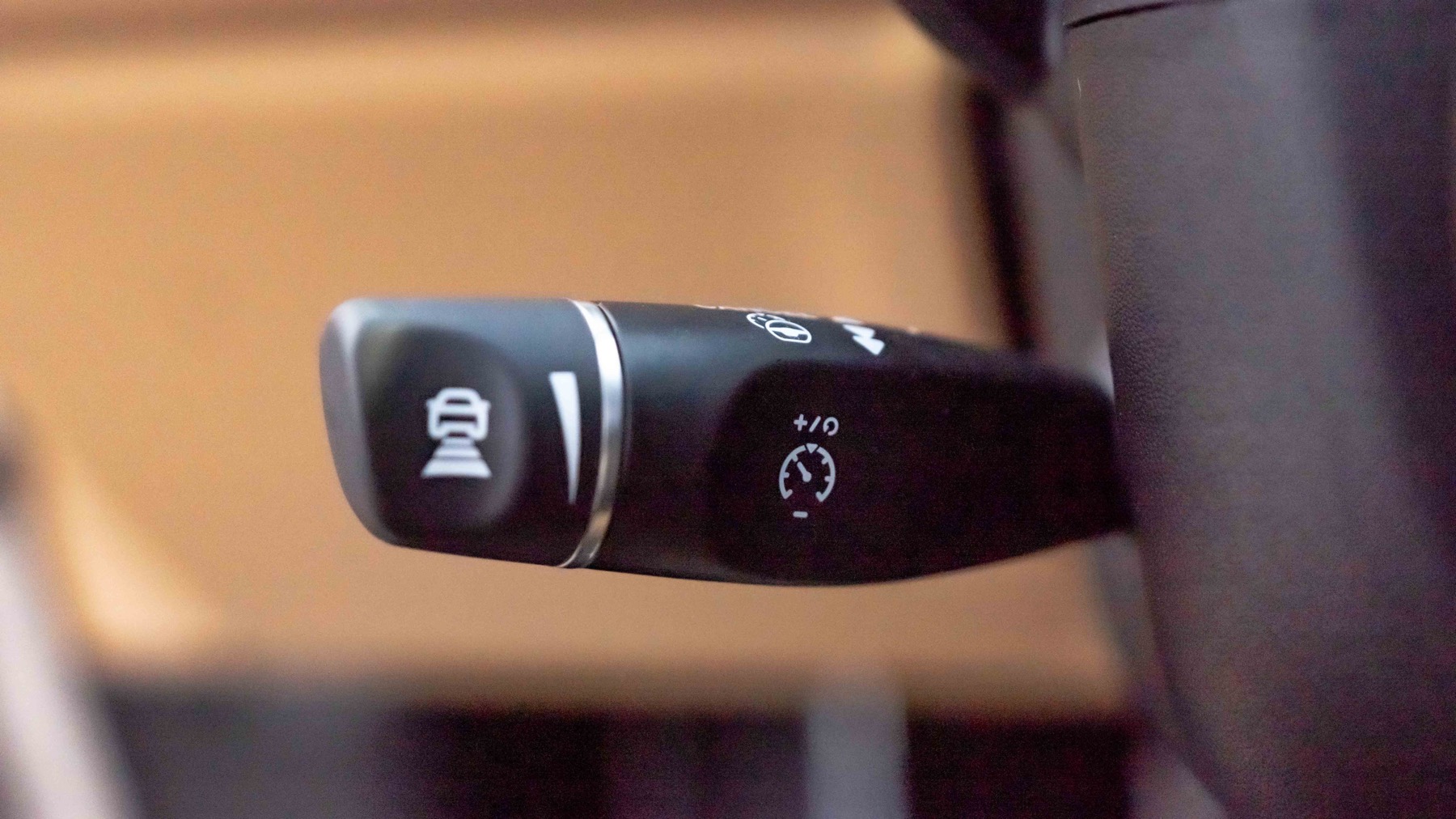
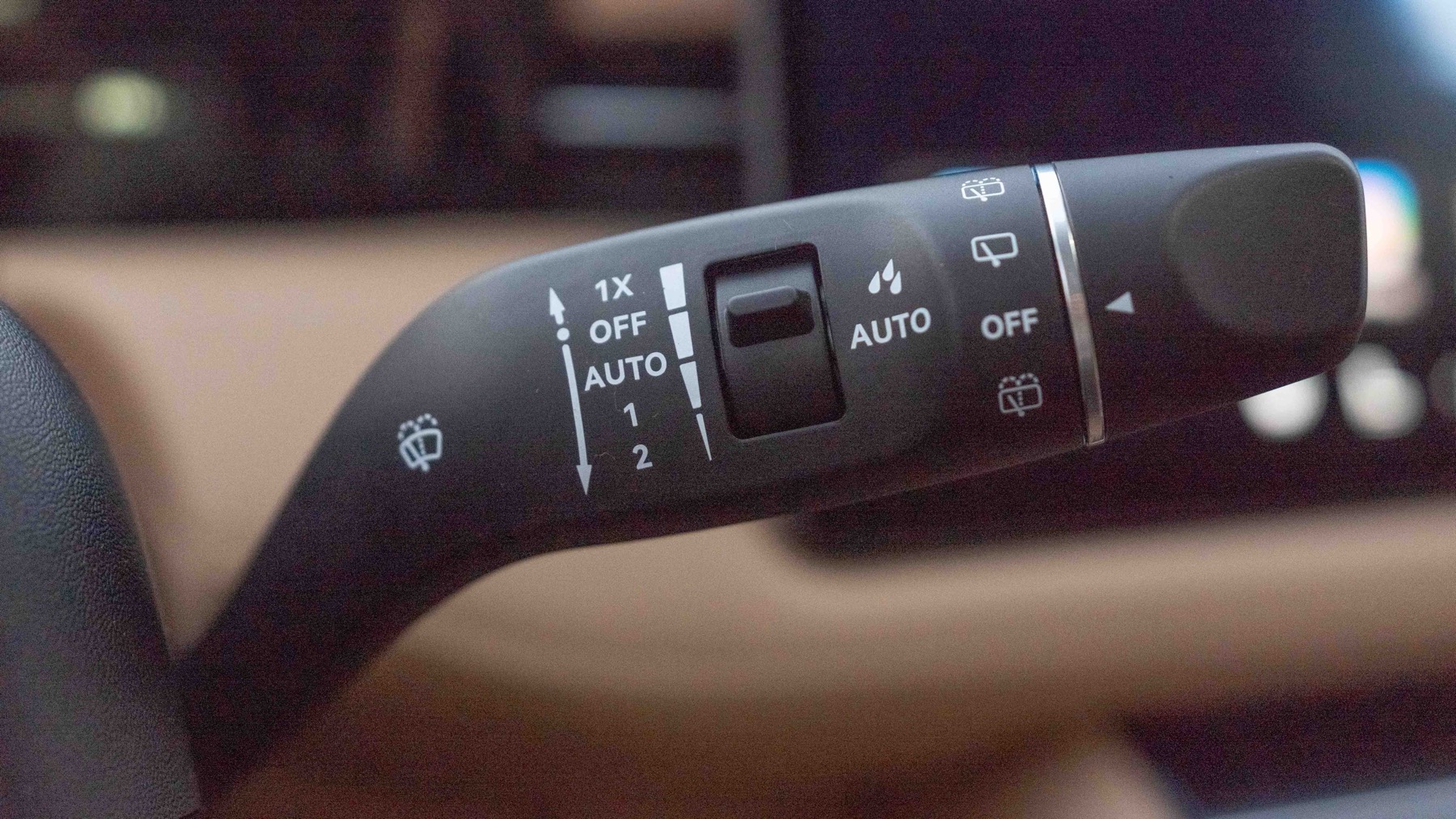
On the left side of the instrument panel, you can customize the display of five different interfaces for the charging and discharging status, travel information, navigation information, tire pressure information, and kinetic energy recovery information.“`
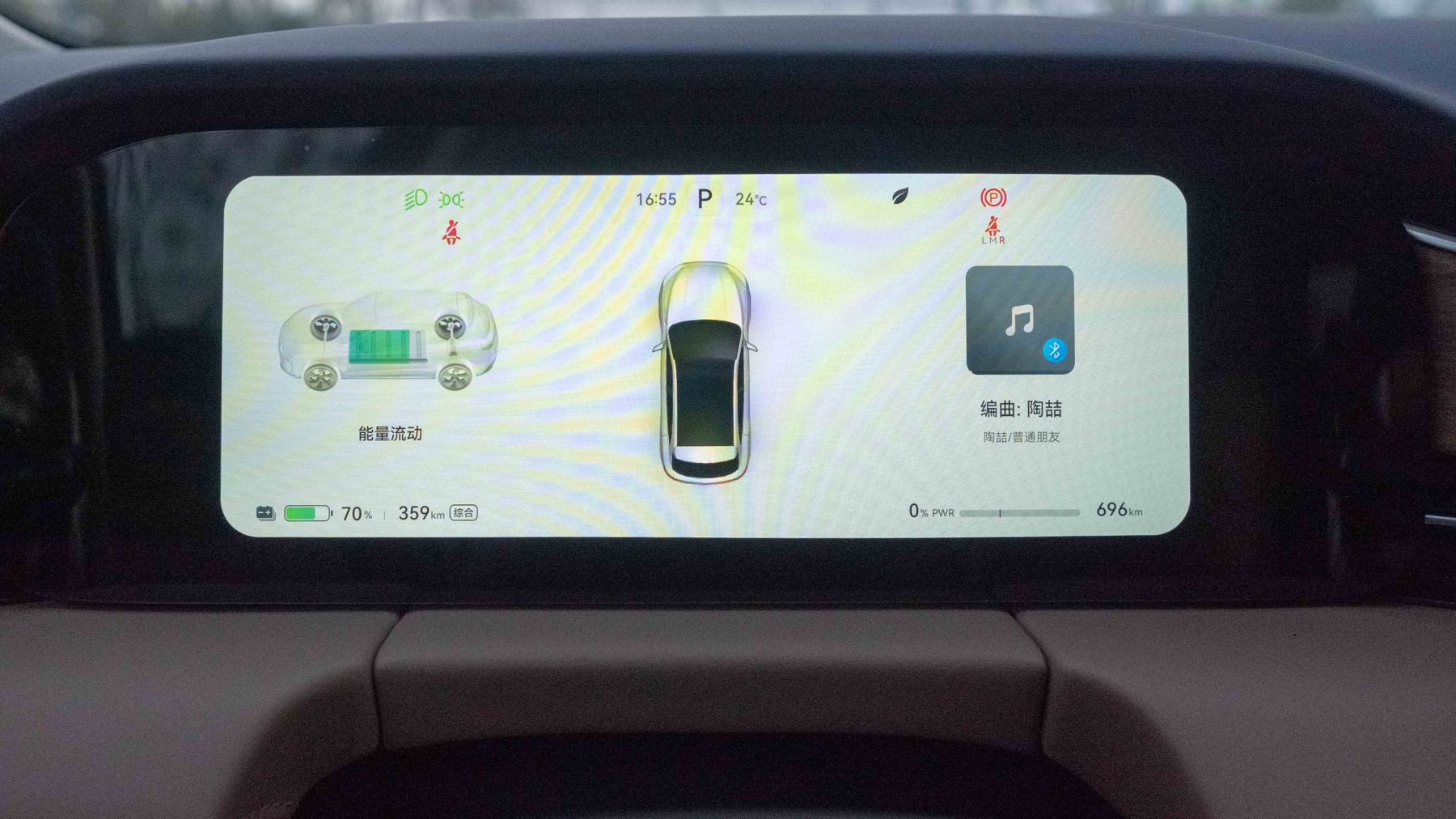

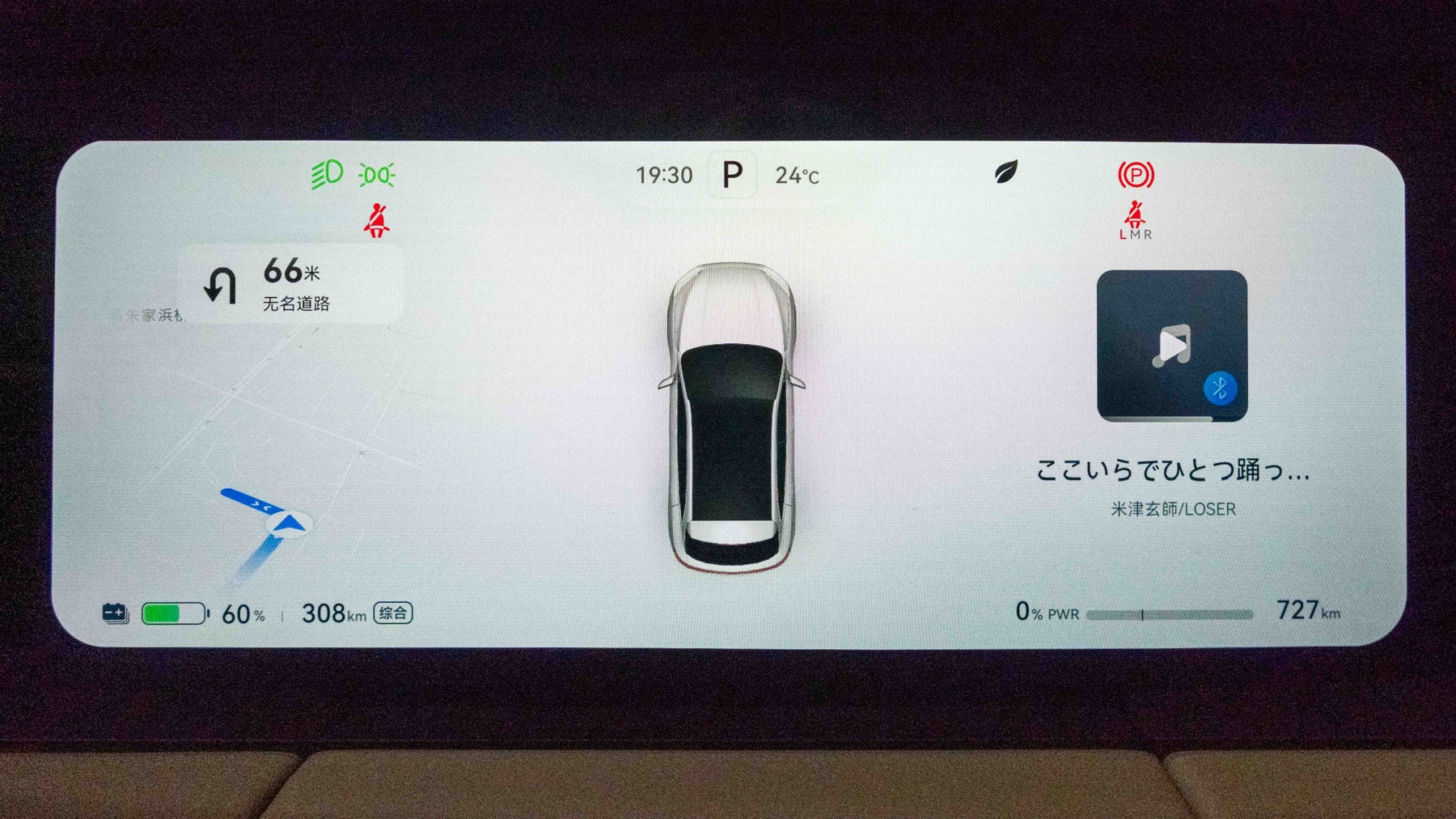

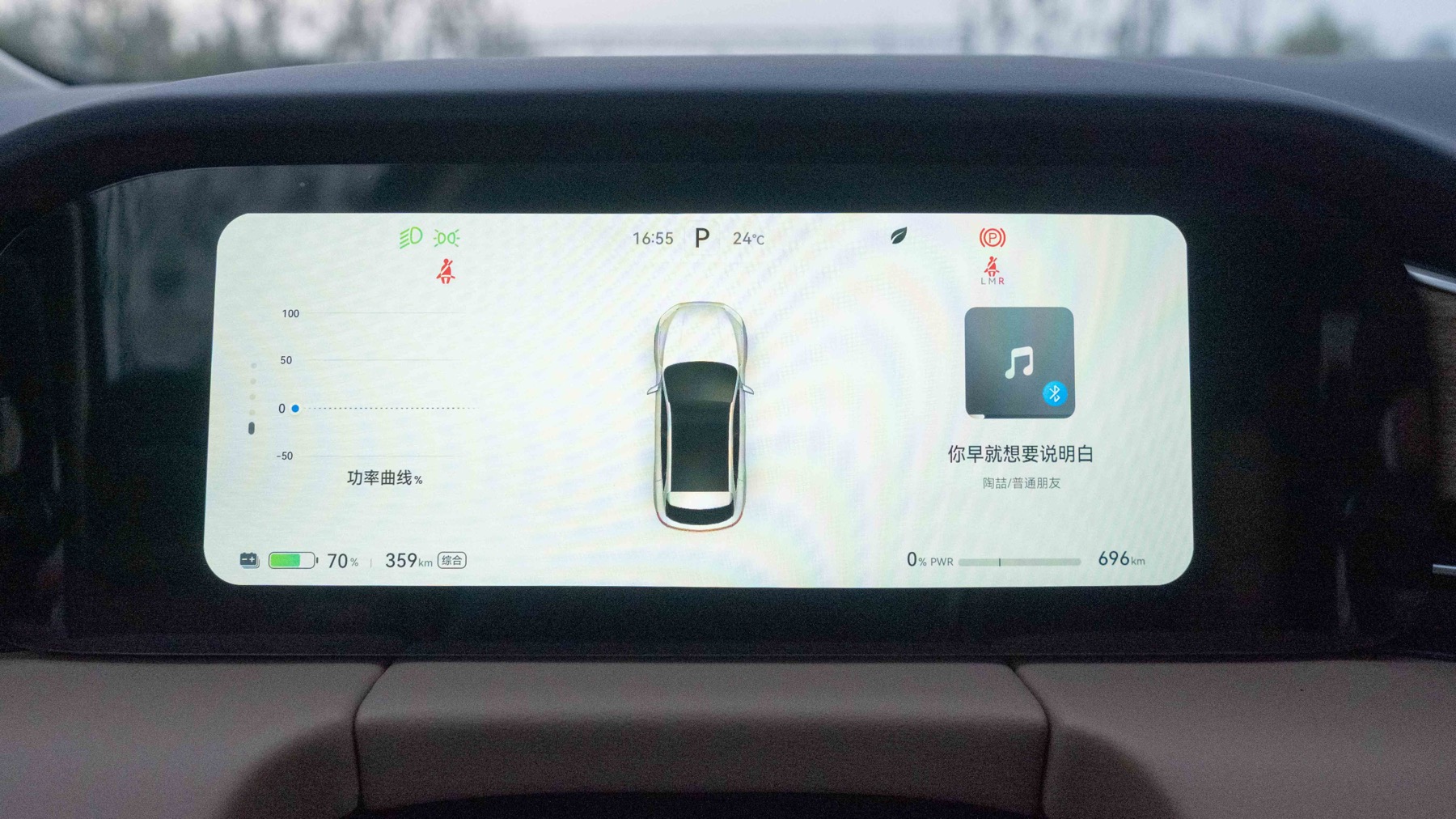
Additionally, the M5 EV can display navigation information and driving assistance status on the HUD in addition to displaying the speedometer.
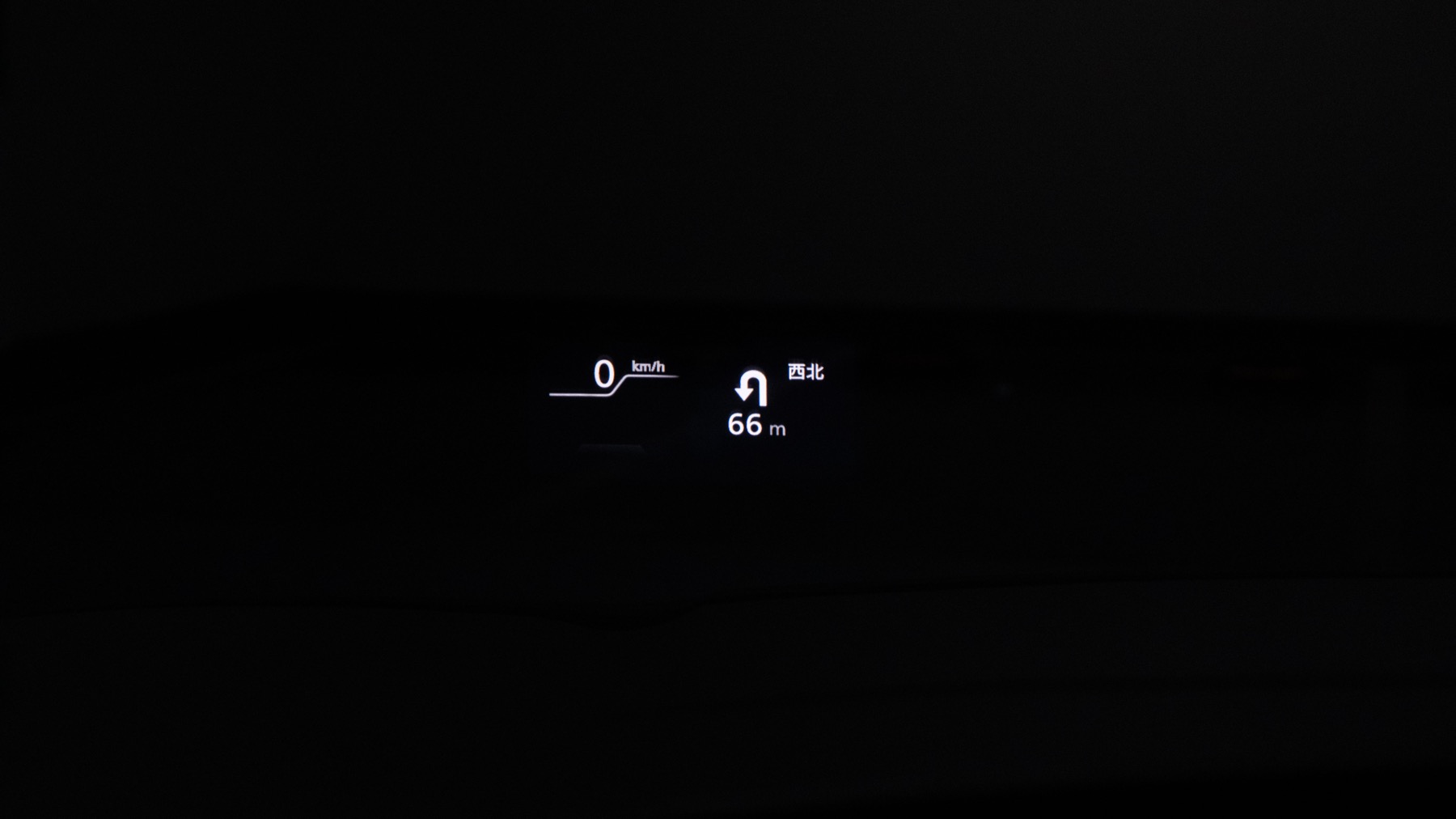
The center console still features a tablet with the latest Hongmeng system, and below are some interface shots. Since the intelligent cockpit is not included in 42Test’s test items, please stay tuned for our upcoming 42Mark intelligent cockpit review program.


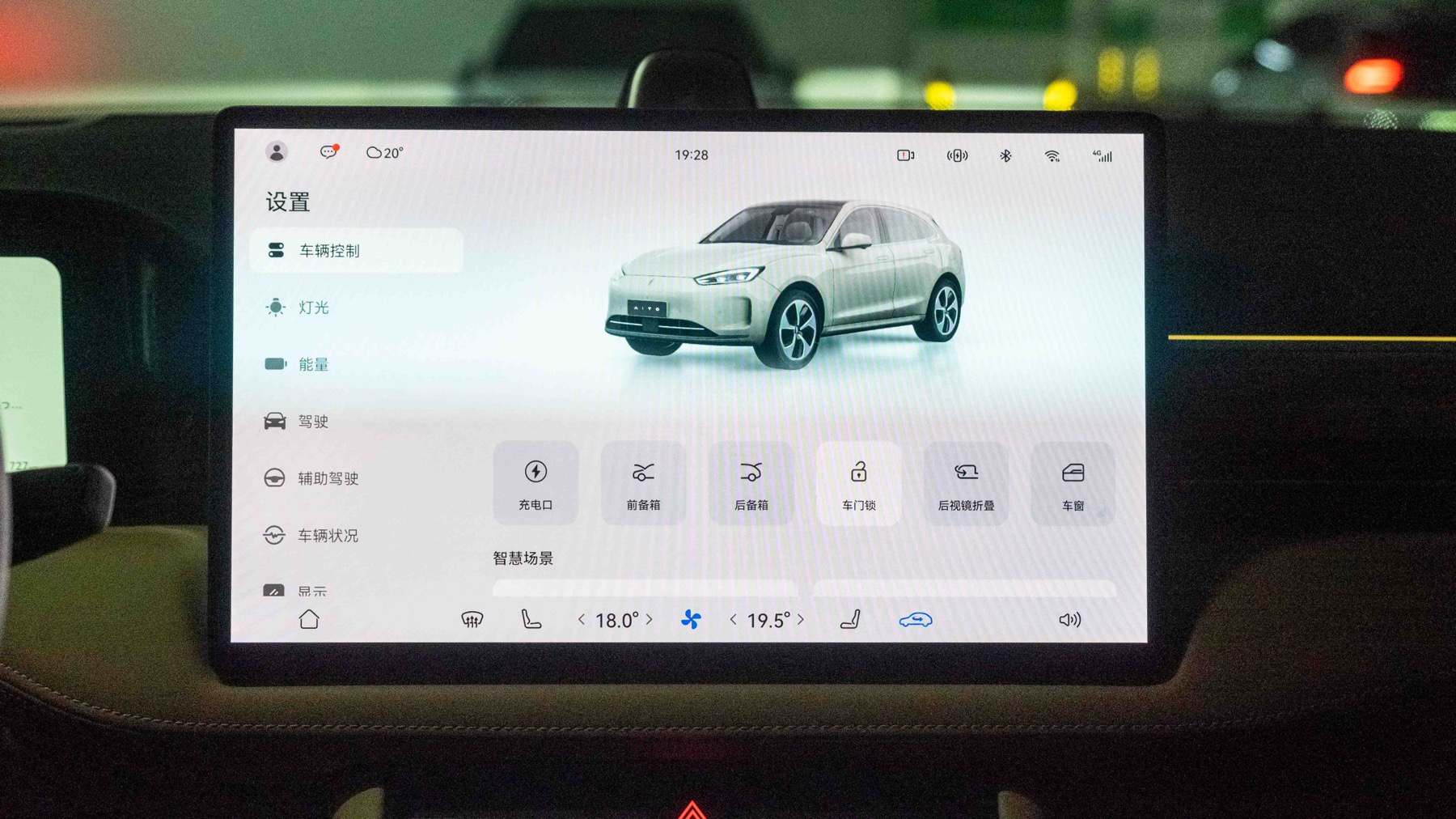
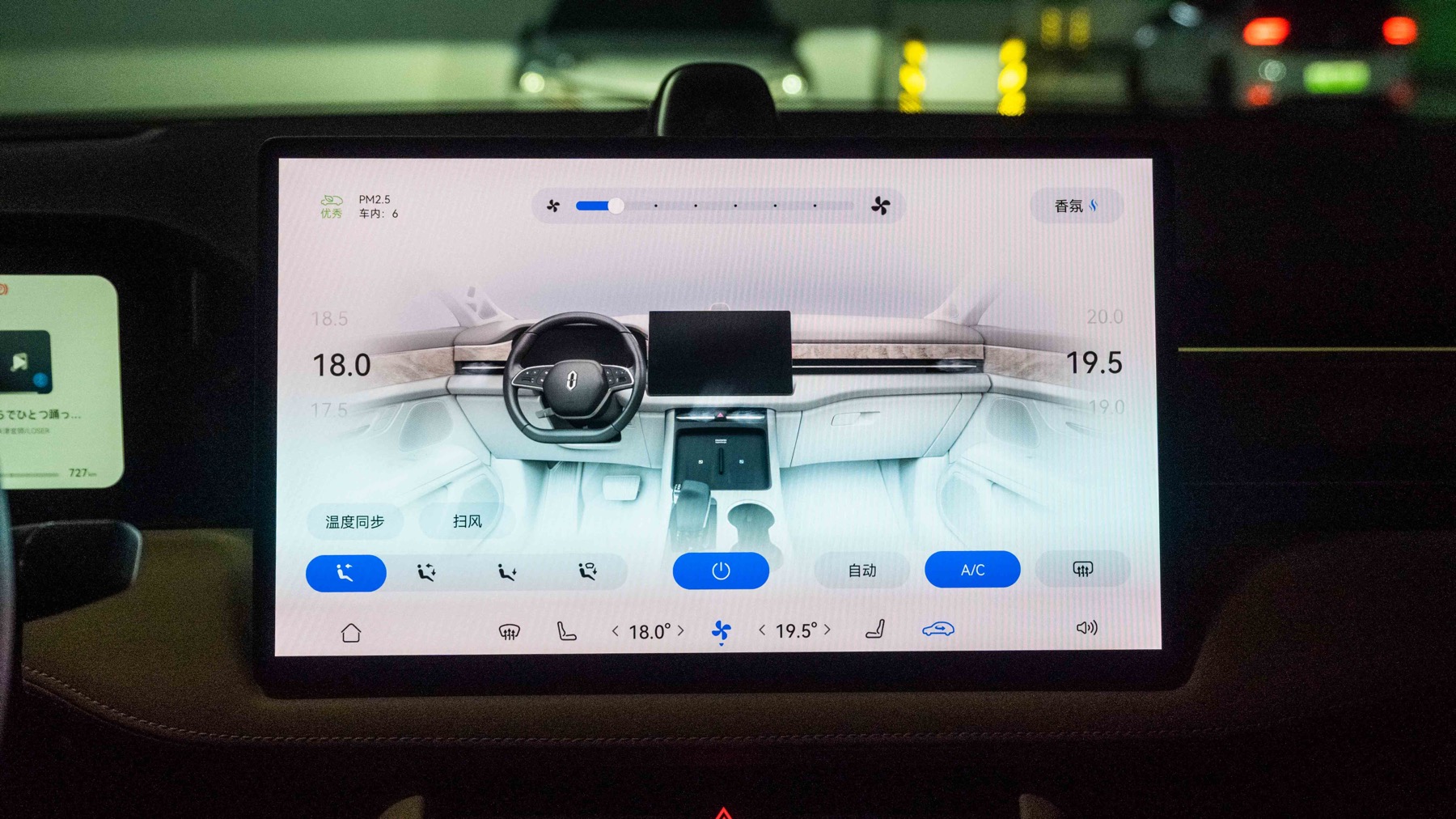
“`
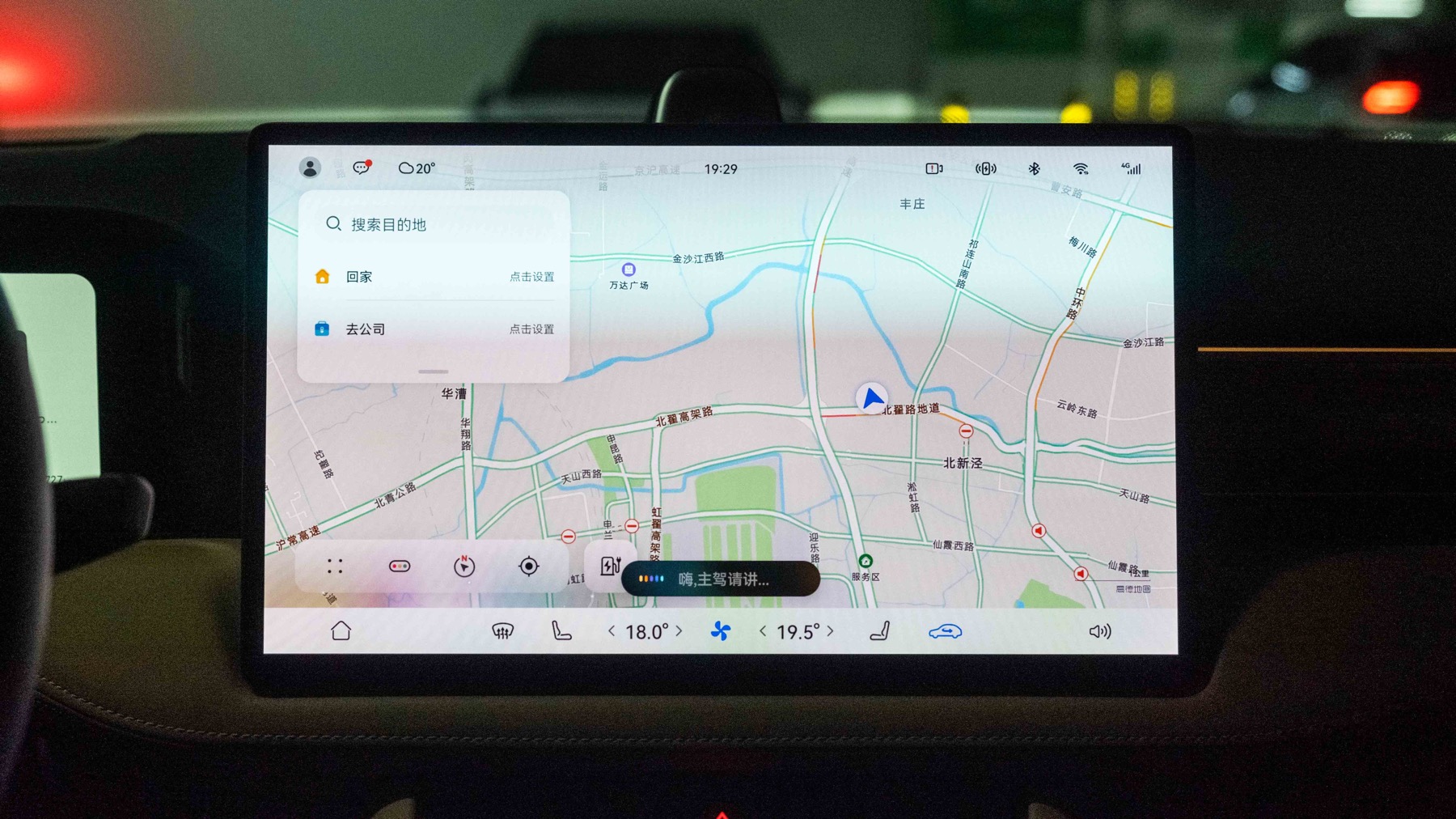
The car doors are designed with a framed door and double-layer laminated glass. There are two speakers on each door, one more than conventional vehicles.
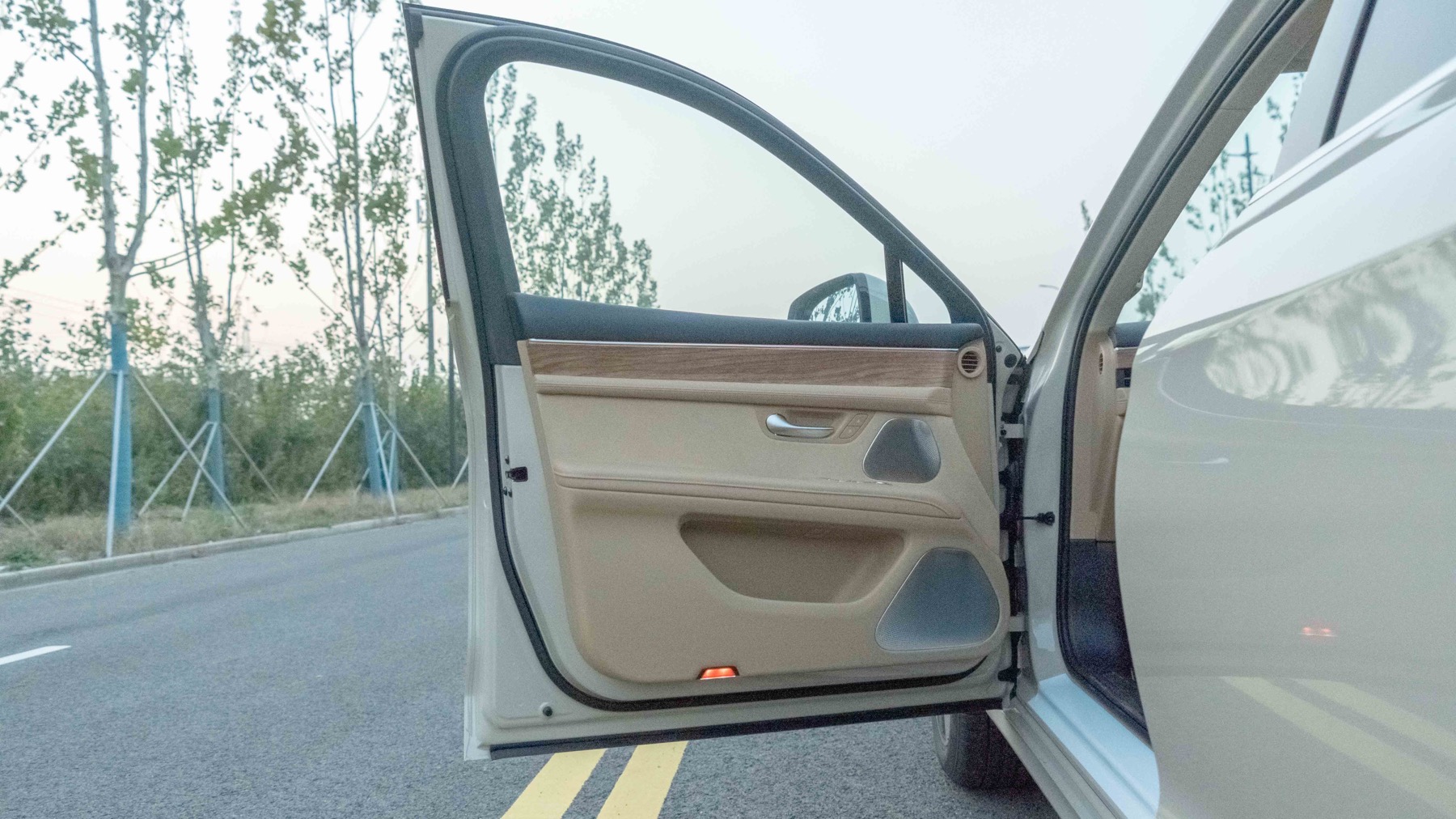
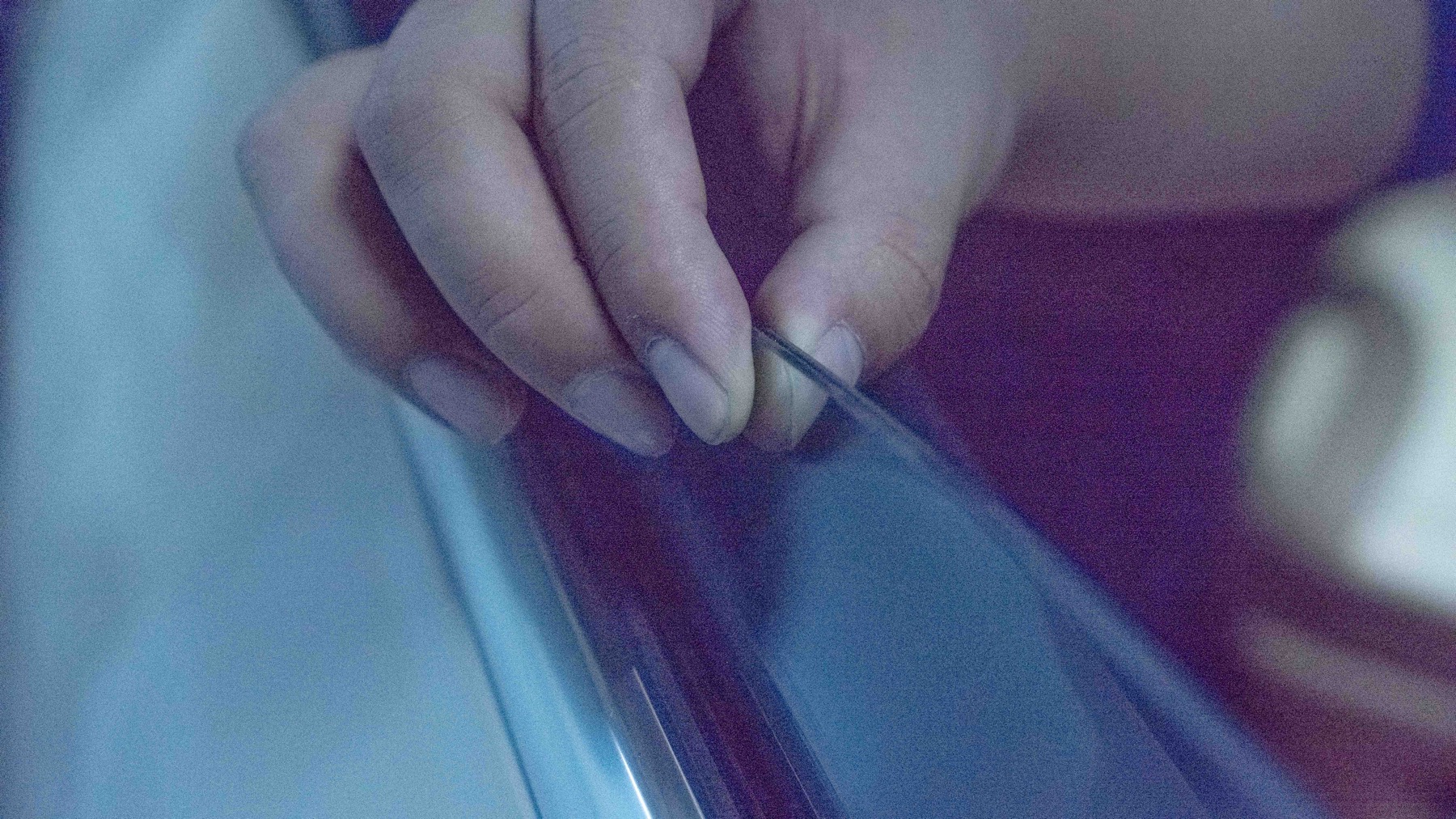
In addition to the window and door control buttons, the door also retains the mirror adjustment button. This is more convenient for multiple drivers who need to adjust the rearview mirror frequently.

The two speakers on the door are equipped with metal sound covers.
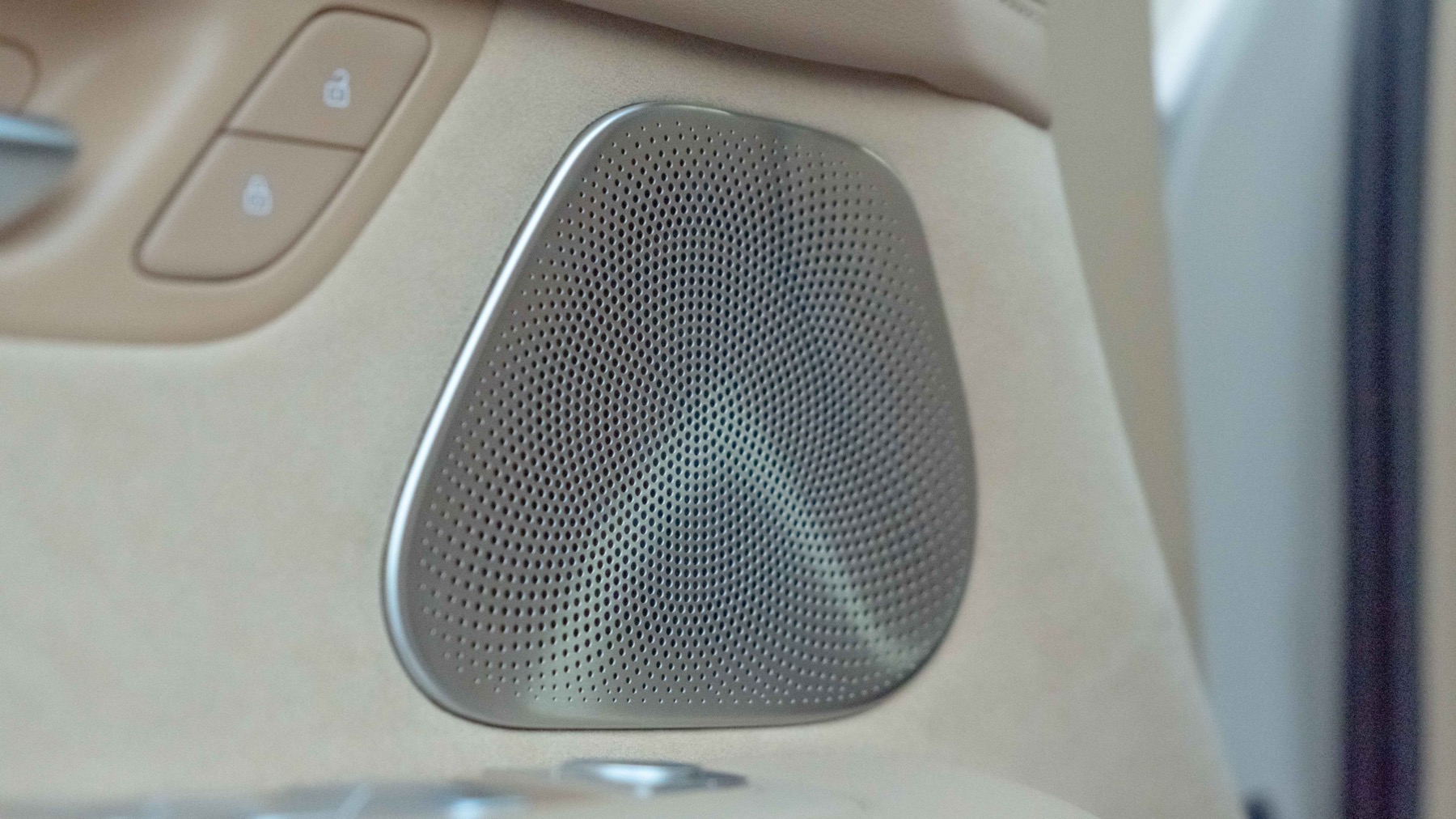
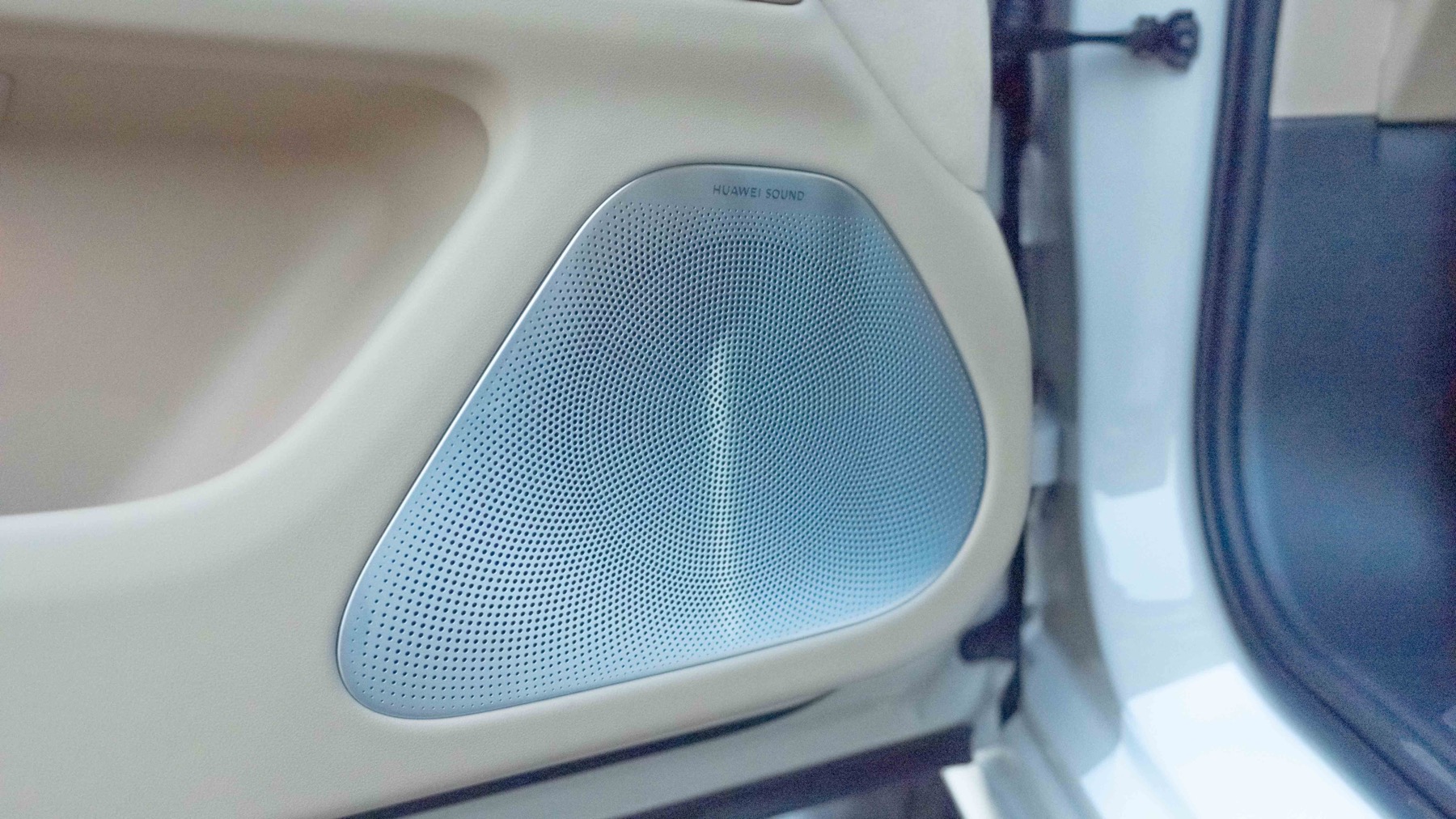
The storage space on the front door panel can hold about three bottles of mineral water.
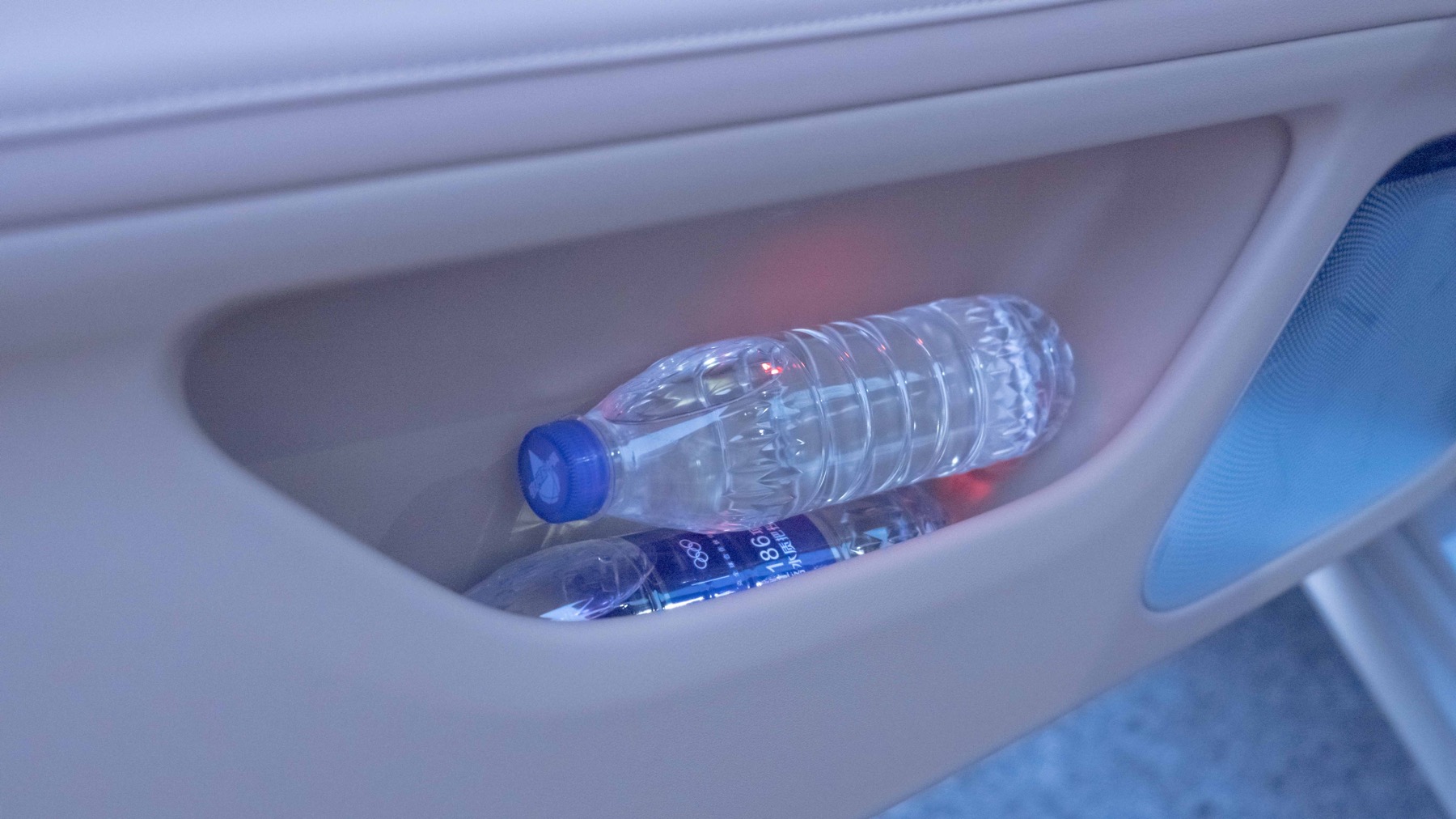
The driver-side A-pillar is equipped with a DMS detection camera that supports facial recognition and quick loading of corresponding vehicle settings.
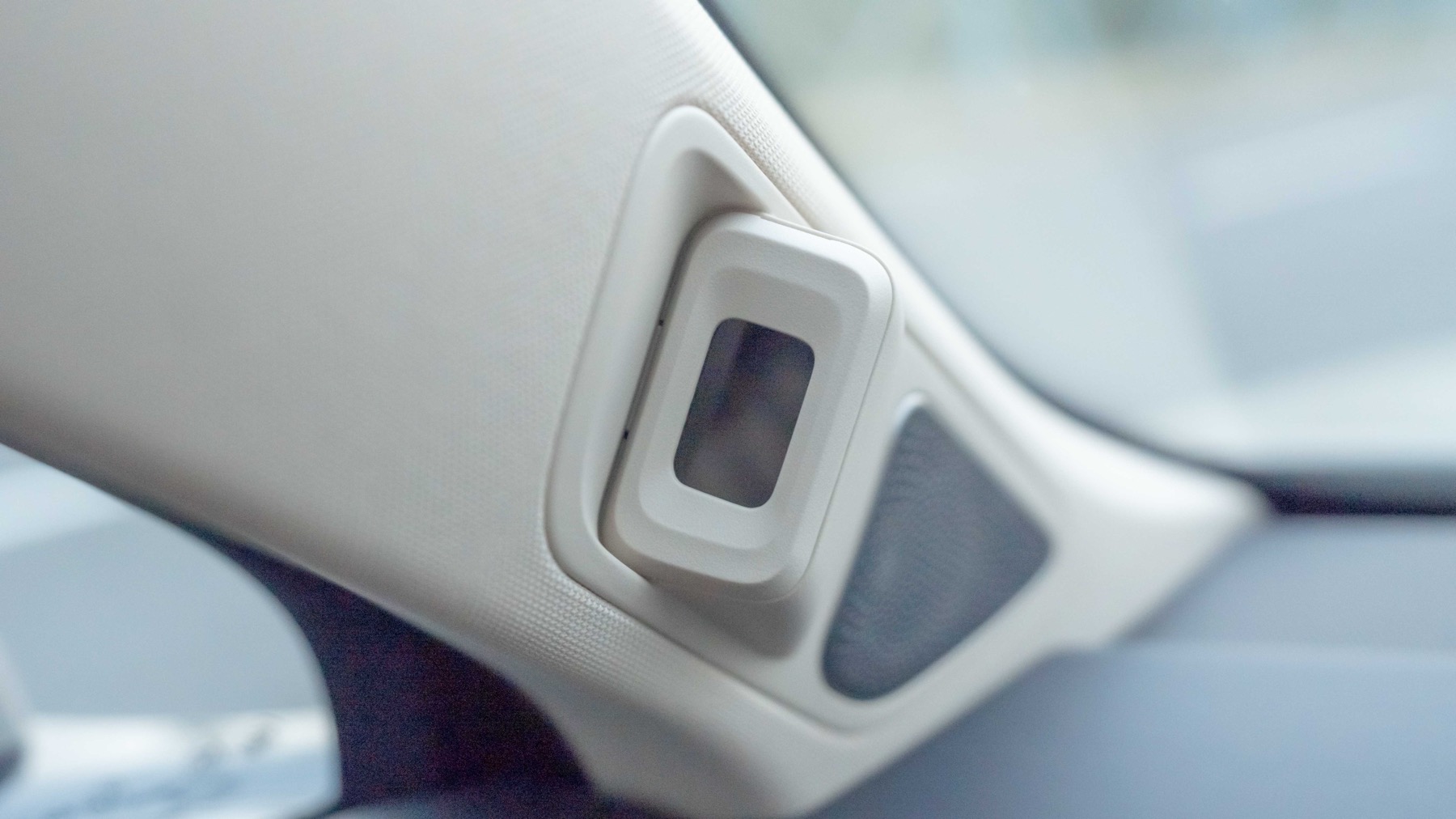
A high-pitched speaker is placed in the center of the center console. If you look closely, you can see a petal-like pattern. It has to be said that although the bass on the Huawei SOUND audio system on the M5 EV is not particularly strong, the sound is very clear when listening to human voices.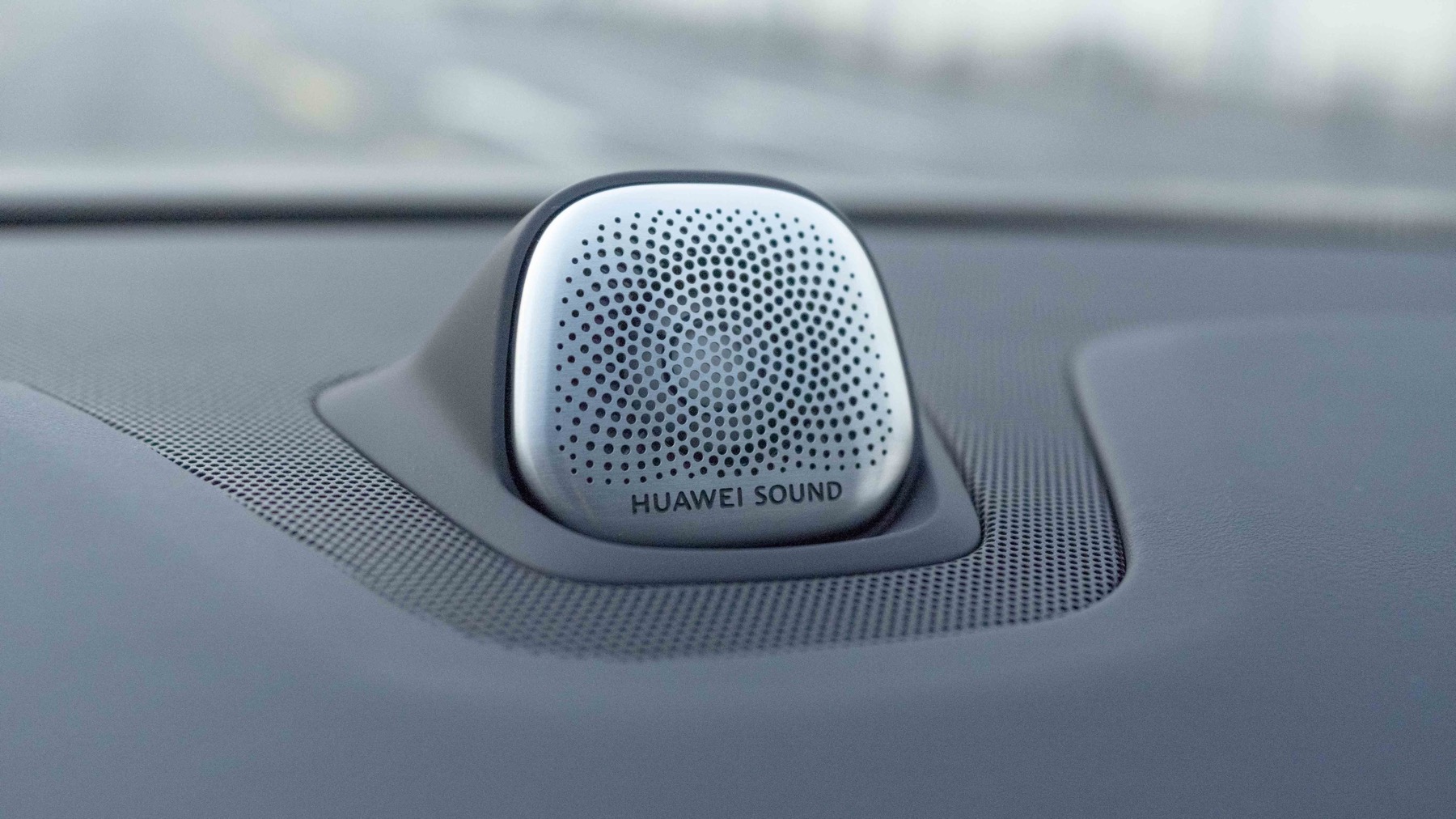
The gear lever is covered with leather, and you can shift gears by pressing the left button, while the P gear button is also separately preserved.
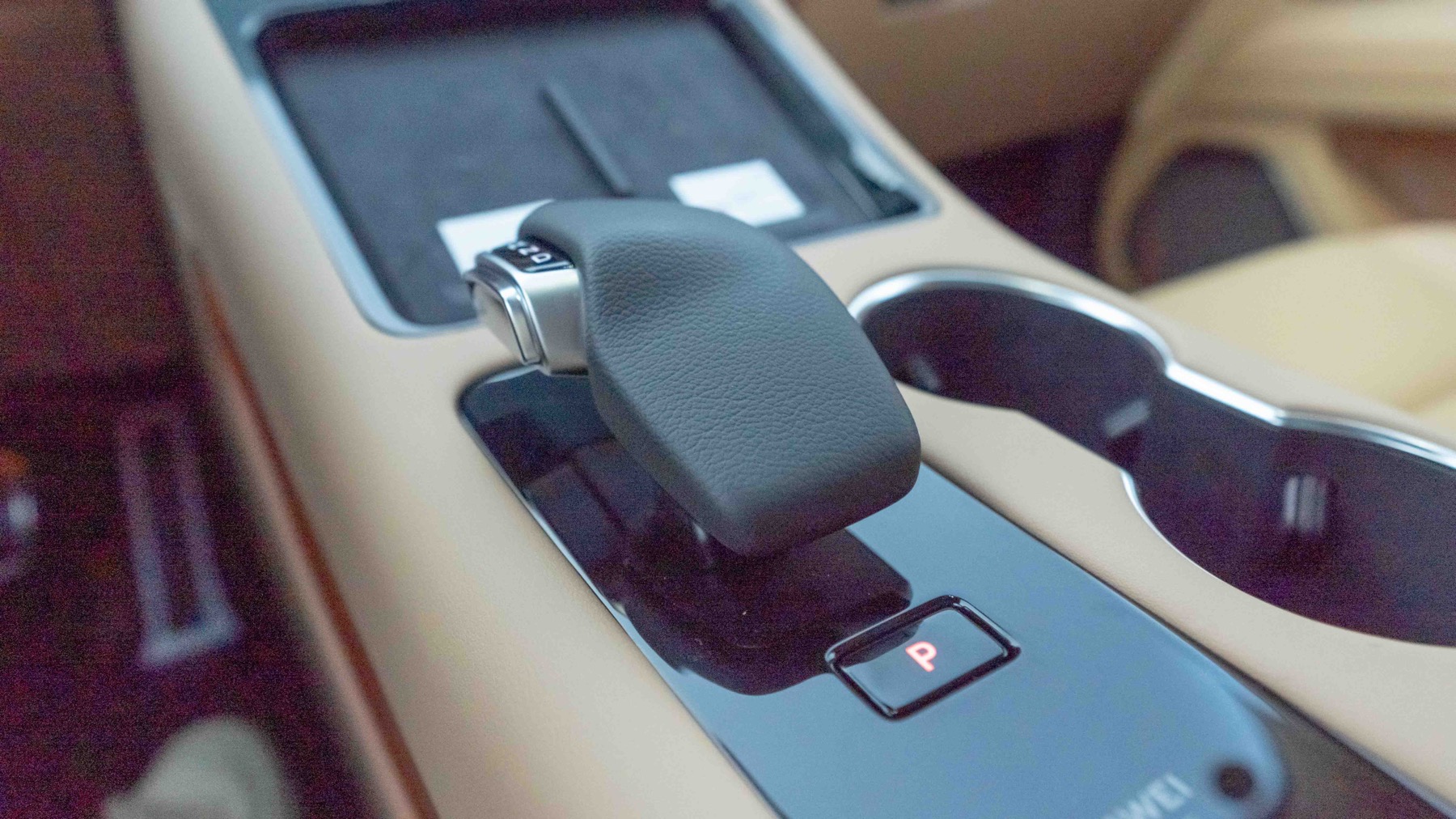
In front of the gear lever, there are two wireless charging pads that support Huawei mobile phones’ 40W wireless charging. Other mobile phones are also charged at a good speed. In addition, due to the air outlet at the bottom, the heat generated during wireless charging is significantly less than that of other models.

The hazard light button is placed in front of the wireless charging pad, and the air outlets are on the left and right. They do not support physical adjustment and can only be adjusted on the central control screen.
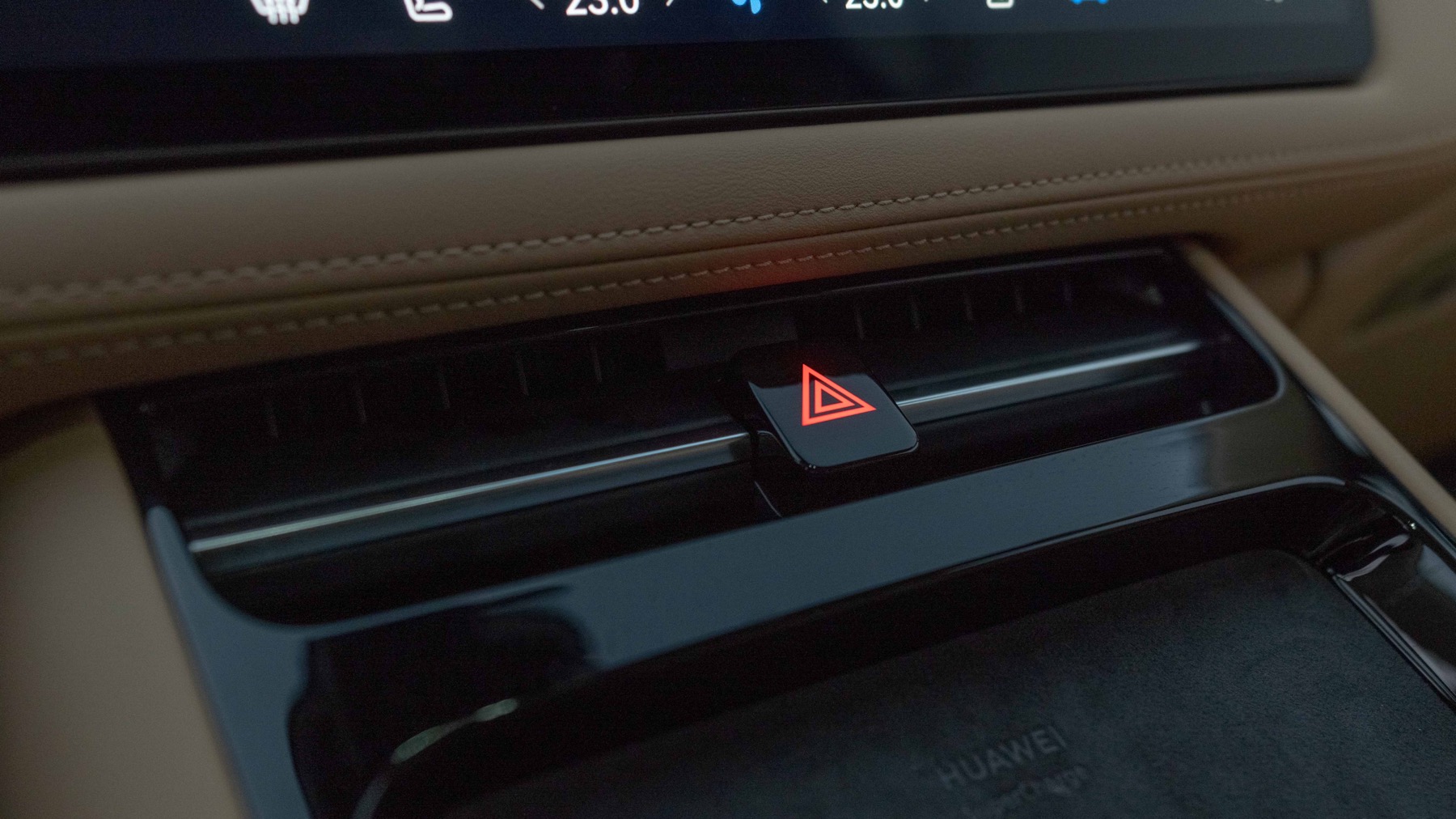
The size of the armrest box is moderate, and the depth is not sufficient to hold a 500 ml bottle of mineral water. There is also a 120W car quick charging port inside.

Both the driver and passenger air outlets do not support physical adjustment of the wind direction. There are wood grain decorations and ambient lights above them.
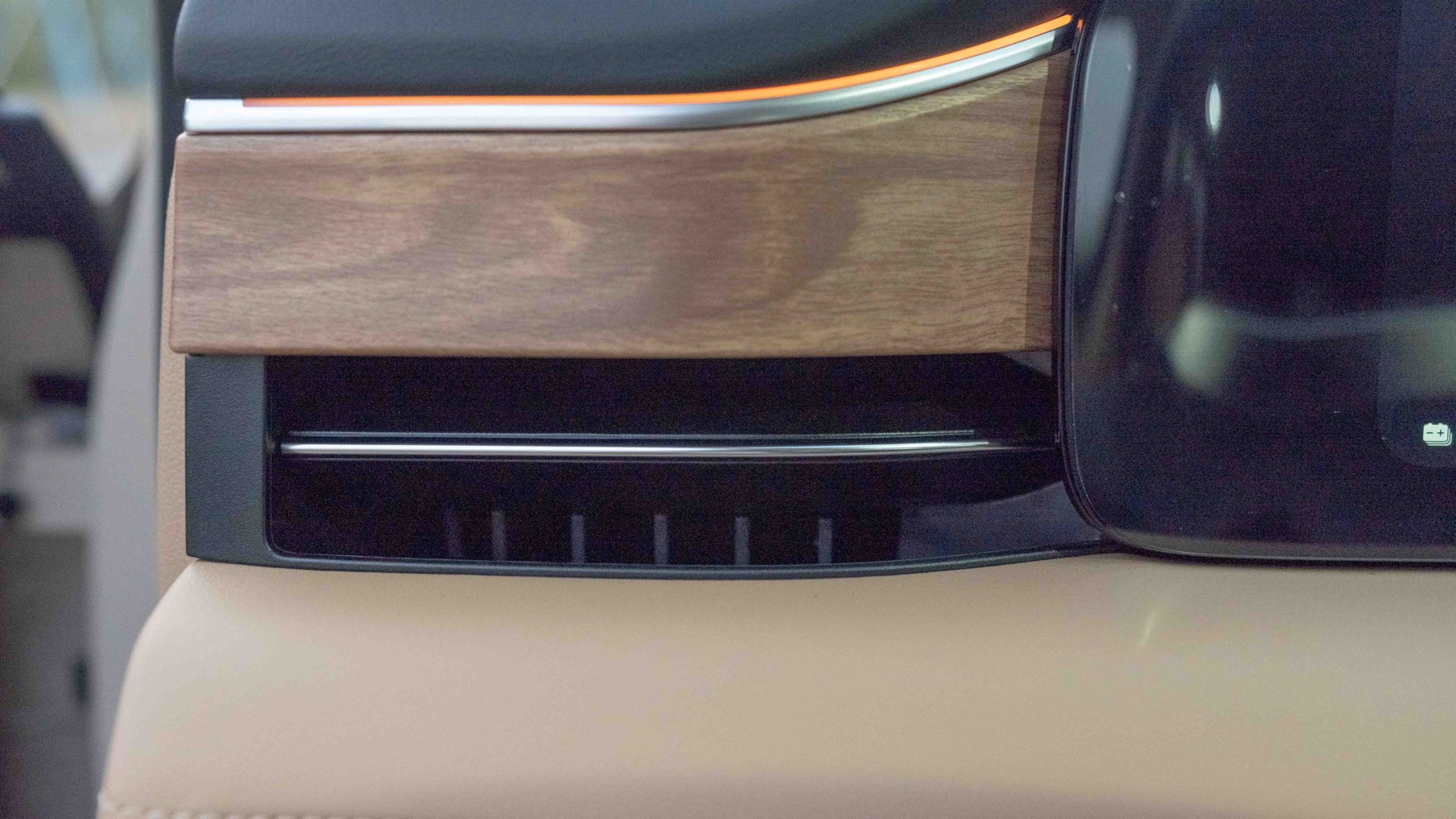
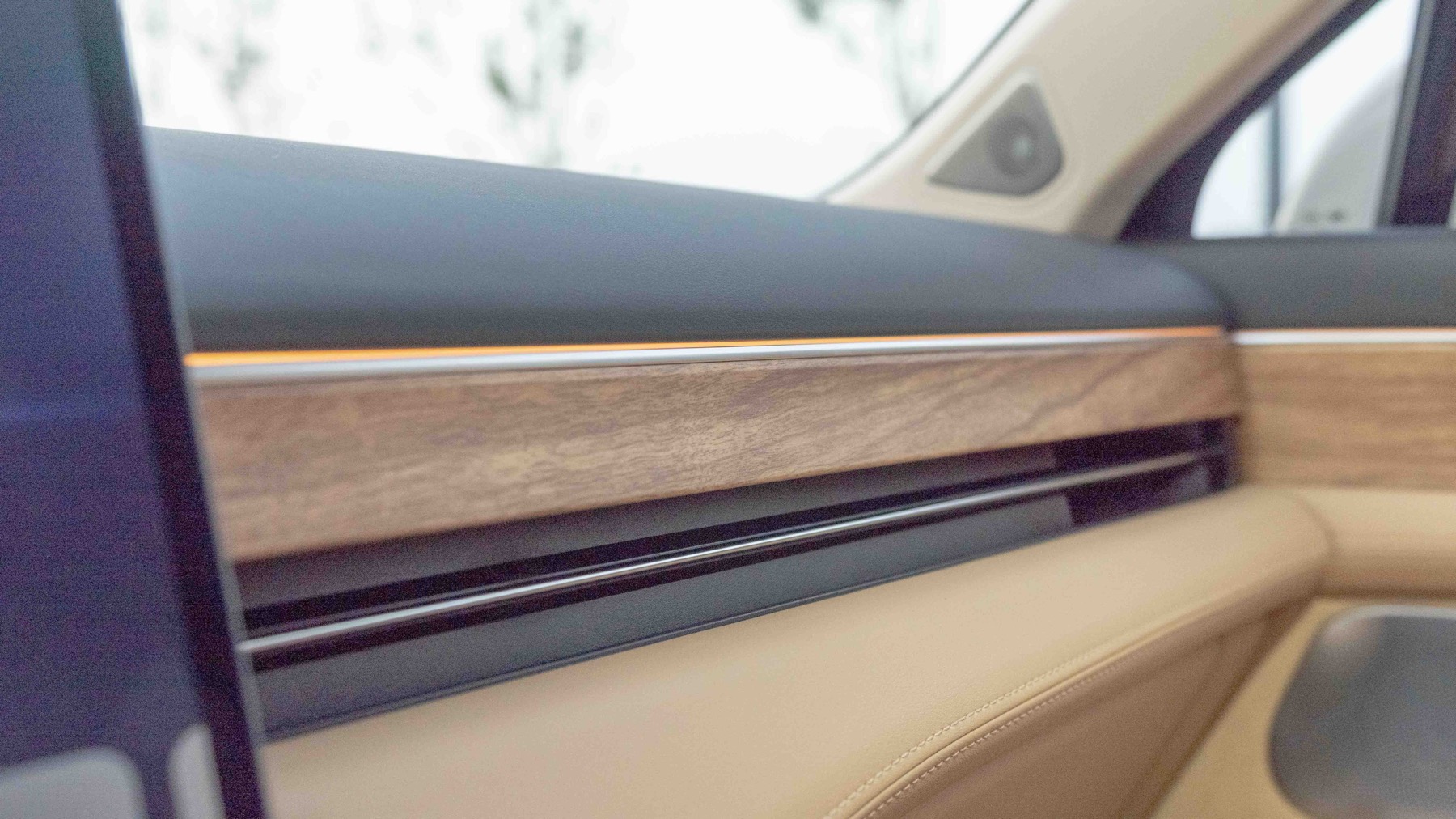
The lower central area is not completely hollow, as there are small hollows on the left and right sides, where only small items can be placed. There is a USB-A port for data transfer on the driver’s side, a USB-C port that supports fast charging up to 66W, and a USB-A port that supports fast charging up to 66W on the passenger side.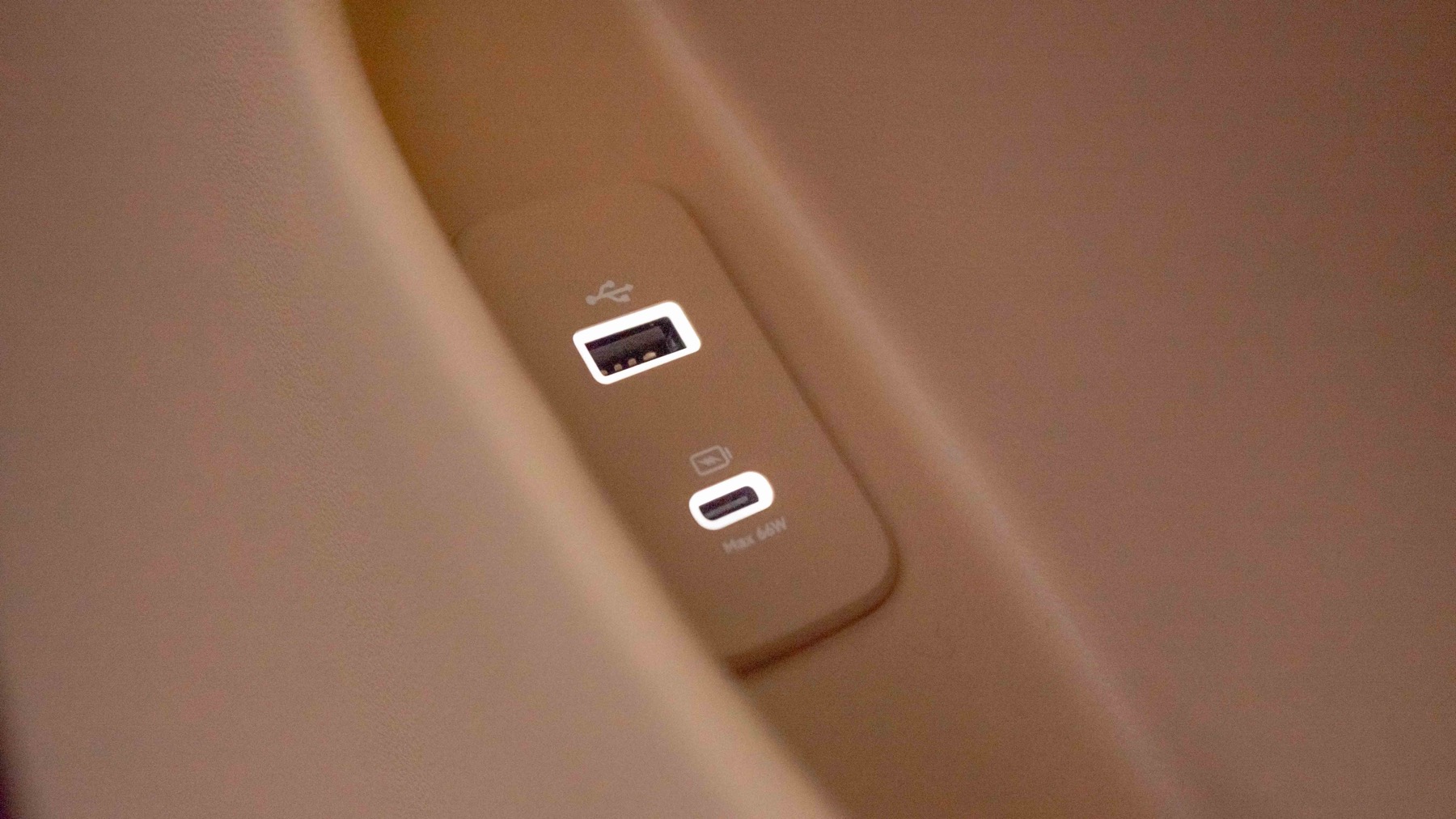

There is a makeup mirror with adjustable brightness and color temperature on both the driver and passenger side, which can meet different users’ makeup needs in the car.


The overhead control panel reading lights are touch-activated, and there are also touch buttons to simultaneously turn on both lights. In addition, there is an alarm button and a physical interior camera that can be turned off.

We lowered the driver’s seat to the lowest position and measured the seat dimensions as follows.

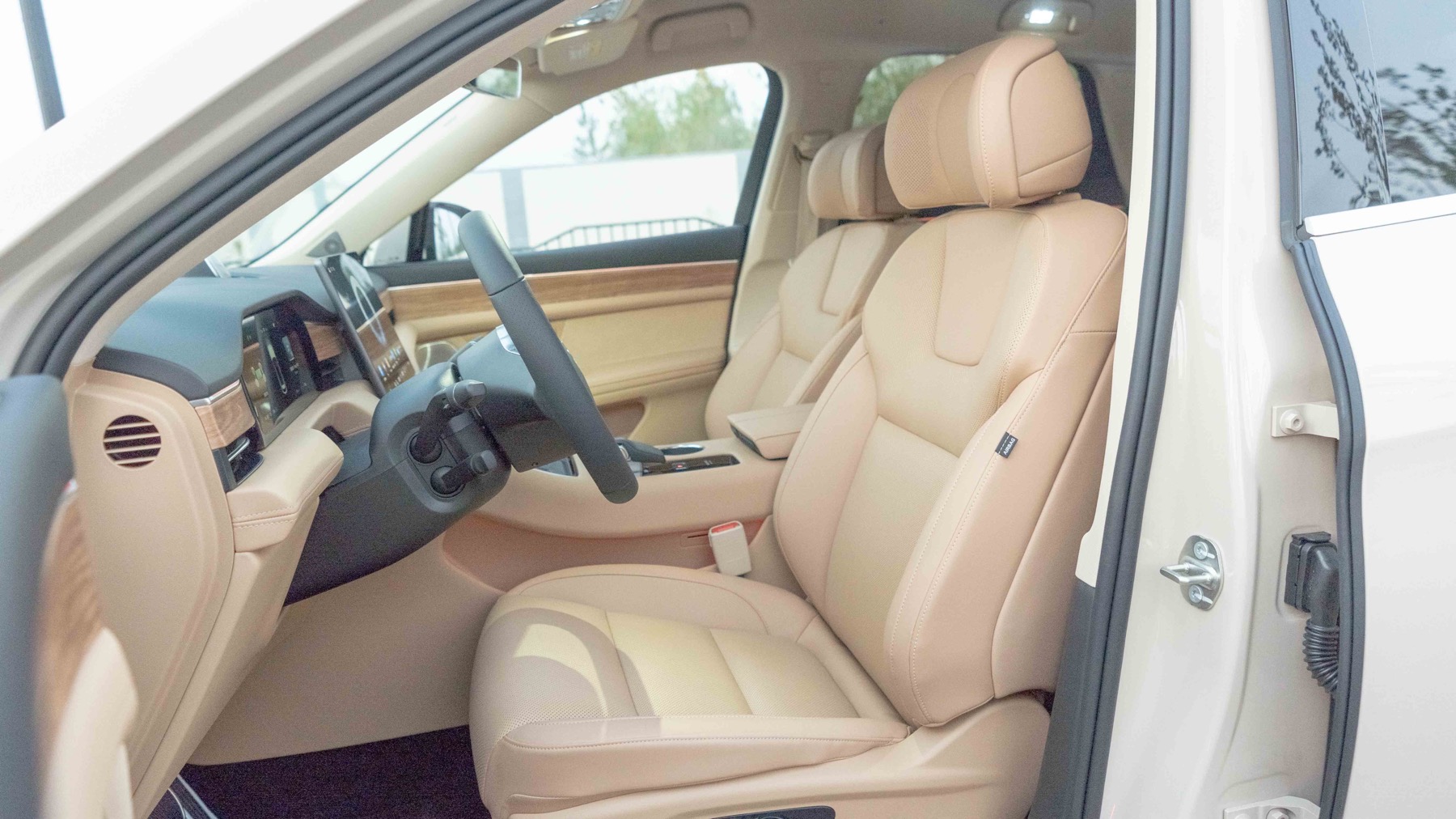
My height is 176 cm, and my weight is 100 kg. After adjusting the passenger seat to match the driver’s posture, the sitting posture in the car is as follows. At this time, there are still two fists of head space.
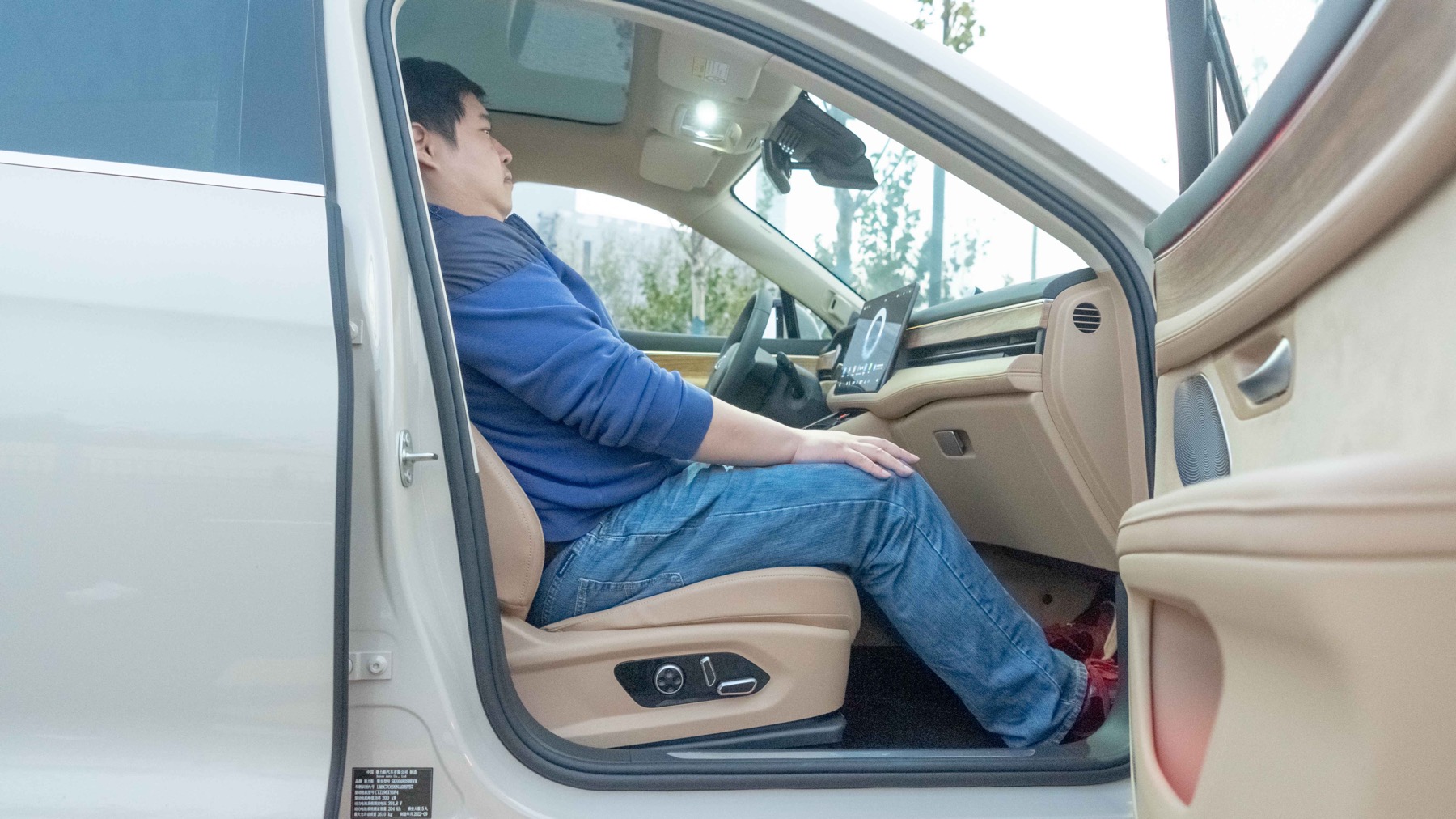
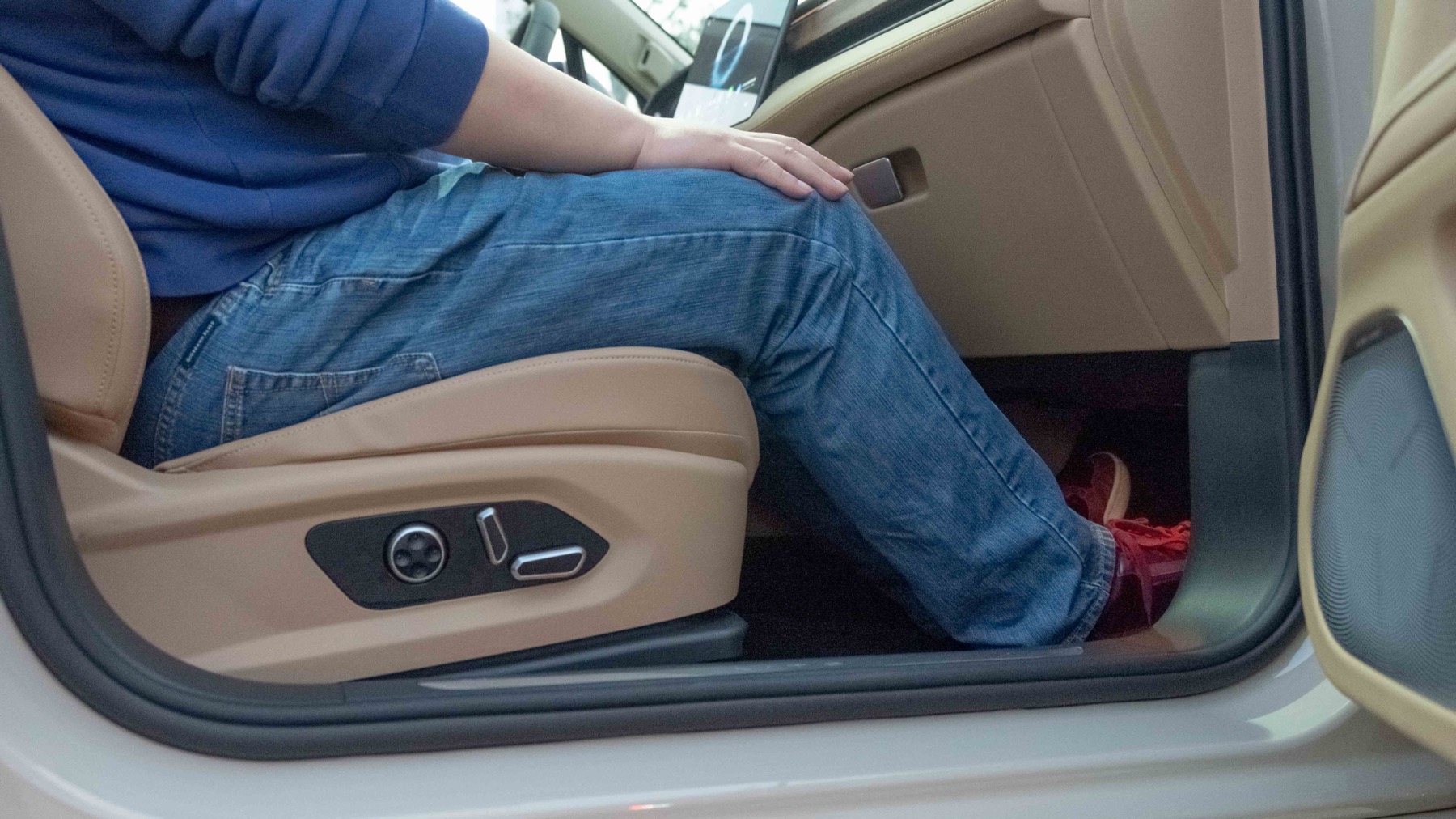
 The seats are designed with perforated leather, which supports ventilation. The seat cushion has moderate softness and hardness.
The seats are designed with perforated leather, which supports ventilation. The seat cushion has moderate softness and hardness.
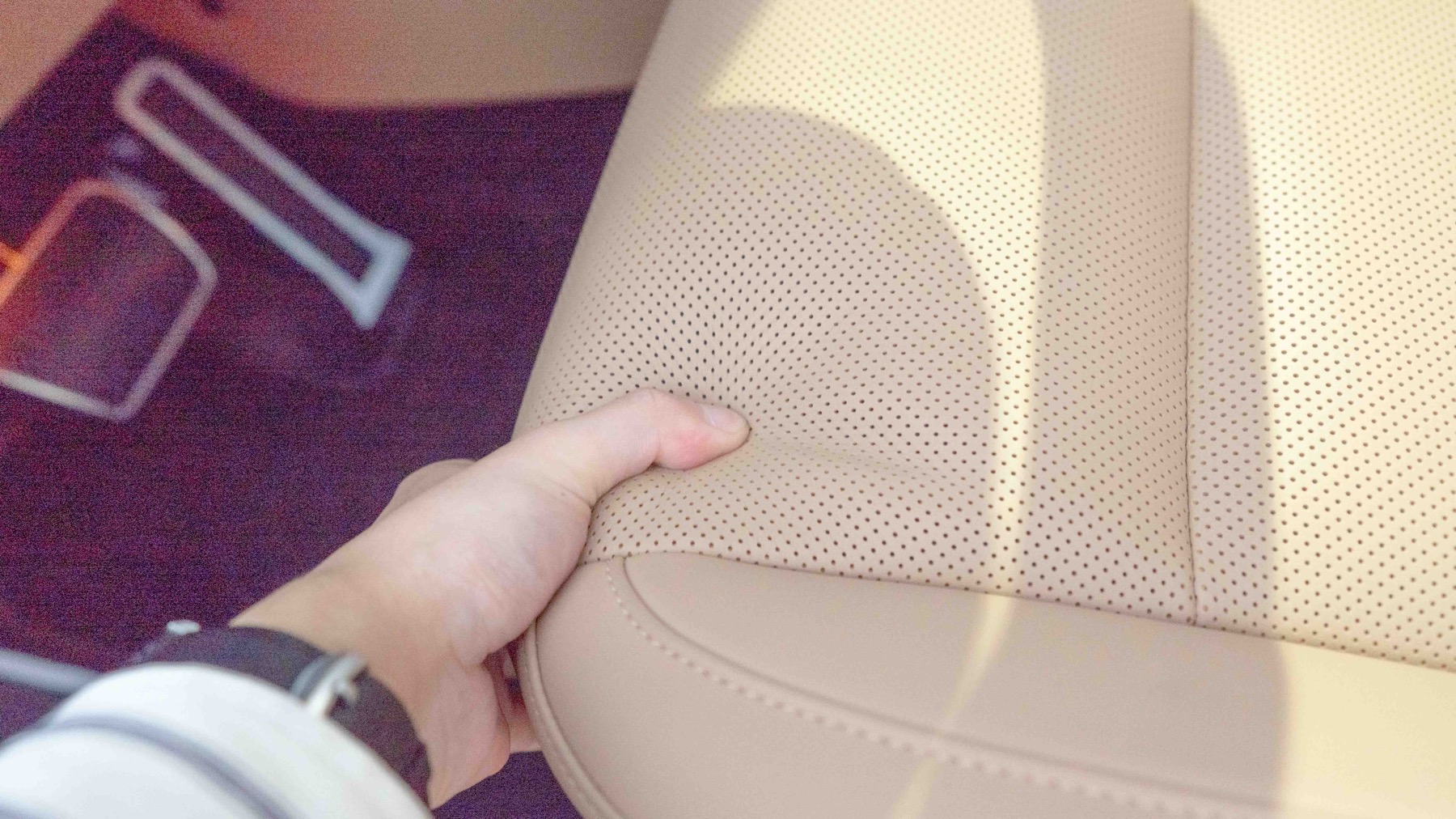
However, the backrest padding is relatively hard, and there is some back pain after long-term driving. The headrest uses a wide headrest design, which provides better wrapping for the head.


The front seats support 12-way electric adjustment and ventilation with heating. The seat massage function needs to be optional.
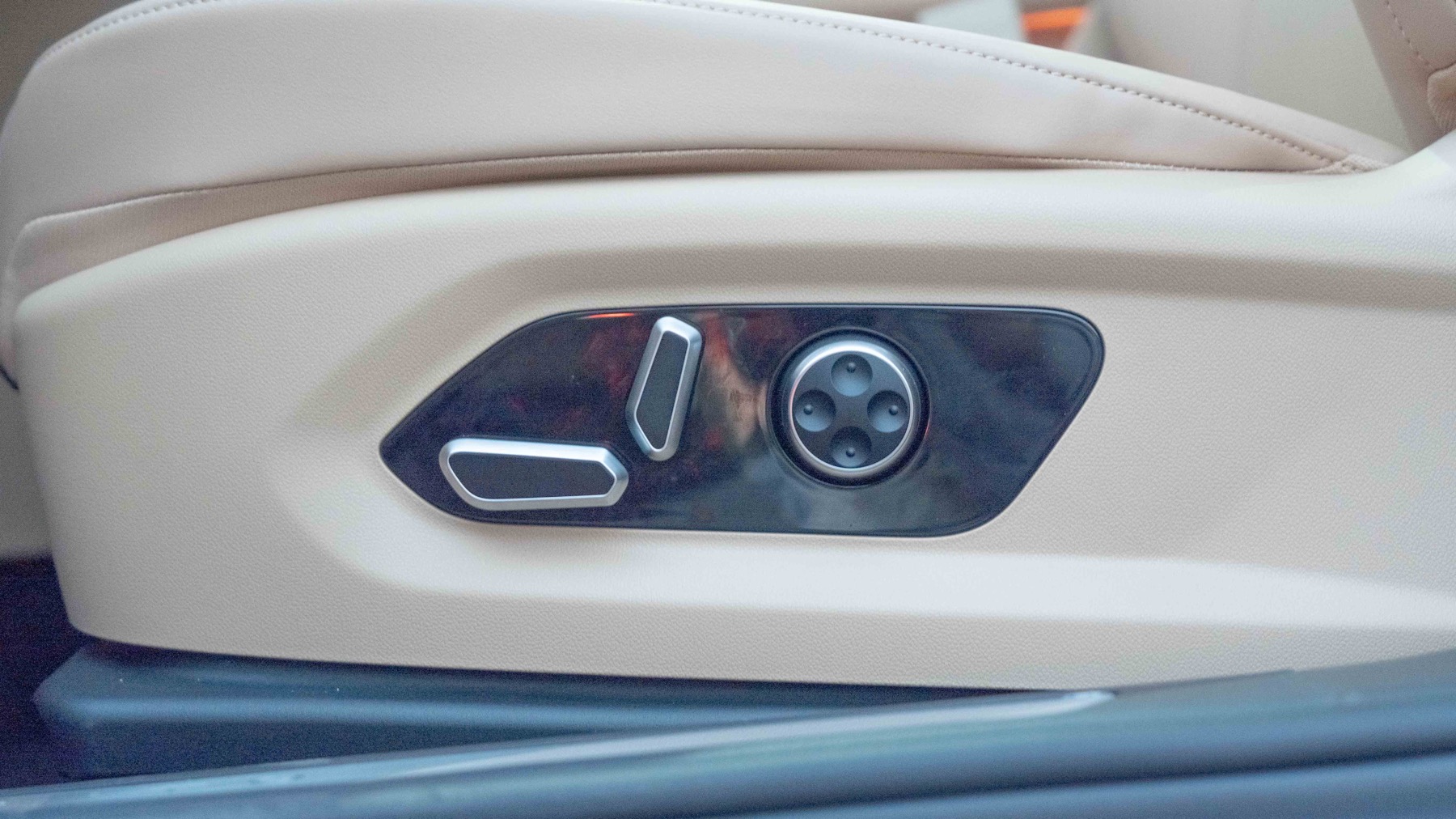
The nameplate on the passenger side identifies the core parameters of the car.
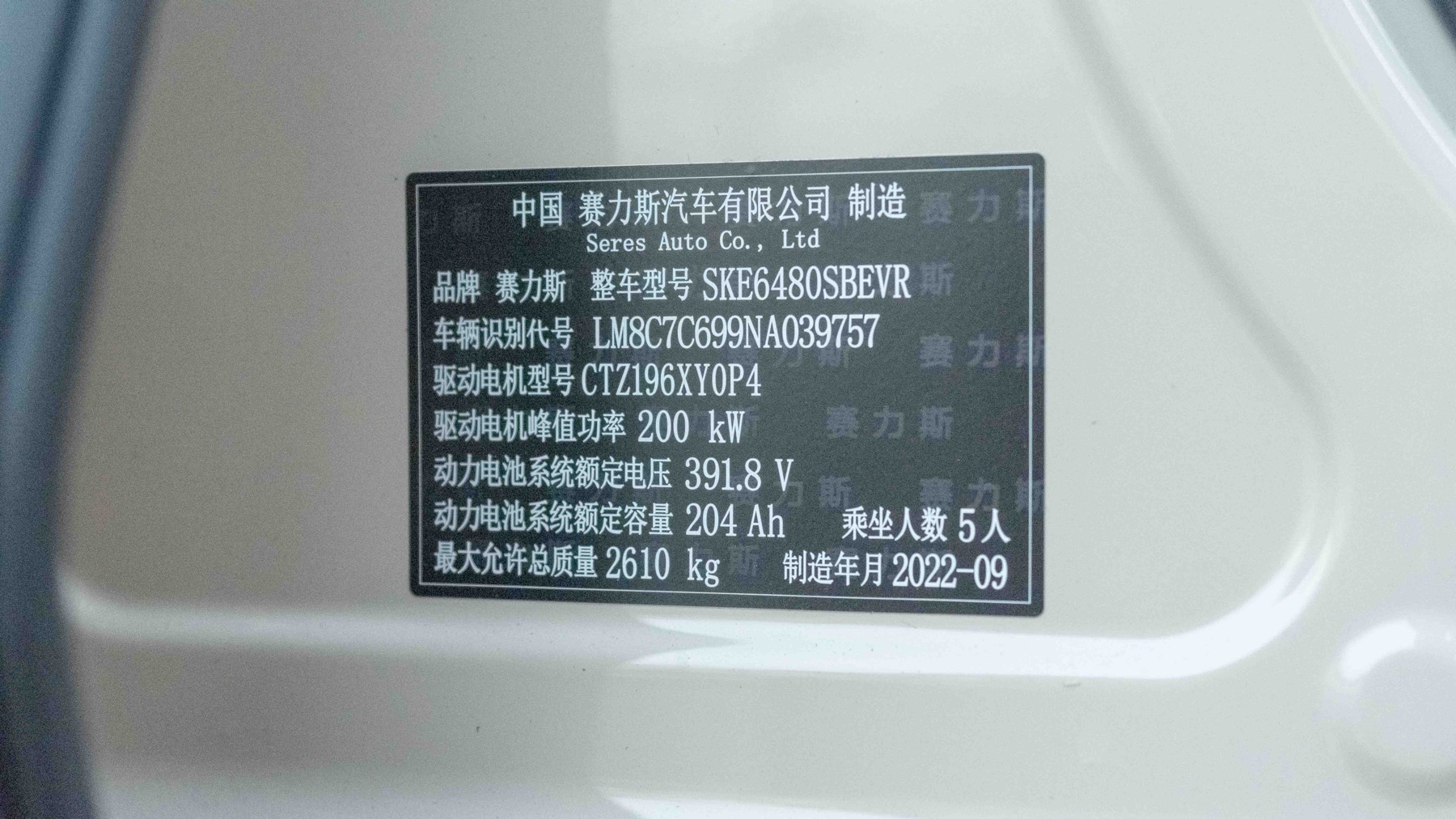
The sunroof uses a whole piece of glass. Judging from the transparency, it will be relatively hot in summer. It is best to install a sunshade yourself.
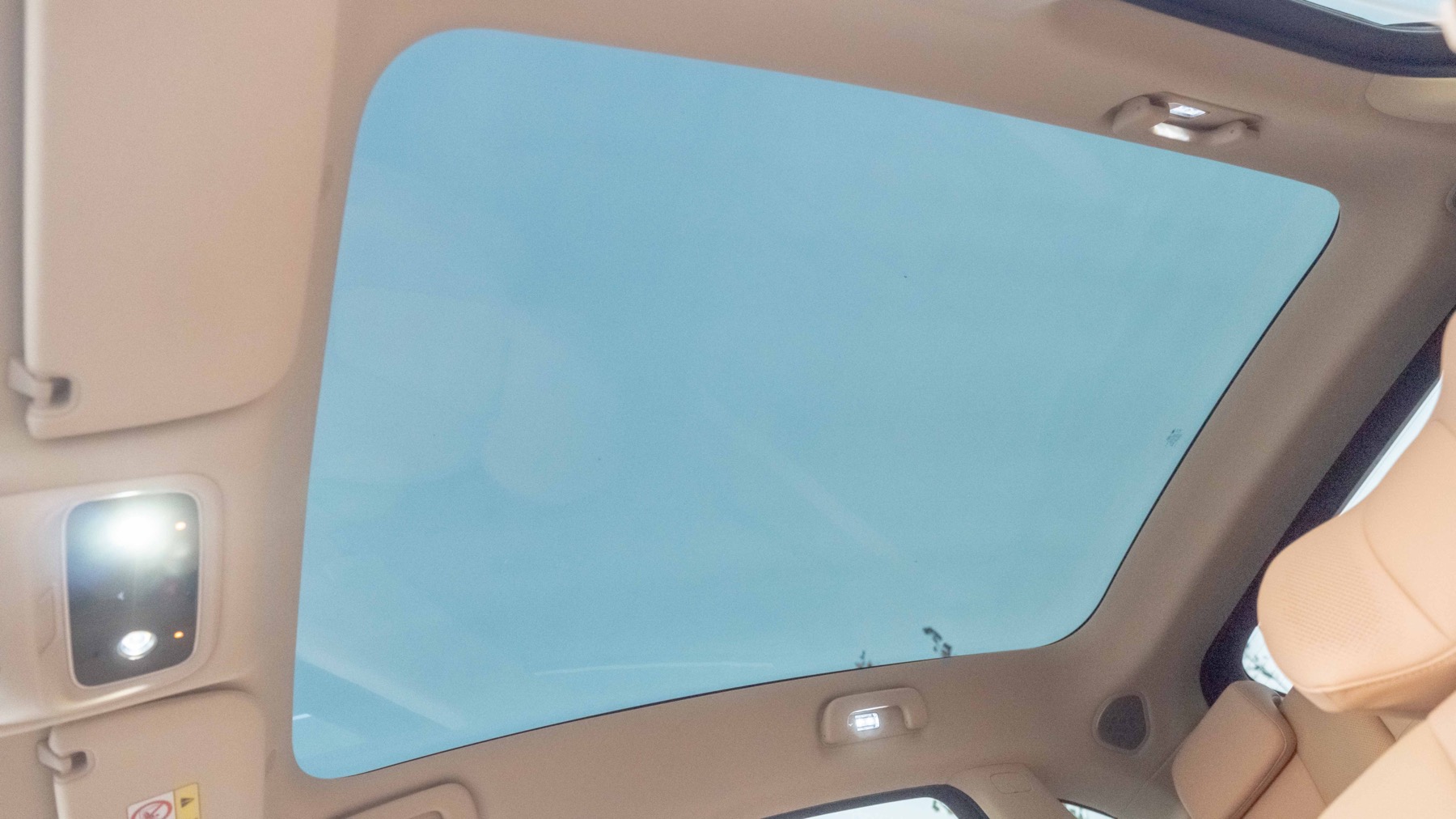
Moving to the back row, the back seat is not adjustable, and the measured dimensions are as follows.
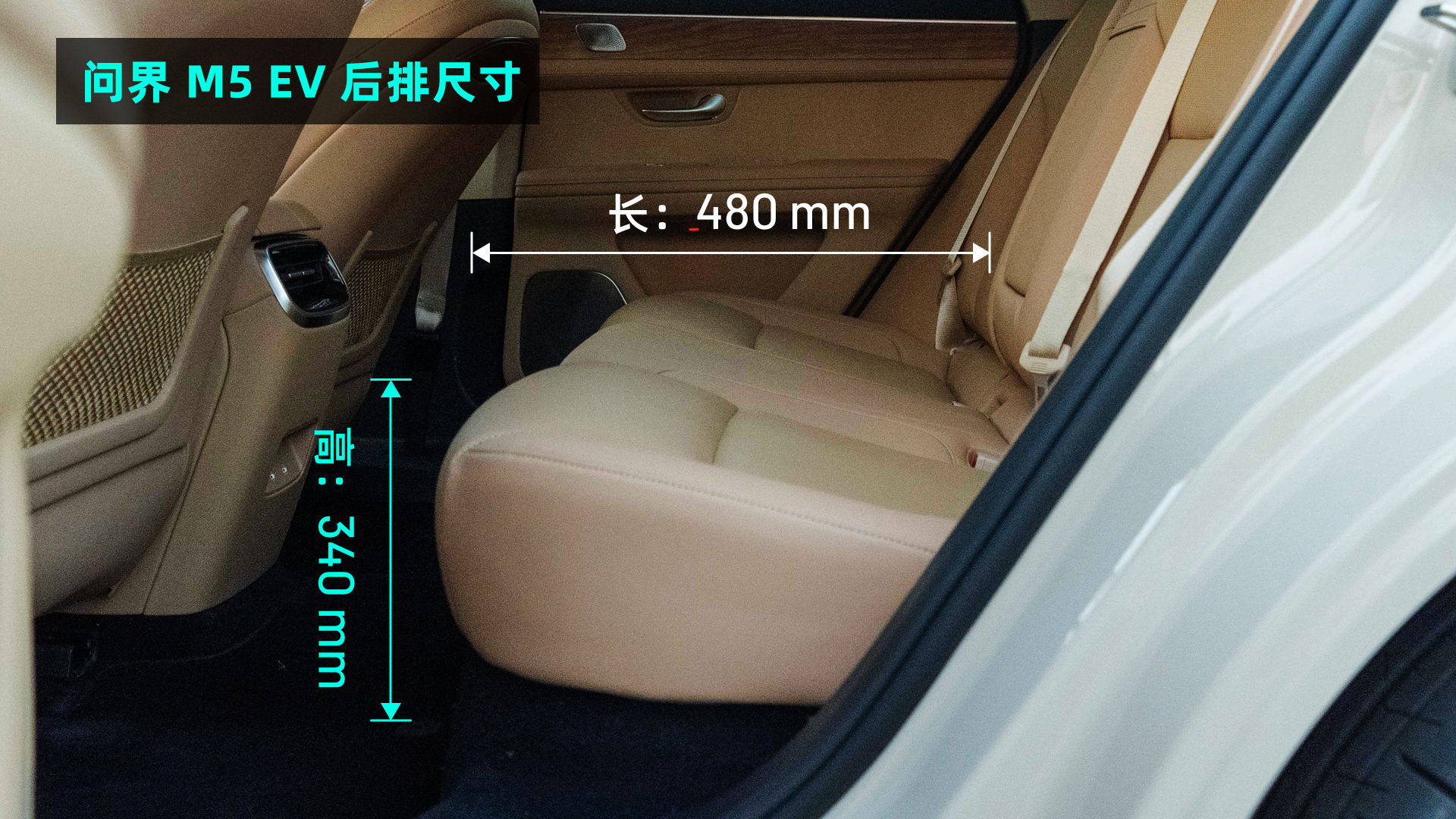
My sitting position is appropriate for the front row, and the sitting position for the back row is as follows. At this time, the space for my legs is one fist and three fingers, and the space for my head is one fist and two fingers.

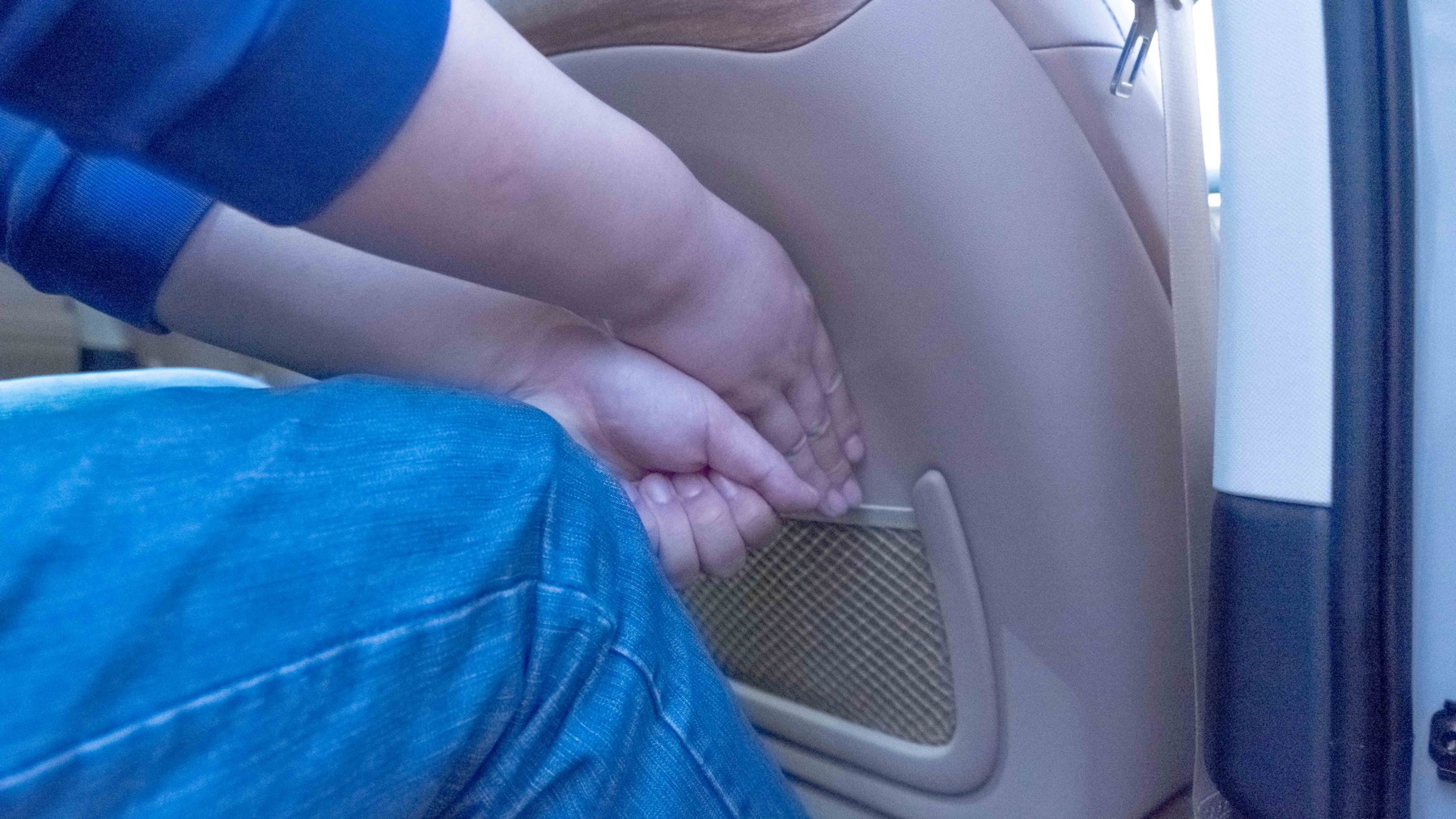

The rear seat cushion remains moderately soft, and only the backrest of the middle seat is relatively hard. All three headrests support up and down adjustments.

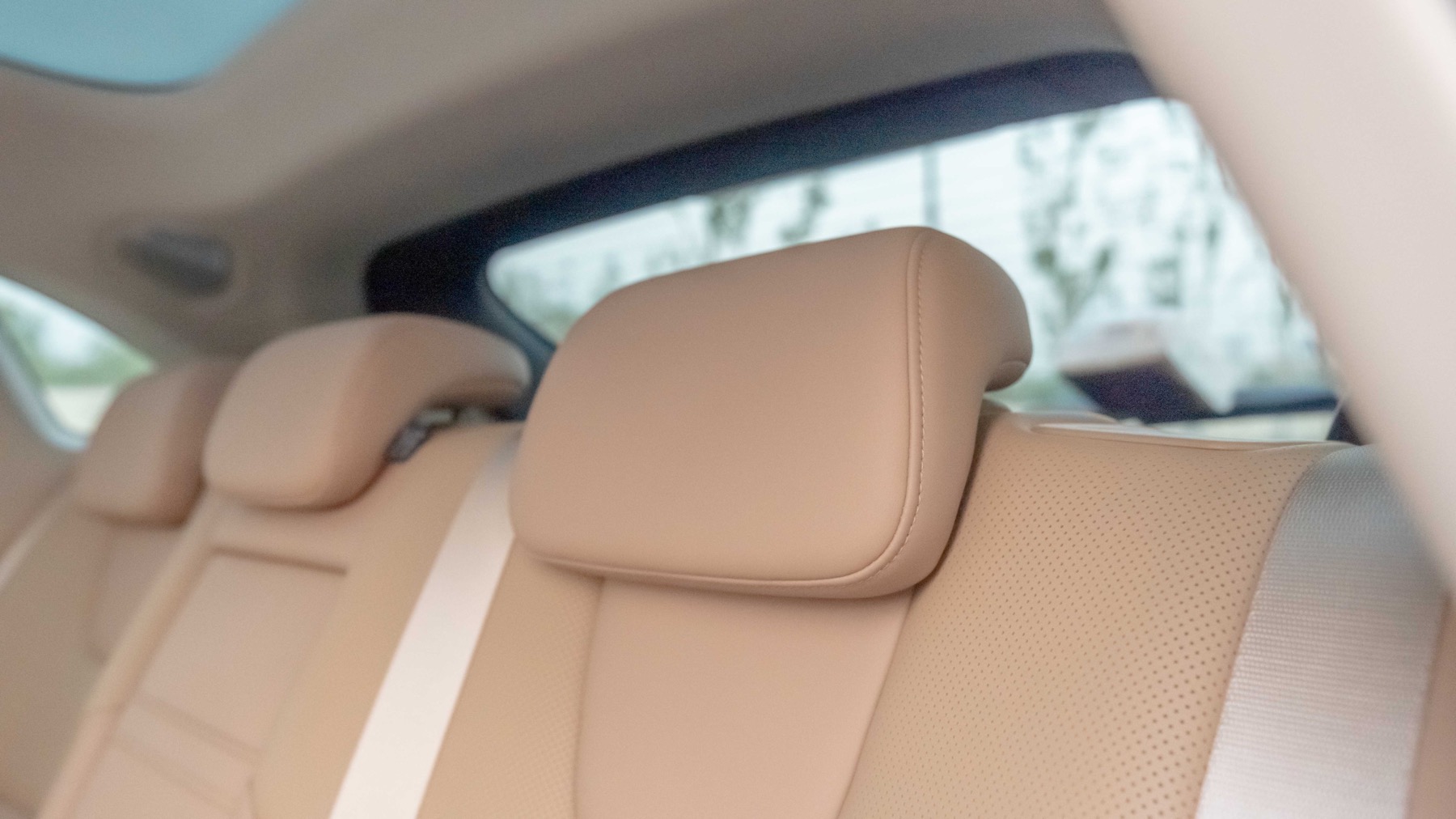
There are two air conditioning vents with physical adjustment at the back of the rear armrest box, and there are two USB C ports below with maximum power of 66W and 18W respectively.


The backrest of the front seat is also decorated with wood grain panels, and it must be said that the Wenshijie series really likes to use wood grain panels. There is a mesh pocket below each seat for storing small items.
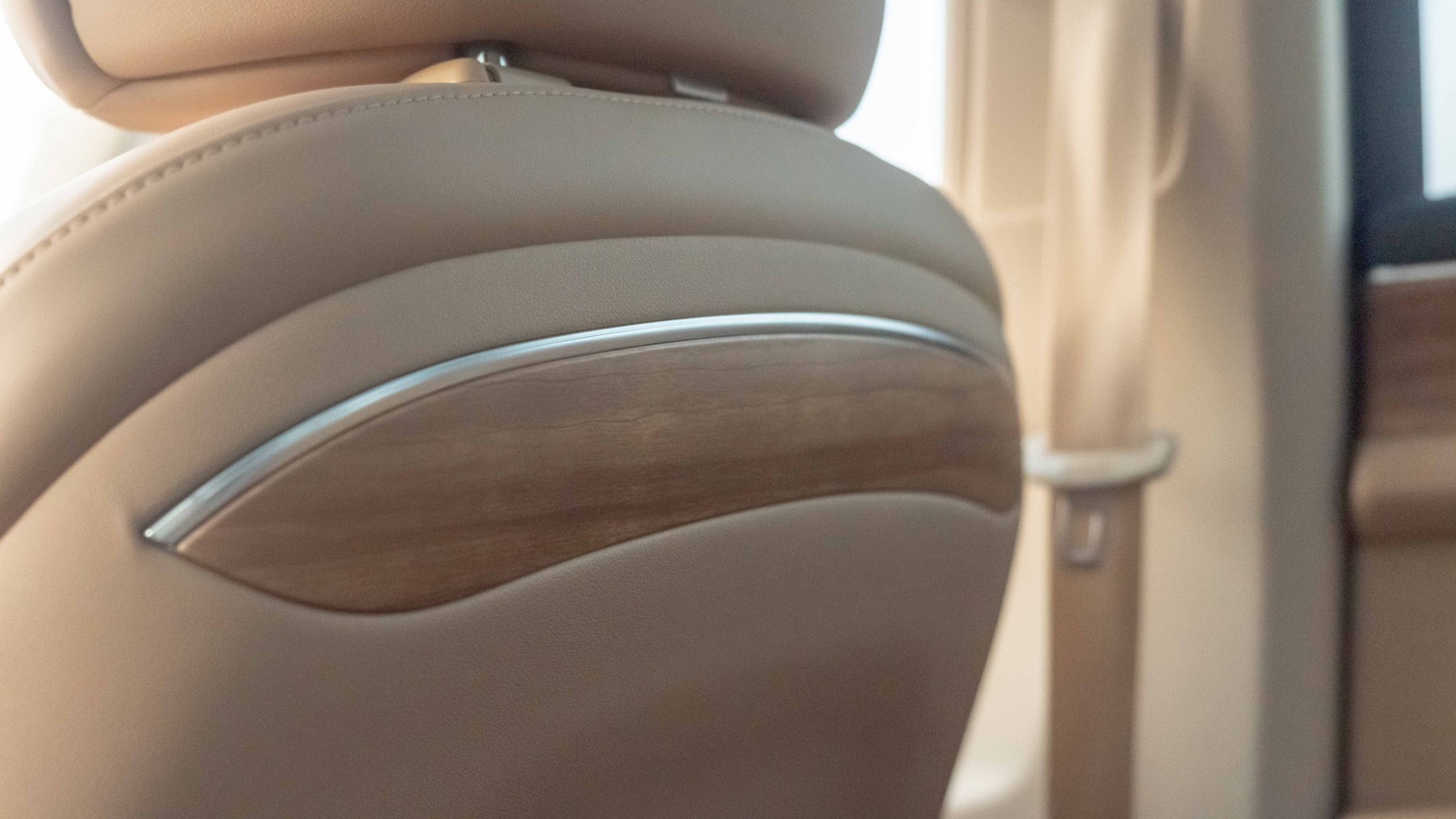
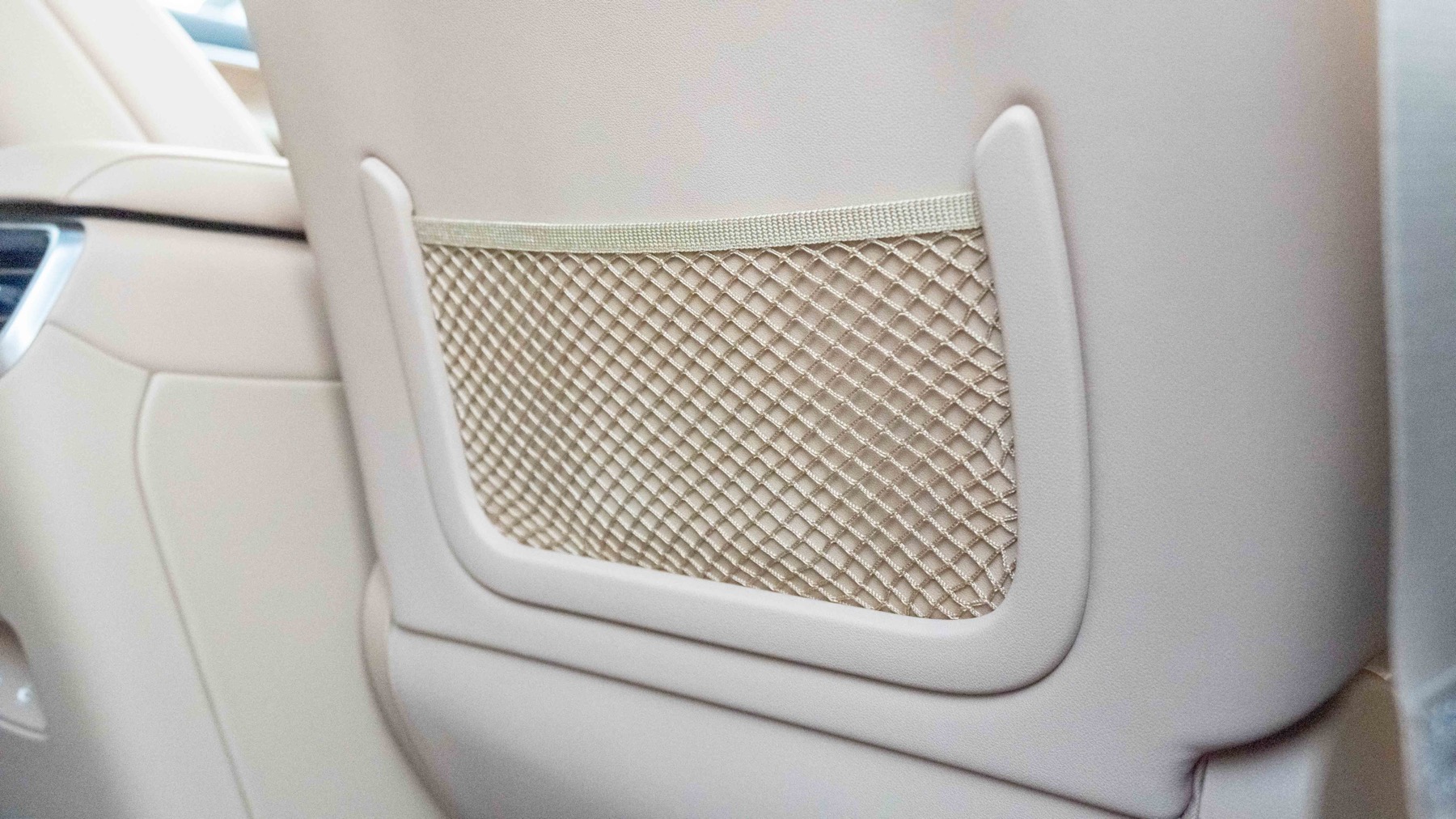
The top reading lights in the back row have physical switches, and there is a voice recognition microphone next to them.
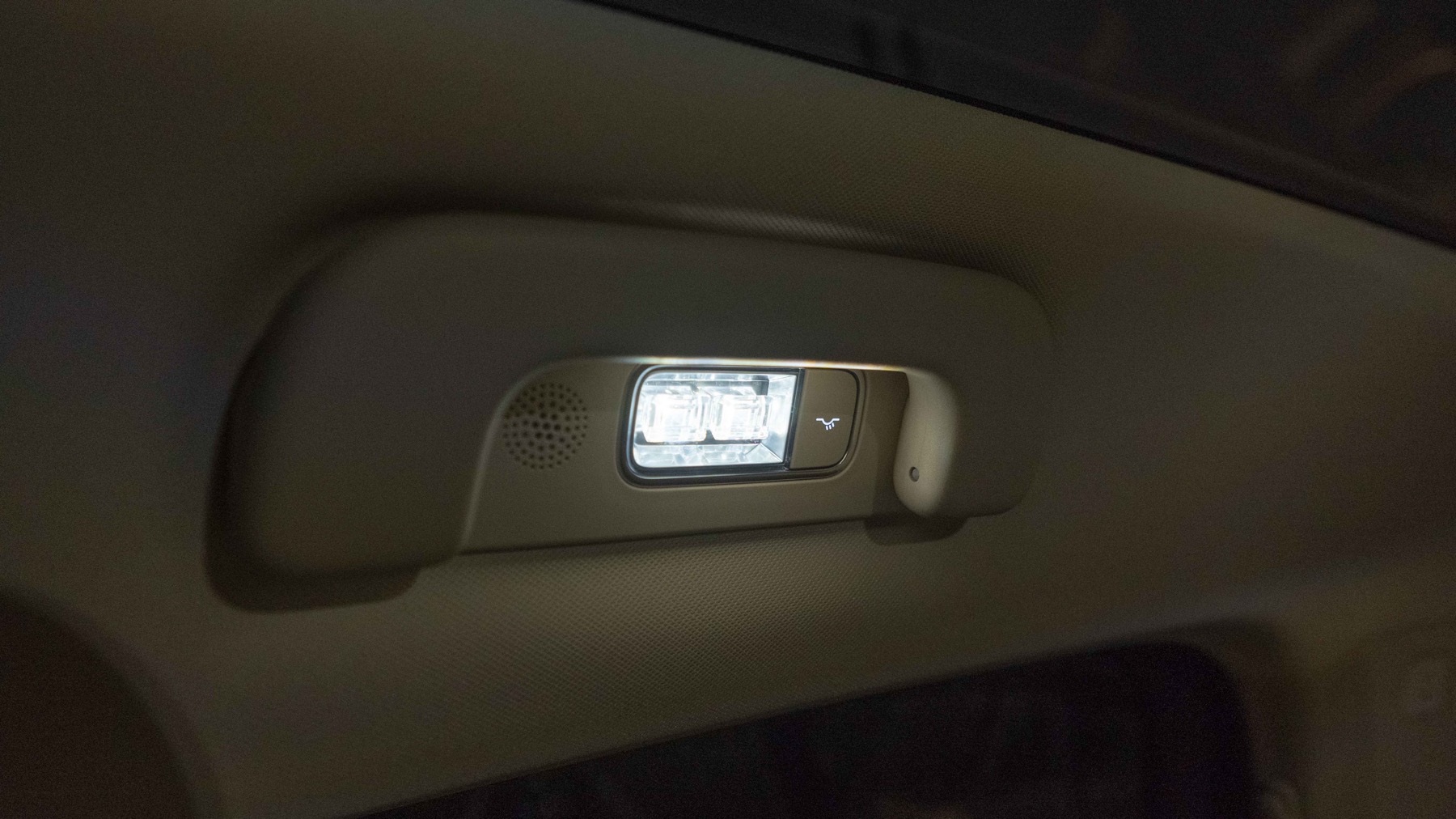
The rear windows also use double-layer laminated privacy glass, but the windows cannot be lowered completely.
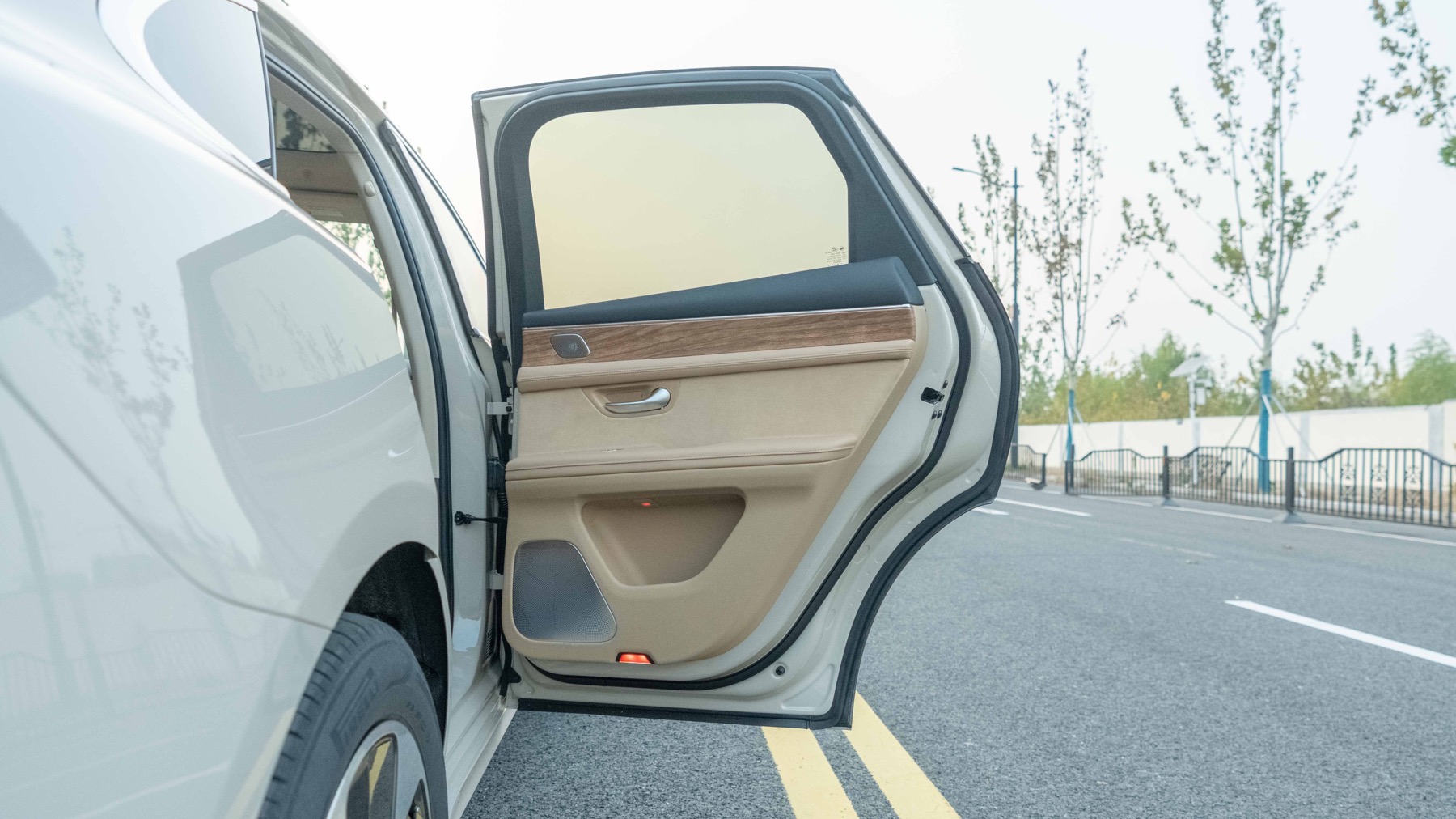
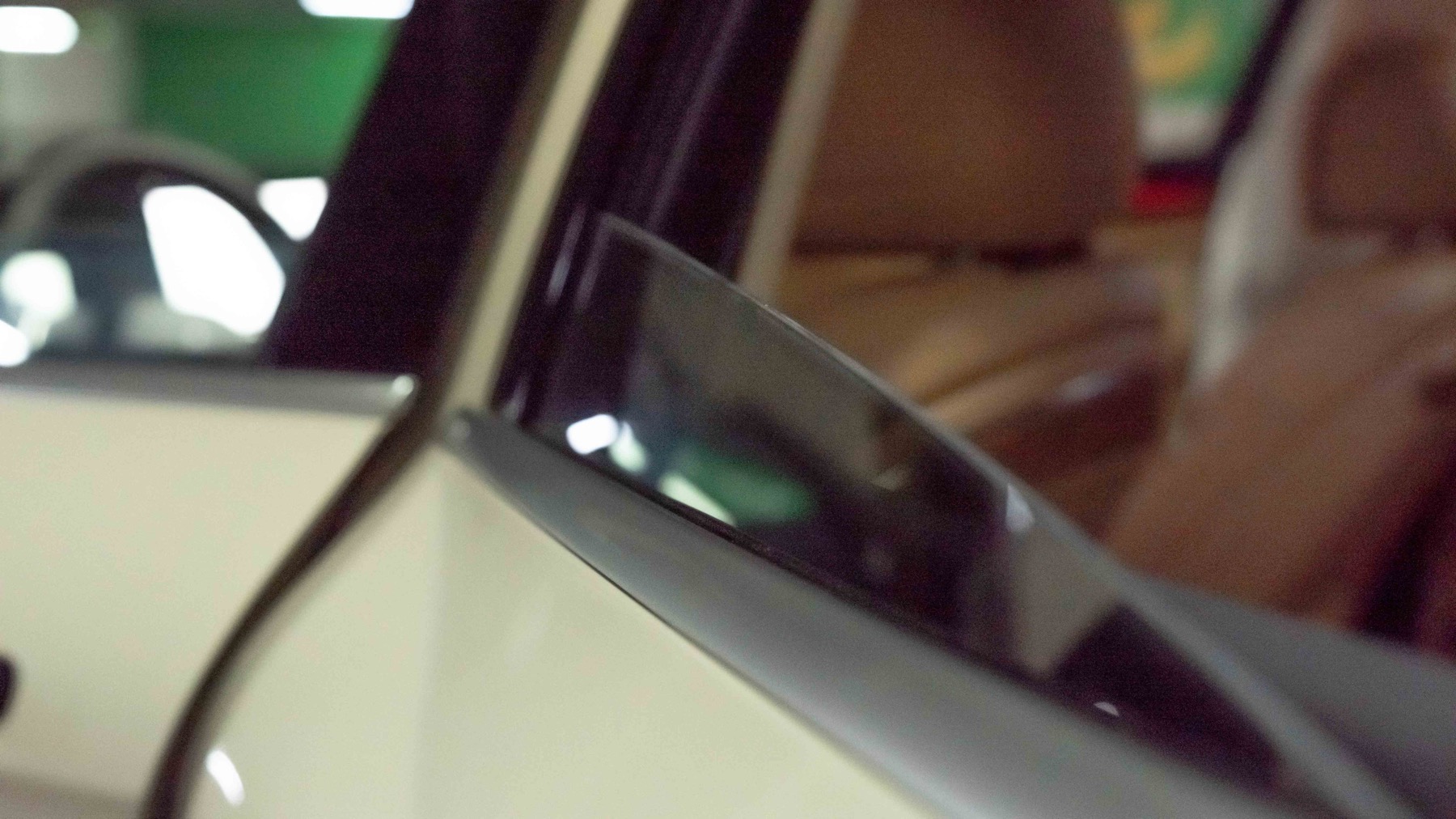
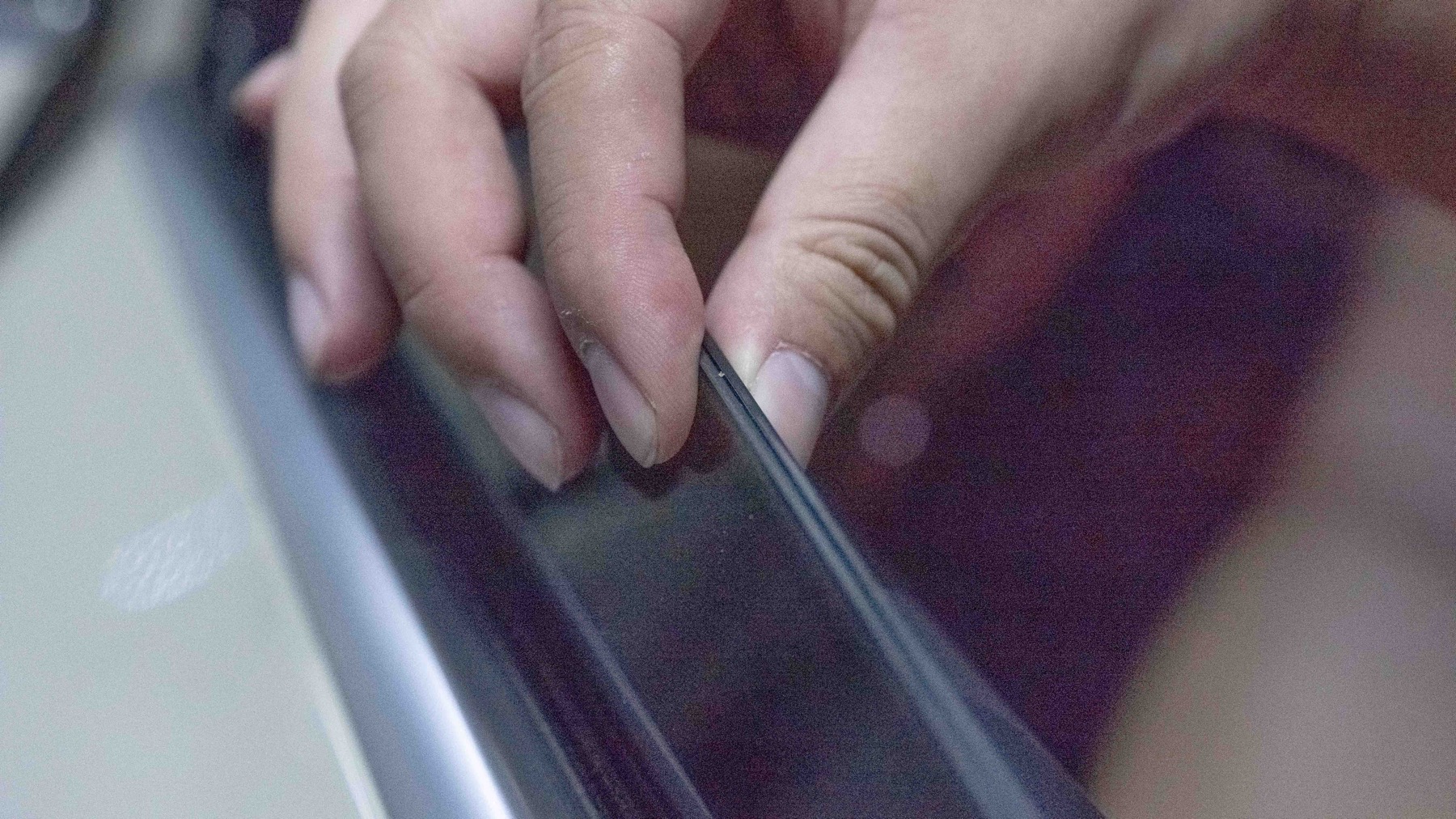
The rear door panel storage space can hold two bottles of mineral water, and there are still two speakers on the door panel.
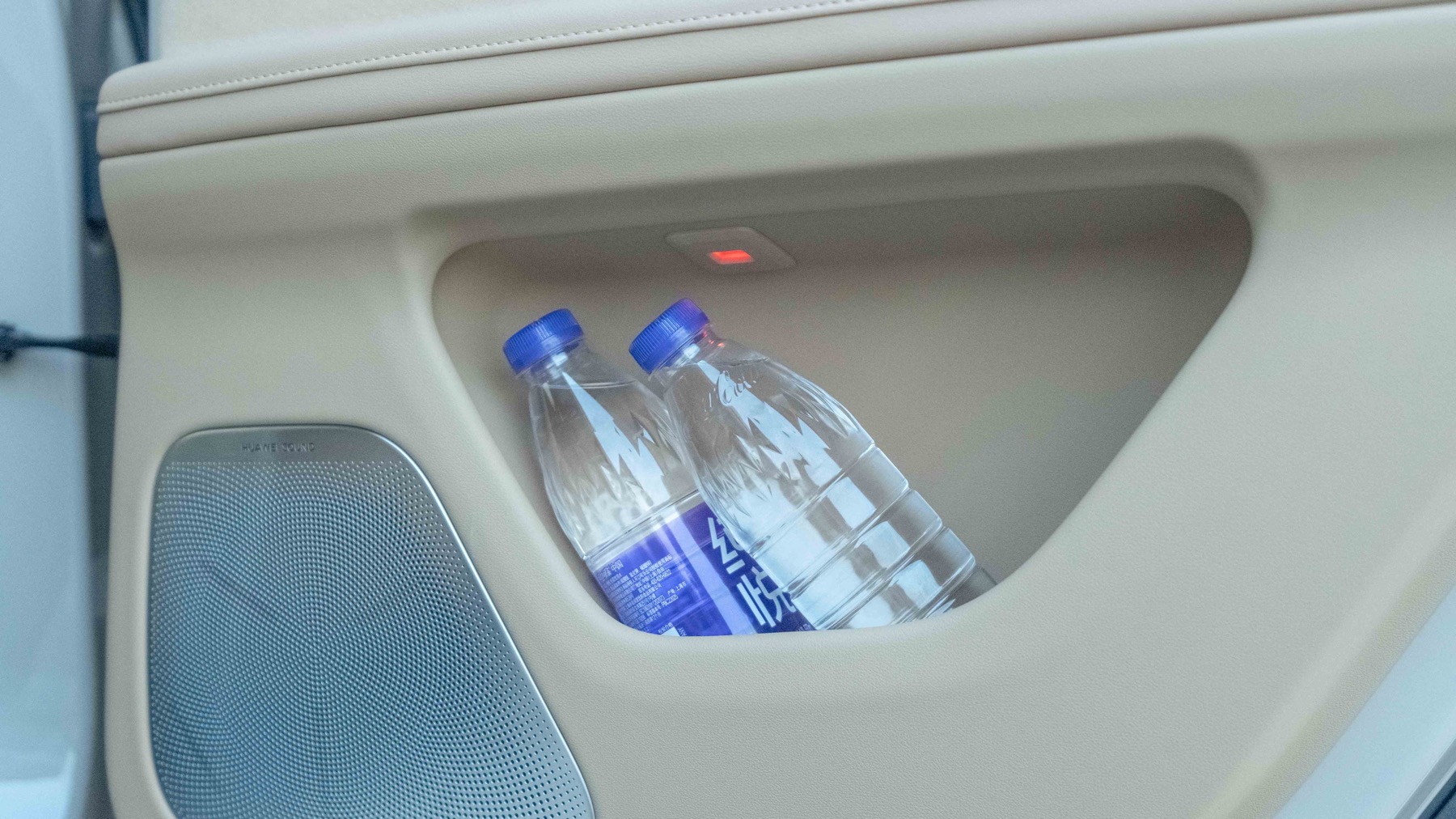
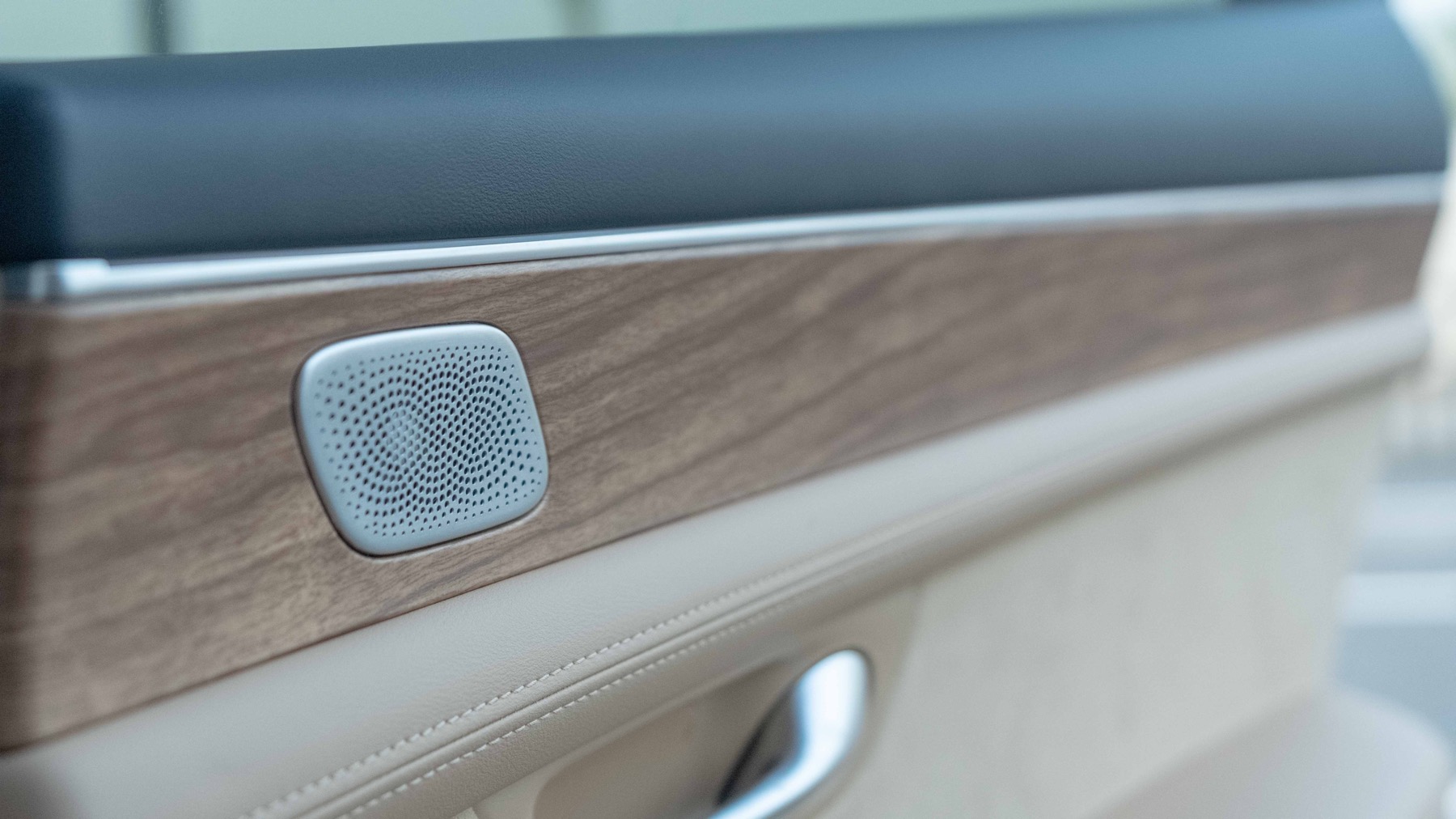
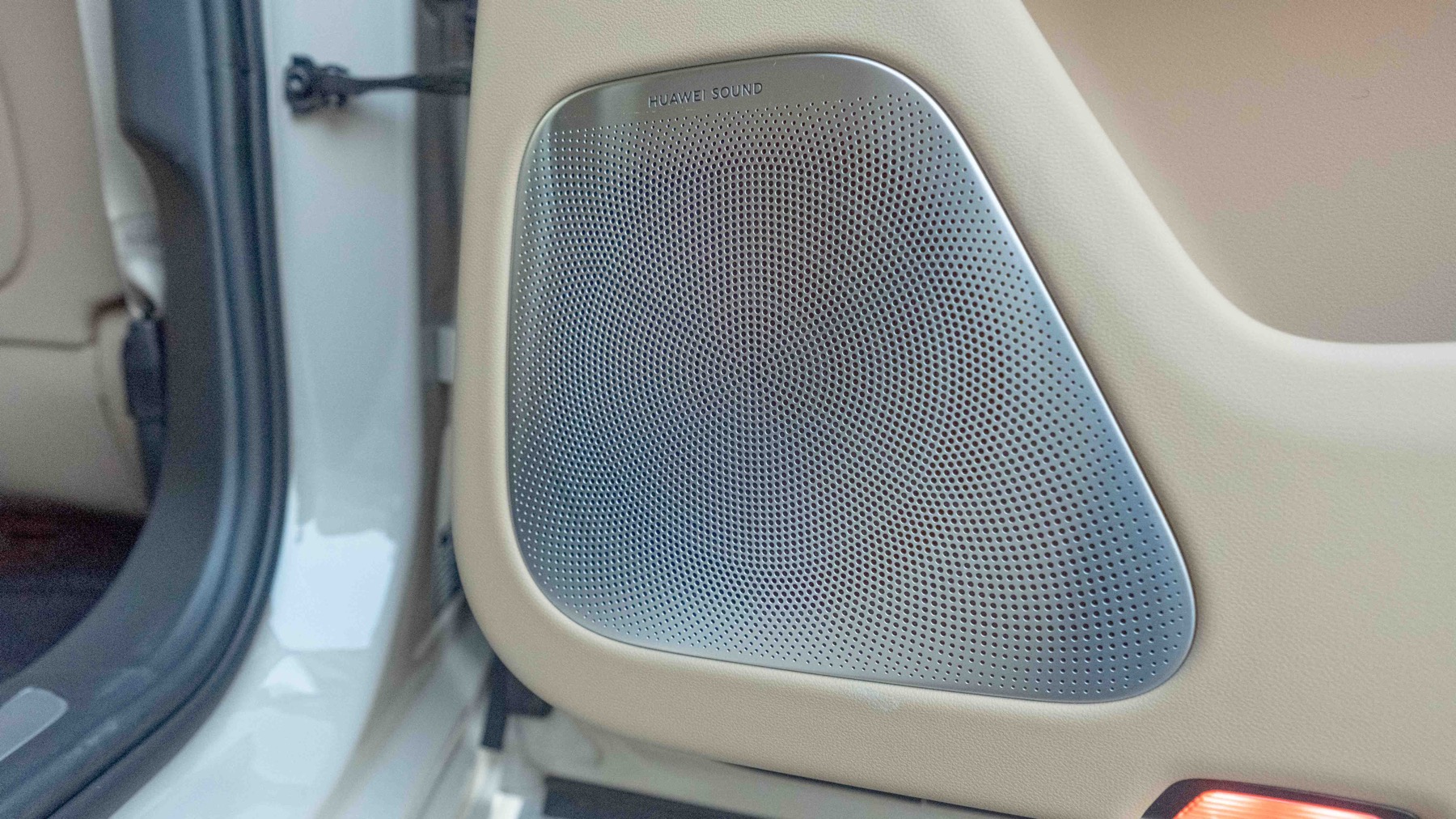
The ambient light of the M5 EV is generally dim, even when adjusted to the highest brightness level, it is only visible at night. Here are some actual photos for everyone to see.



Thus, the interior part is basically introduced. To summarize, although the M5 EV may be more popular among young female car owners in terms of appearance, this set of brown interiors is not youthful enough, and perhaps changing to other colors would be better.
Advanced Driving Assistance: Can Be Used, but Not Easy to Use
At the press conference, Yu Chengdong briefly mentioned the M5 EV’s advanced driving assistance with the phrase “L2-level advanced driving assistance is standard across the board.” This is because, like other Wanjie models, the M5 EV still uses the solution of a single camera from Bosch + front millimeter-wave radar.## So after driving this car on the road, I didn’t have high expectations for its assisted driving performance. However, its actual performance is still commendable.
To enable the assisted driving of the Wanjie M5 EV, press the directional indicator button on the left side of the steering wheel. With one click, the vehicle will enter the ACC adaptive cruise mode, and as it drives for a period of time and recognizes the lane lines, it will enter the LCC lane-keeping mode.
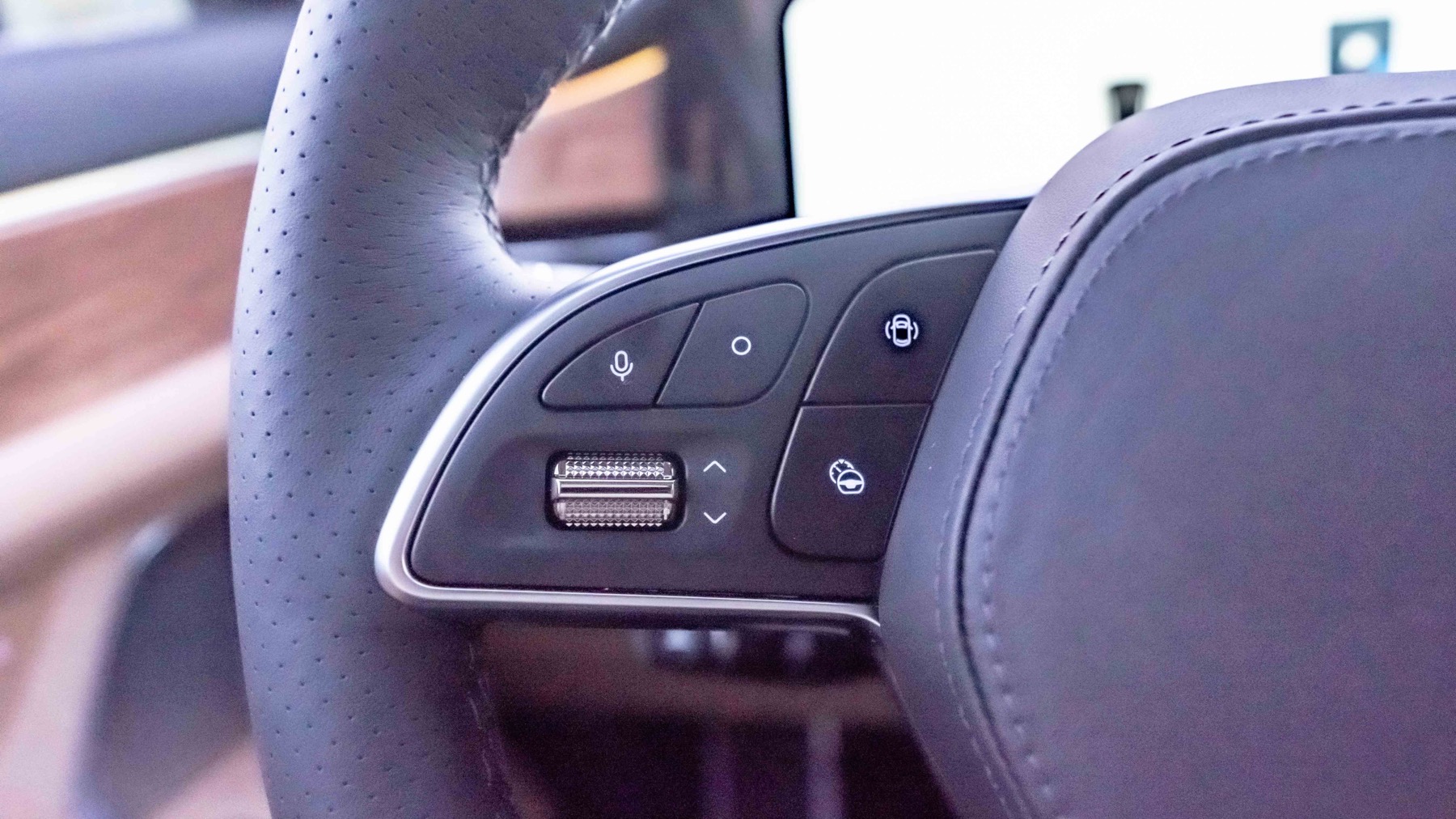
To operate the assisted driving function, move the switch located to the bottom of the directional indicator lever on the left side of the steering wheel in the following manner:
- Move the switch up to increase speed by 5 km/h or down to decrease speed by 5 km/h.
- Move the switch forward once to adjust the speed to match the current speed, and move it backward once to exit the assisted driving state.
- Rotate the left knob forward once to move the car closer by one position or backward once to move it further by one position. There are 4 positions for distance settings.
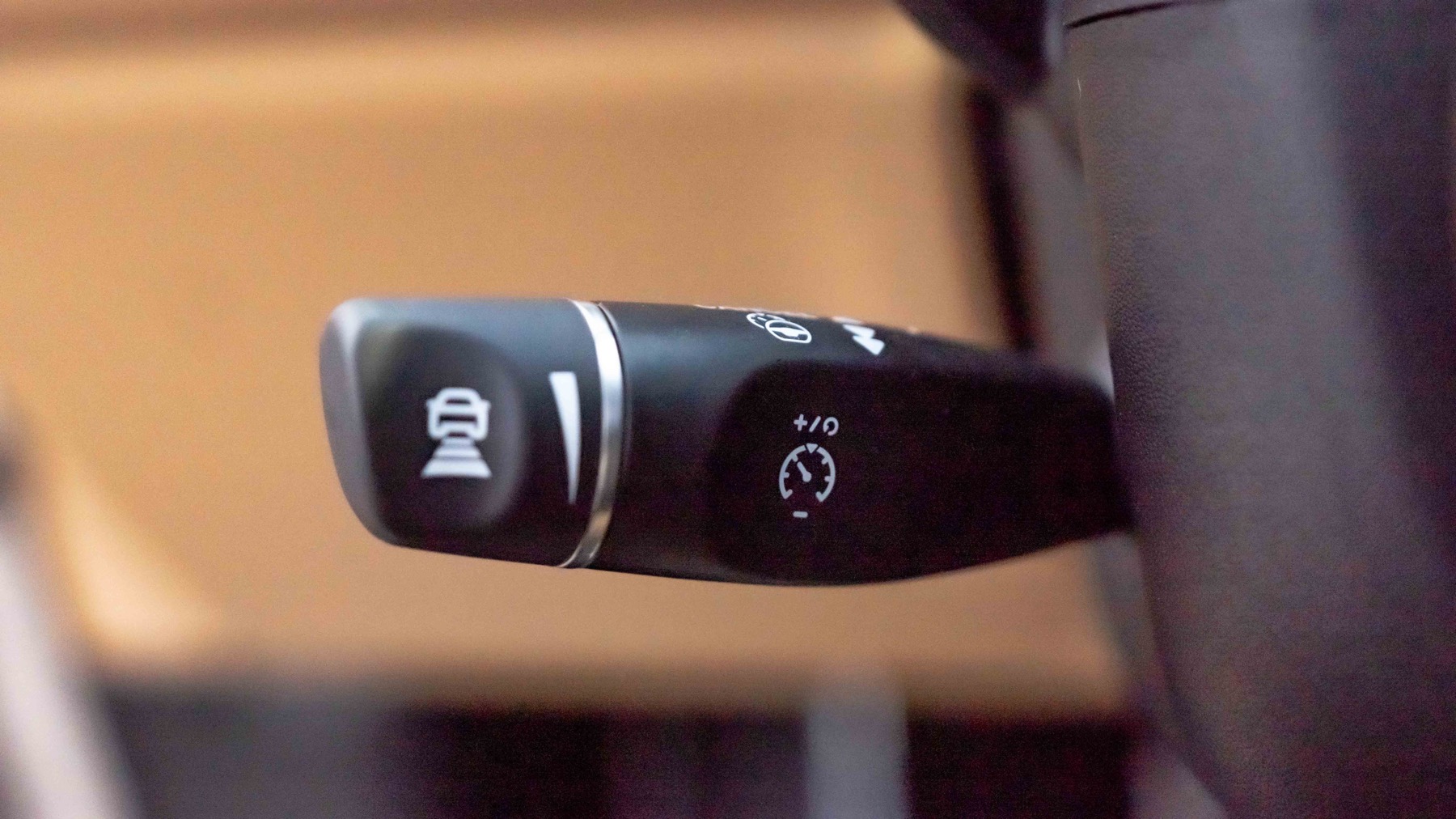
As 42Test does not perform detailed testing of assisted driving as 42Mark does, I would like to talk about the assisted-driving performance during a test of endurance driving.
Firstly, after enabling the LCC function, the vehicle’s lane-keeping ability is quite stable, and its lateral control ability ranks high among the innumerable Bosch-scheme assisted-driving options. The reason for saying “quite stable” is that even when driving in a straight line, it’s still noticeable that the steering wheel will make occasional small left or right adjustments.
As for turning ability, there is no problem handling curvatures with radii less than 100 km in outer rings and on highways while travelling at speeds below 100 km/h. However, don’t try to challenge tightly curved turns on interchanges. Many vehicles with Nvidia schemes cannot handle them well.
In terms of longitudinal control, there are many shortcomings. First, even when the car-distance setting is adjusted to the closest position, the distance to the preceding car is still relatively far when driving at low speeds. It appears to be at least 6 meters away, making it easy for other drivers to cut in.
Additionally, when the car comes to a stop, if it is far from the preceding car, there will still be a significant amount of braking about 6 meters from the preceding car, followed by slowly catching up to within about 3 meters. The brake control is rather poor, with multiple unnecessarily harsh brakes causing very uncomfortable rides to passengers in the car.The vertical control also has a highlight. When a vehicle with a higher speed than the current speed changes lanes to the front of the vehicle, even if the distance is close, the vehicle can recognize that the preceding vehicle is faster and will not apply brakes.
In summary, the assisted driving of the WENJIE M5 EV can be used on highways with fewer vehicles, which has a certain guarantee of basic experience and safety. However, it is not recommended to use it on city highways or congested roads with more vehicles, which may result in being cut off or causing multiple heavy brakes, leading to a poor user experience.
Conclusion
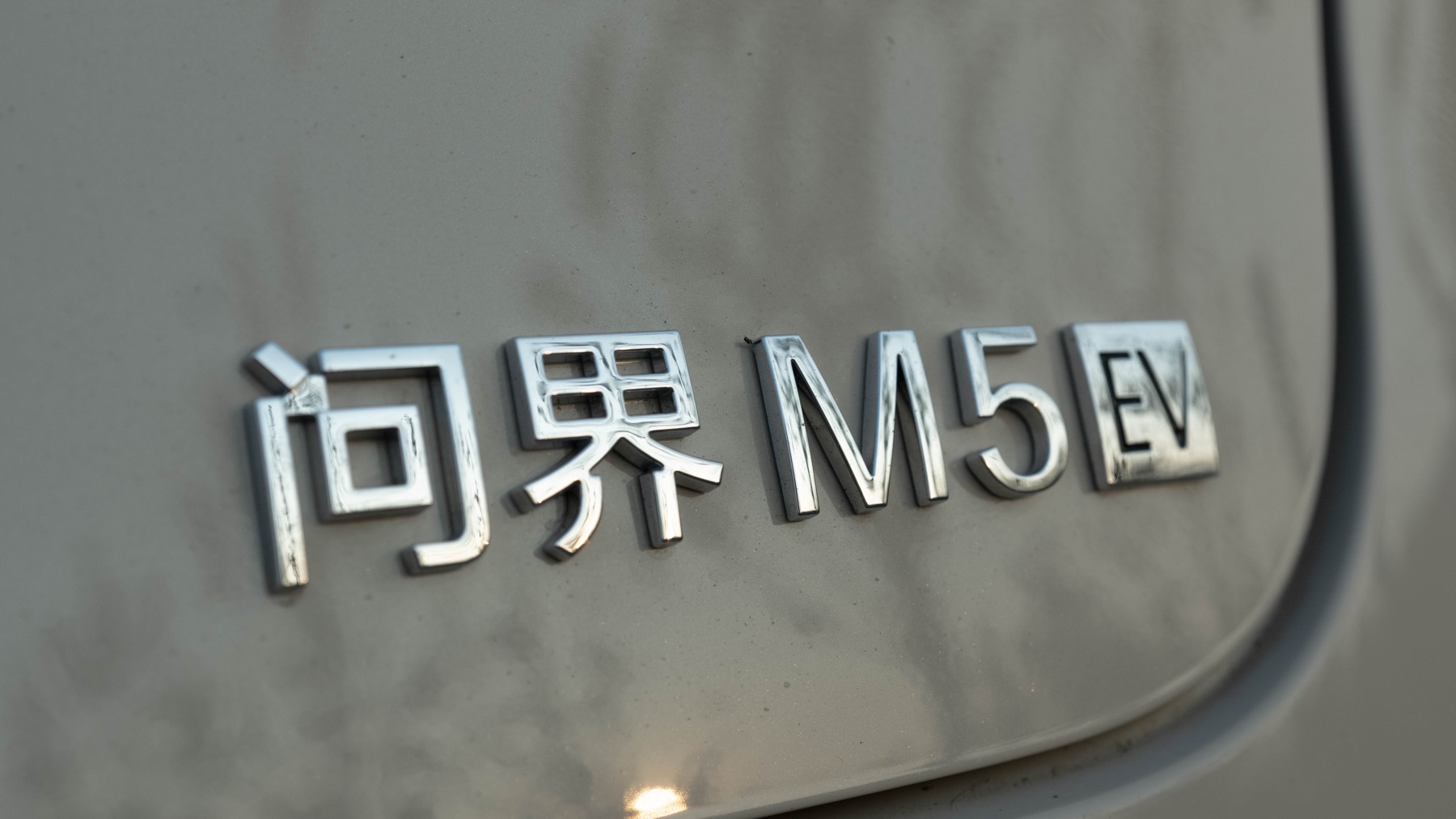
Now, it’s time to draw a conclusion for WENJIE M5 EV. It continues the consistent advantage of the WENJIE series in the intelligent cabin, and its HarmonyOS ecosystem undoubtedly makes it the favorite of Huawei users.
The HUAWEI DriveONE pure electric drive intelligent platform and HUAWEI DATS dynamic adaptive torque system did not significantly improve the endurance performance according to the actual test data, which makes people worry about the endurance of the dual-motor version.
Mechanical quality has never been a strong point of the WENJIE series, but it has achieved the best level on M5 EV so far. The slightly sporty tuning style makes the chassis and suspension relatively neat, but the steering feel falls short, making people feel that this car is not so sporty.
The appearance is not up to me to decide whether it looks good or not, but the overall evaluation in our garage is very good. The Warm Star Cloud color should attract many female users. As for the interior, the brown color scheme looks a bit old-fashioned, and young users may prefer other colors.
Regarding assisted driving, let’s wait for WENJIE M9, which is rumored to be equipped with Huawei’s full set of assisted driving solutions next year.
The WENJIE M5 EV is undoubtedly a first-tier model in terms of intelligent cabins, but is it a model that leads “far ahead” in all aspects? Apparently not.
This article is a translation by ChatGPT of a Chinese report from 42HOW. If you have any questions about it, please email bd@42how.com.
